November 19, 2020 - Pima Air and Space Museum
|
|
I spent the day leisurely touring the world-class Pima Air and Space Museum. I have been here once before, back in 2014: Link.
|
| |
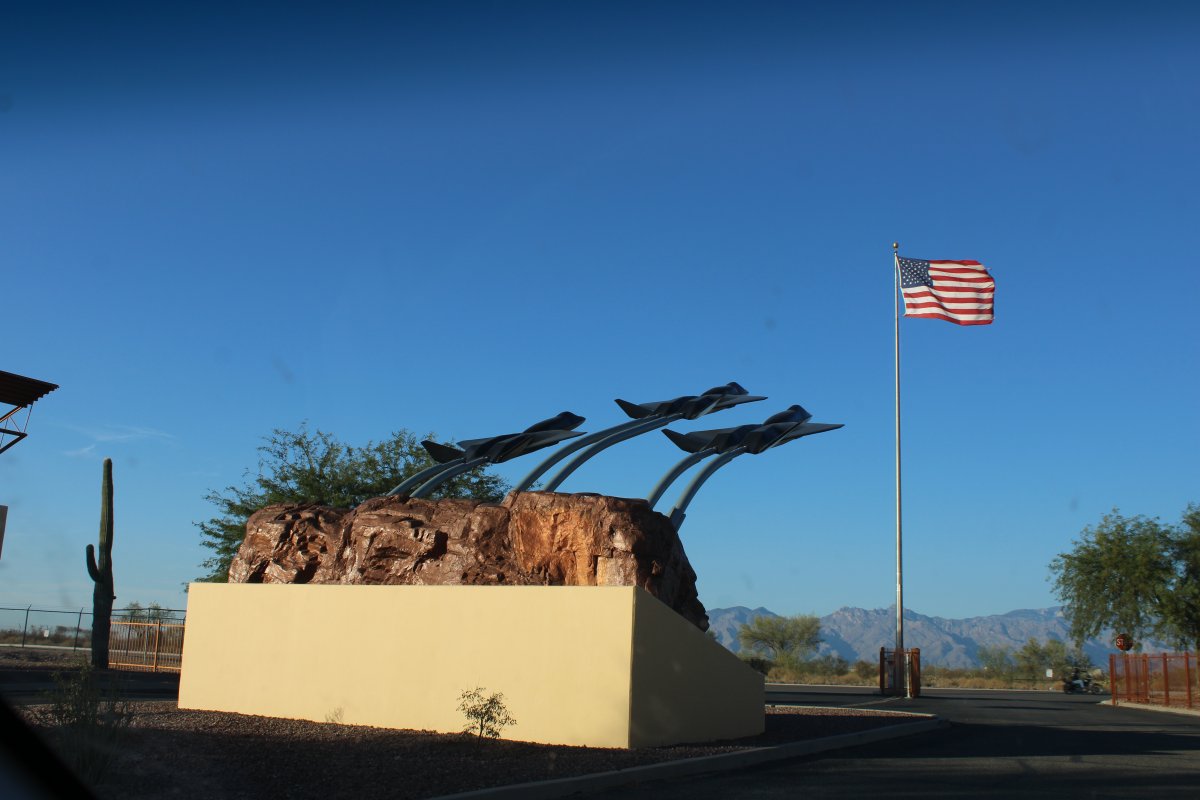 |
|
|
One of the planes I remembered from six years ago was this gleaming F-4 Phantom in Thunderbird colors.
|
| |
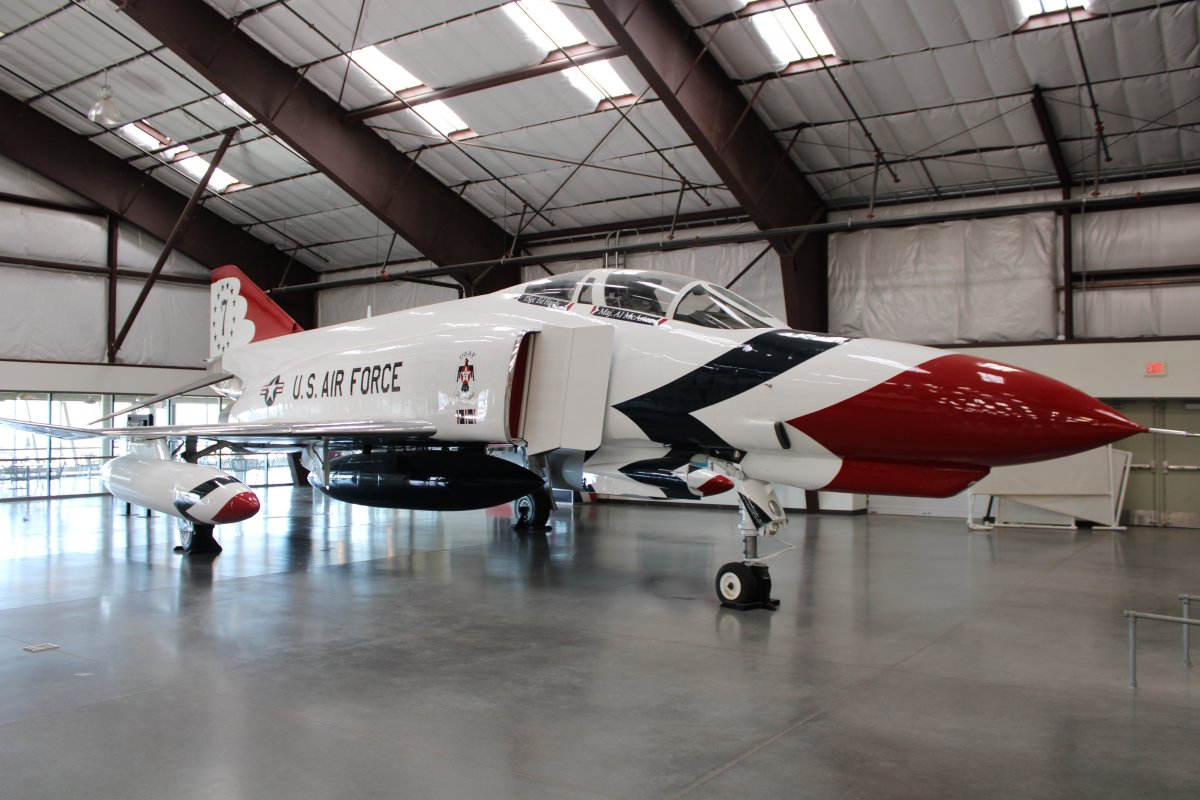 |
|
| A BAE Hawk advanced trainer wearing the colors of the Royal Air Force flight demonstration team: the Red Arrows. The T-45 Goshawk is a carrier-capable aircraft developed from the Hawk 60 for the United States Navy for use in aircraft carrier training. |
| |
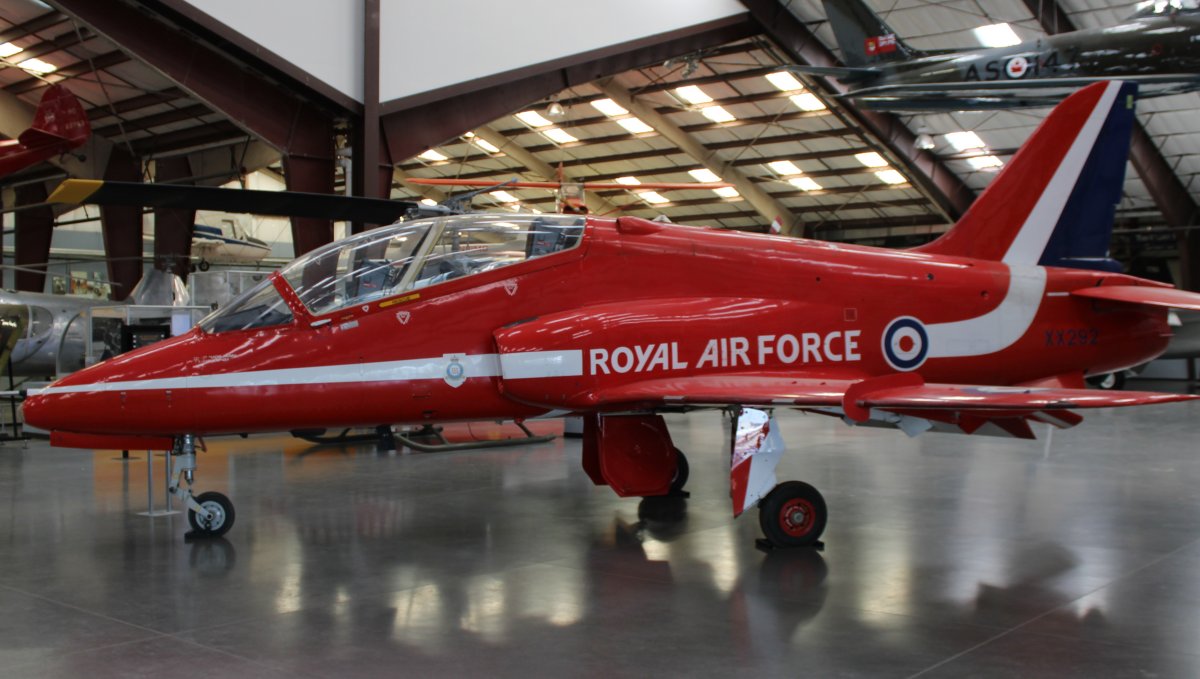 |
|
| You will not be surprised to know this aircraft is called the Bumble Bee. It was designed and built for the sole purpose of setting the record for world's smallest aircraft ever flown, which has since been broken. The designer, builder and pilot Robert Starr set the record in 1984 at nearby Marana airport. It has a Continental C85 engine. |
| |
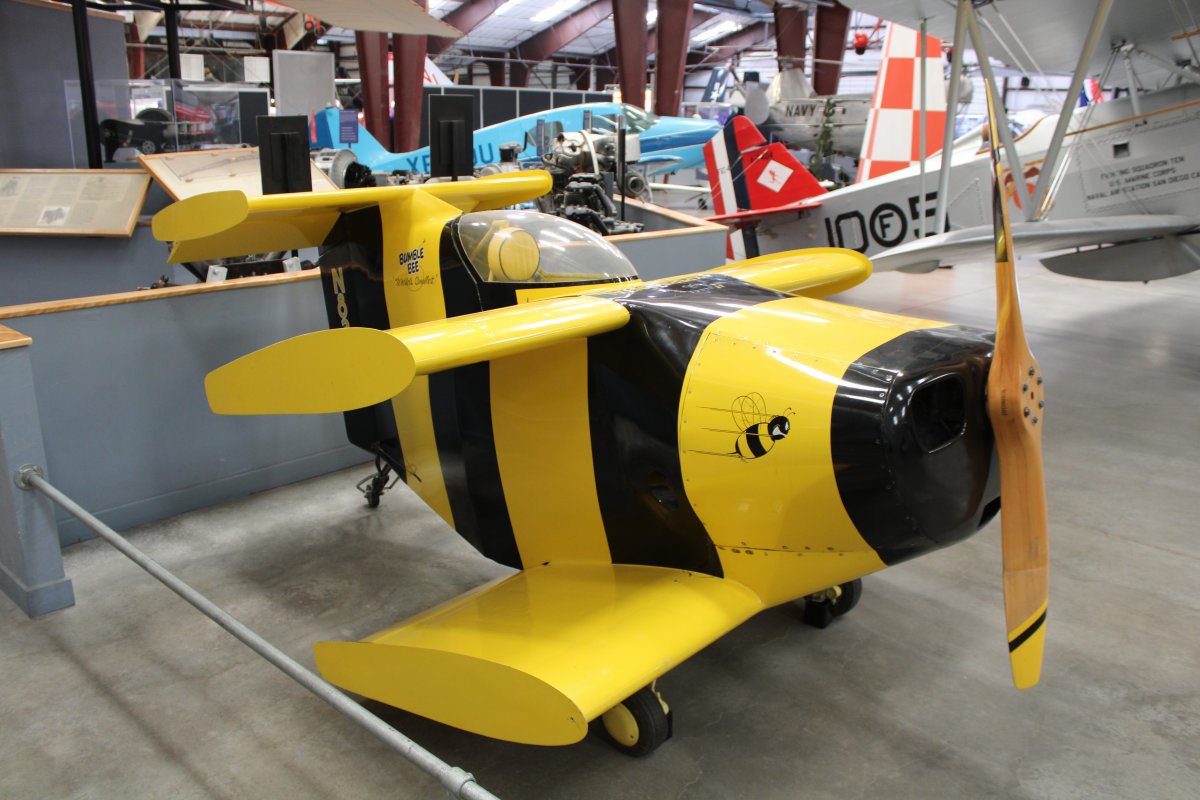 |
|
| Always good to see a Wright 1903 Flyer replica. |
| |
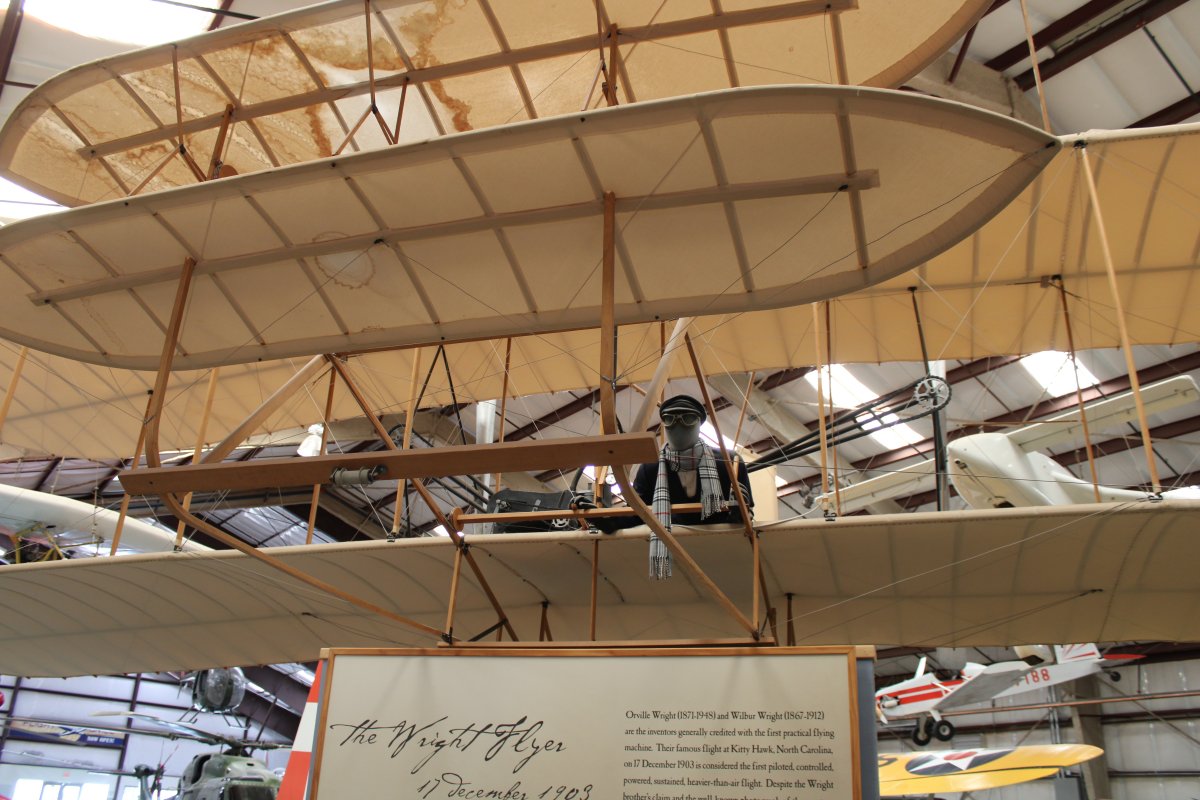 |
|
| A Curtiss F6C-4 Hawk. This version of the Hawk is interesting because has a radial-engine version. In the mid-20s, the U.S. Navy decided that air cooled radials were easier to maintain than liquid-cooled inline engines while at sea. All the carrier airplanes of World War II -- Wildcat, Hellcat, Dauntless, Avenger, Helldiver, Corsair -- were powered by air cooled radials. But this Hawk, with its Pratt & Whitney R-1340 Wasp radial engine., was the first. They operated aboard the USS Lexington (CV-2) until 1930. |
| |
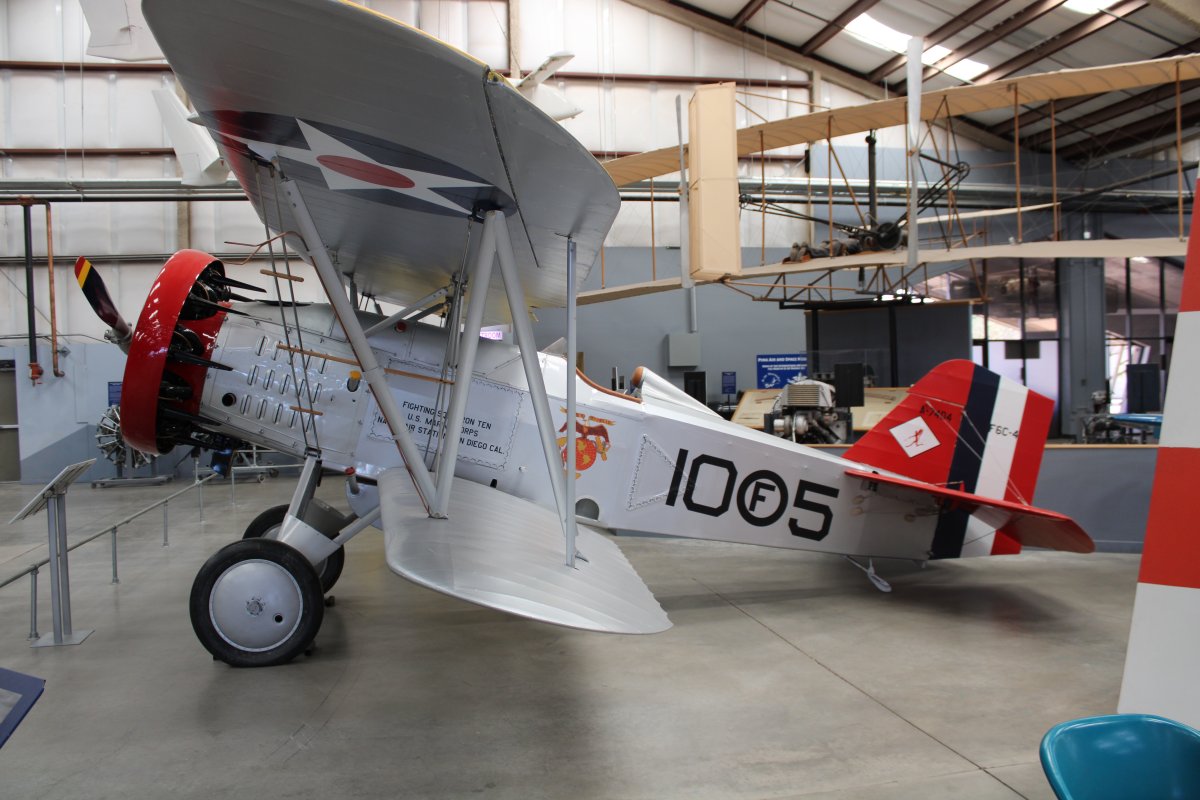 |
|
I left Hangar One and checked out Hangar Three which was constructed in 1992 to house much of the museum’s collection of World War II aircraft including the prized B-24J Liberator.
It seemed to me at the time that this was a new hangar. Everything seemed new and and bright and well lit. But now I think they painted the interior and floor white and put in better lighting.
|
| |
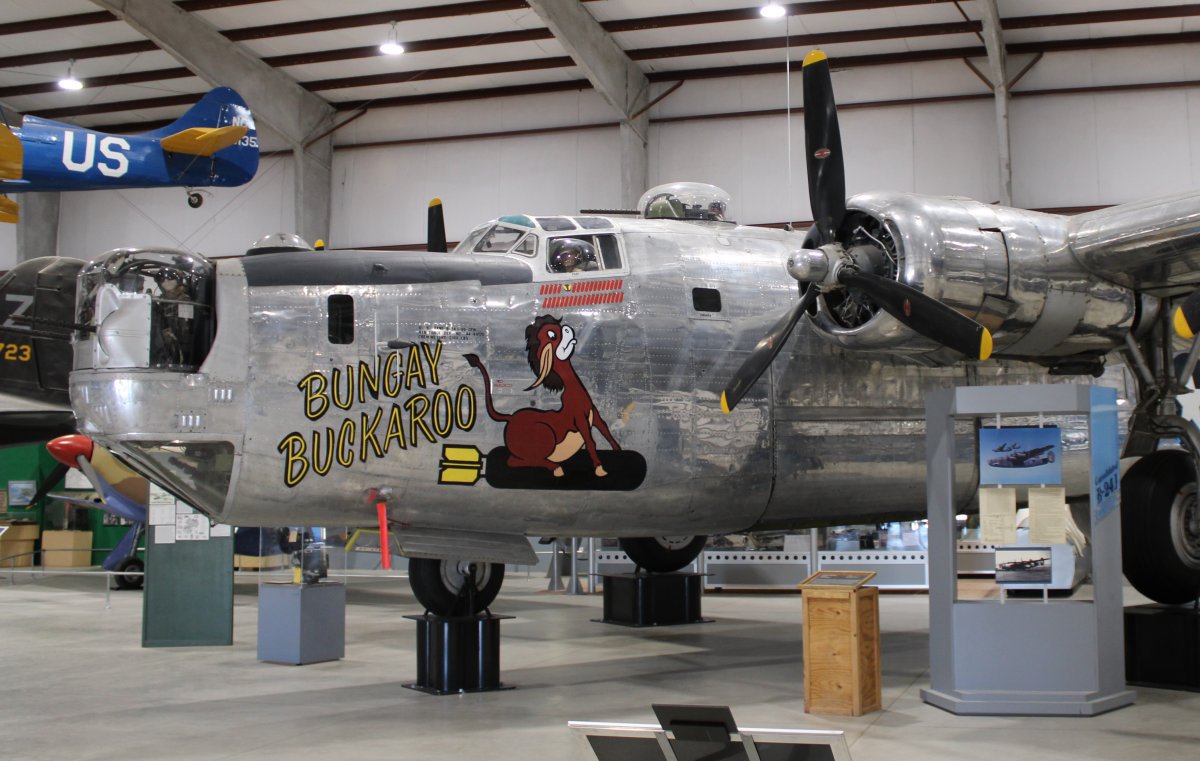 |
|
|
This is what the B-24 in Hangar Three looked like six years ago. It just seemed kind of old and dingy.
|
| |
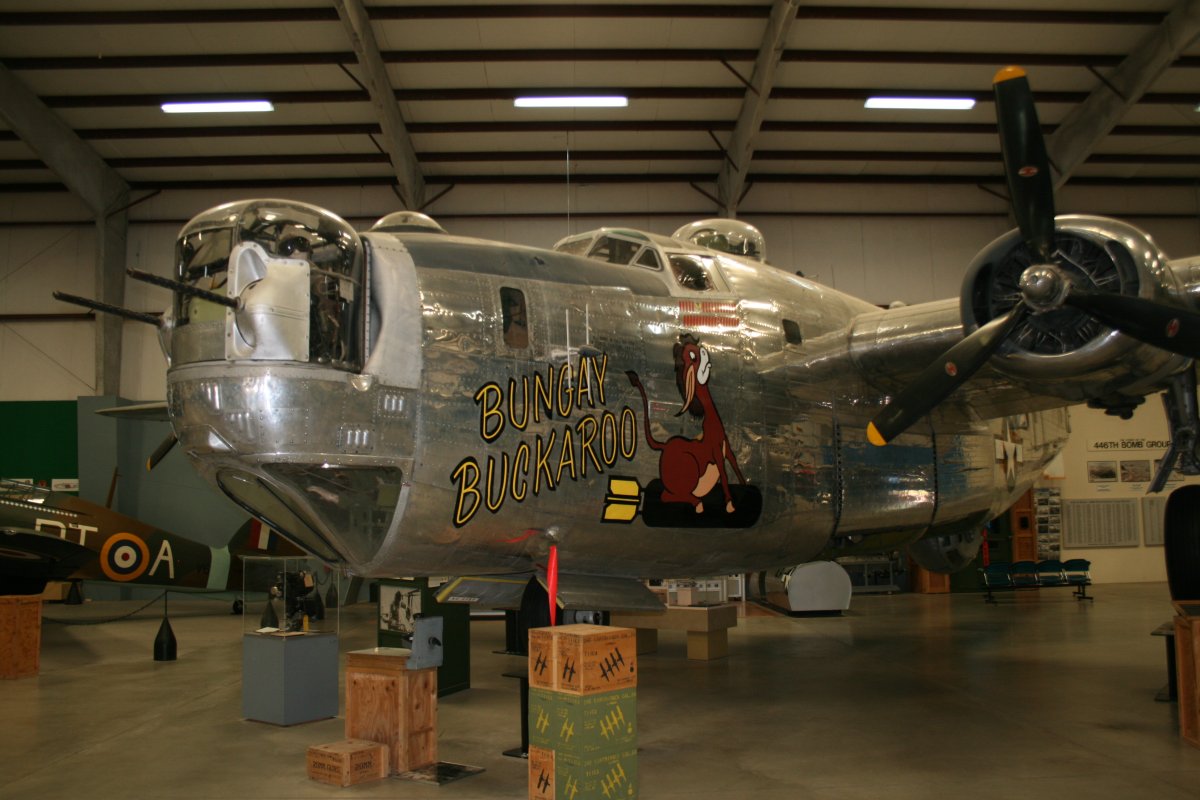 |
|
|
Another look at the B-24.
From Wikipedia: The B-24 was used extensively in World War II. It served in every branch of the American armed forces as well as several Allied air forces and navies. It saw use in every theater of operations. Along with the B-17, the B-24 was the mainstay of the US strategic bombing campaign in the Western European theater. Due to its range, it proved useful in bombing operations in the Pacific, including the bombing of Japan. Long-range anti-submarine Liberators played an instrumental role in closing the Mid-Atlantic gap in the Battle of the Atlantic. It's efficient wing The wing gave the Liberator a high cruise speed, long range and the ability to carry a heavy bomb load. Over 18,000 were built, including 8,685 manufactured by Ford Motor Company, an incredible number.
|
| |
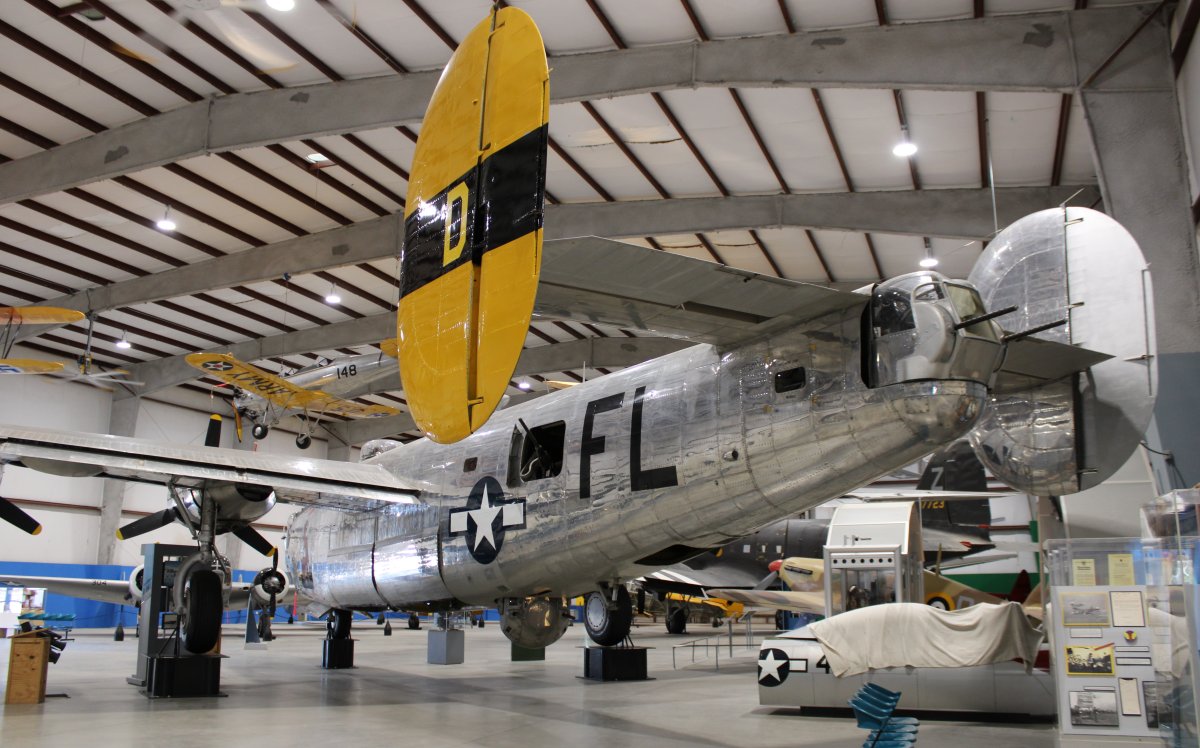 |
|
I really enjoyed seeing this are Russian IL-2 Sturmovik, a ground-attack aircraft produced by the Soviet Union in large numbers during the World War II. |
| |
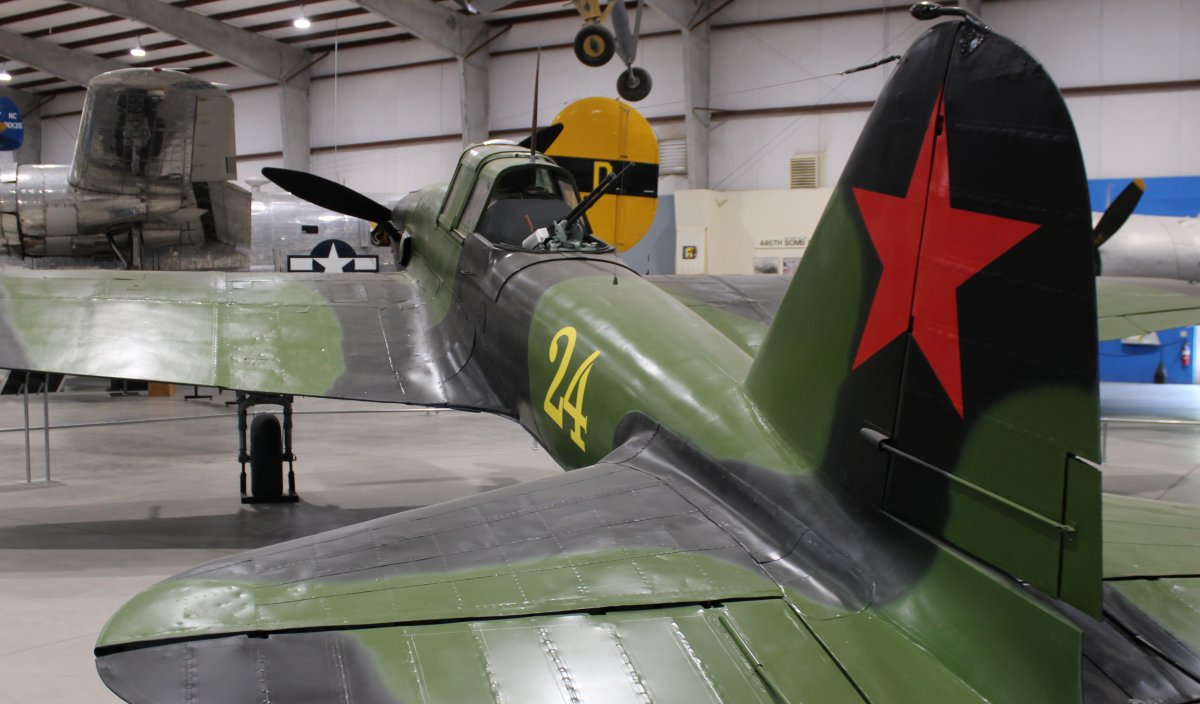 |
|
|
A total of 42,330 were built, making it the single most produced military aircraft design in aviation history. Thanks to the heavy armor protection, the Il-2 could take a great deal of punishment and proved difficult for both ground and aircraft fire to shoot down.
This particular aircraft was shot down on January 18, 1944 while attacking German troops in the Leningrad area. The pilot made a forced landing on a frozen lake. Once the lake thawed out in the spring the aircraft sank and was recovered in 1992.
|
| |
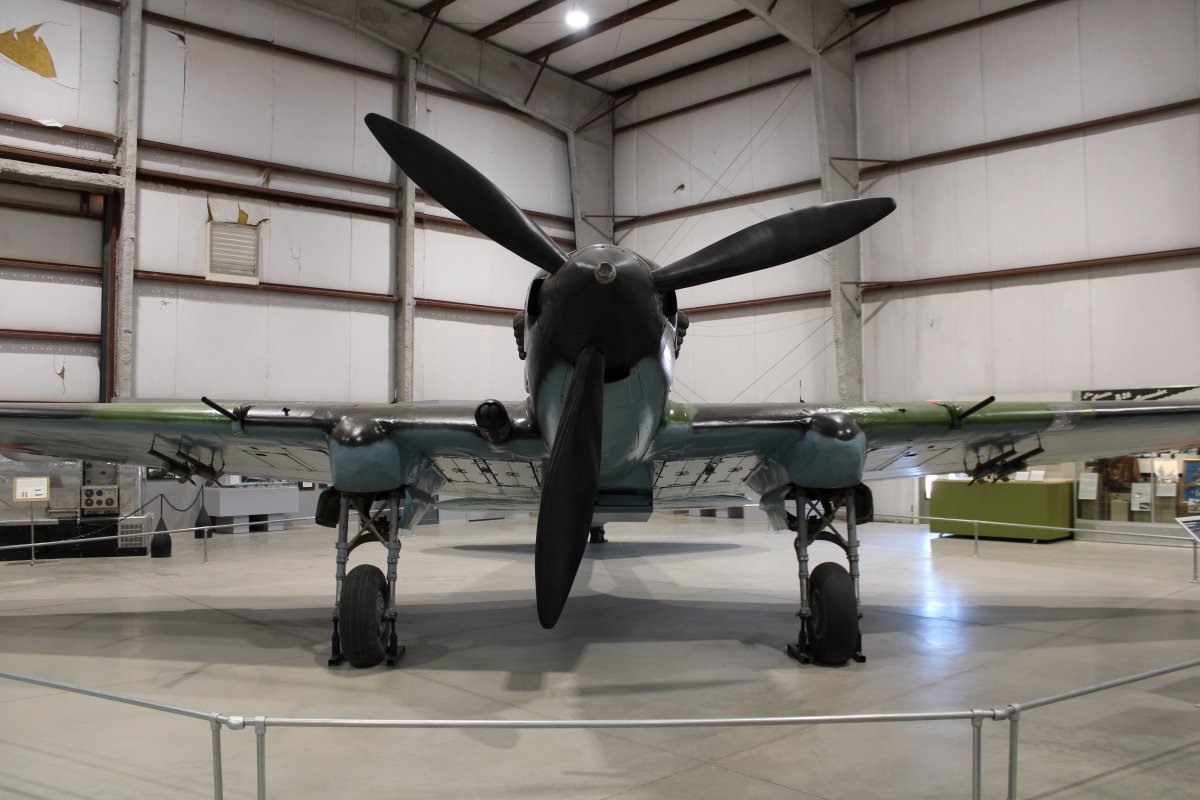 |
|
| A Hawker Hurricane in perfect condition. |
| |
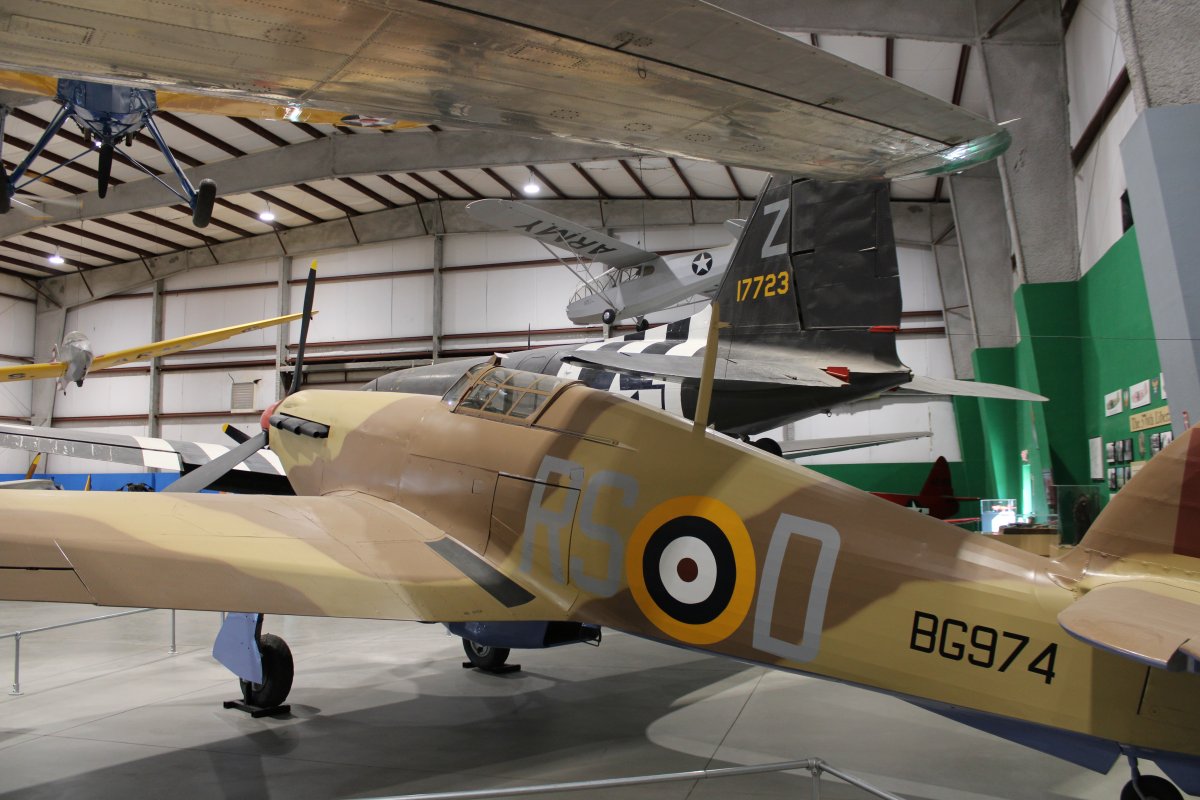 |
|
| A big Consolidated PB4Y-2 Privateer which was a long-range maritime patrol aircraft derived from the B-24 Liberator. |
| |
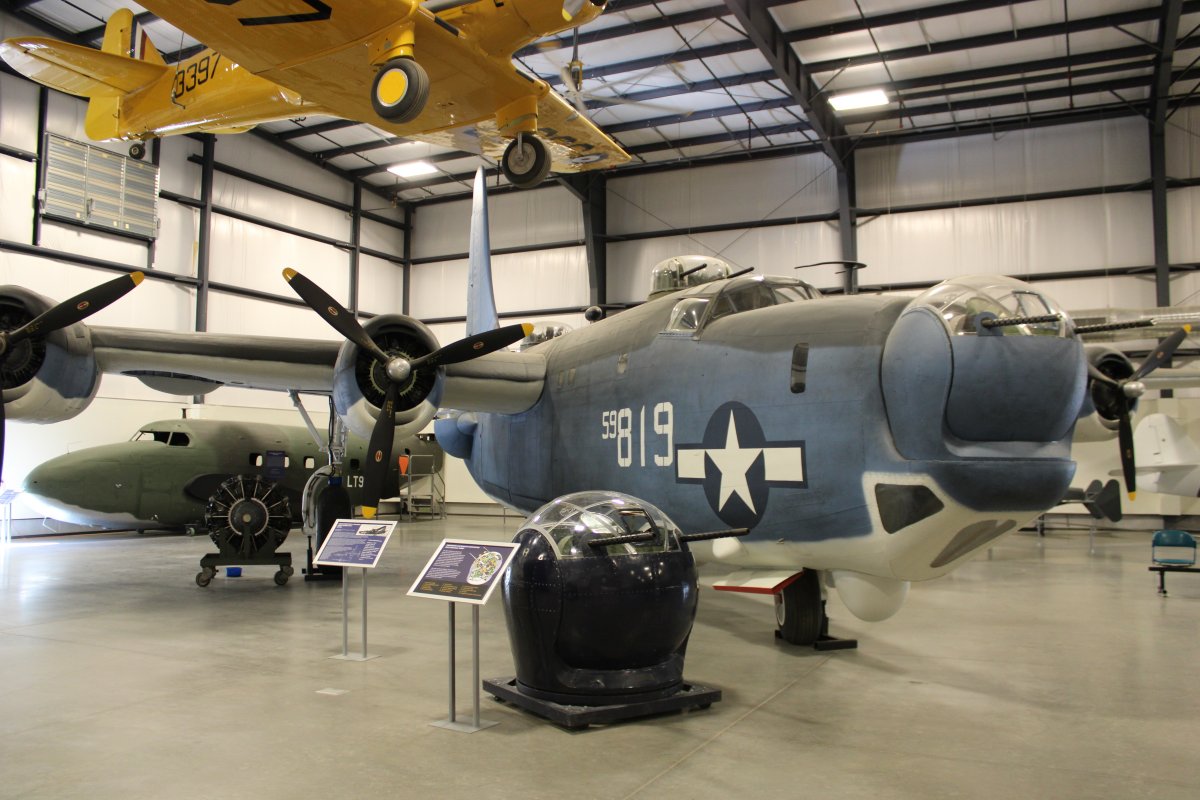 |
|
|
Another look at the Privateer which stayed in service after World War II until being retired in the mid-50s. This particular aircraft was based in Arizona fighting forest fires for 25 years until a final retirement in 1990.
|
| |
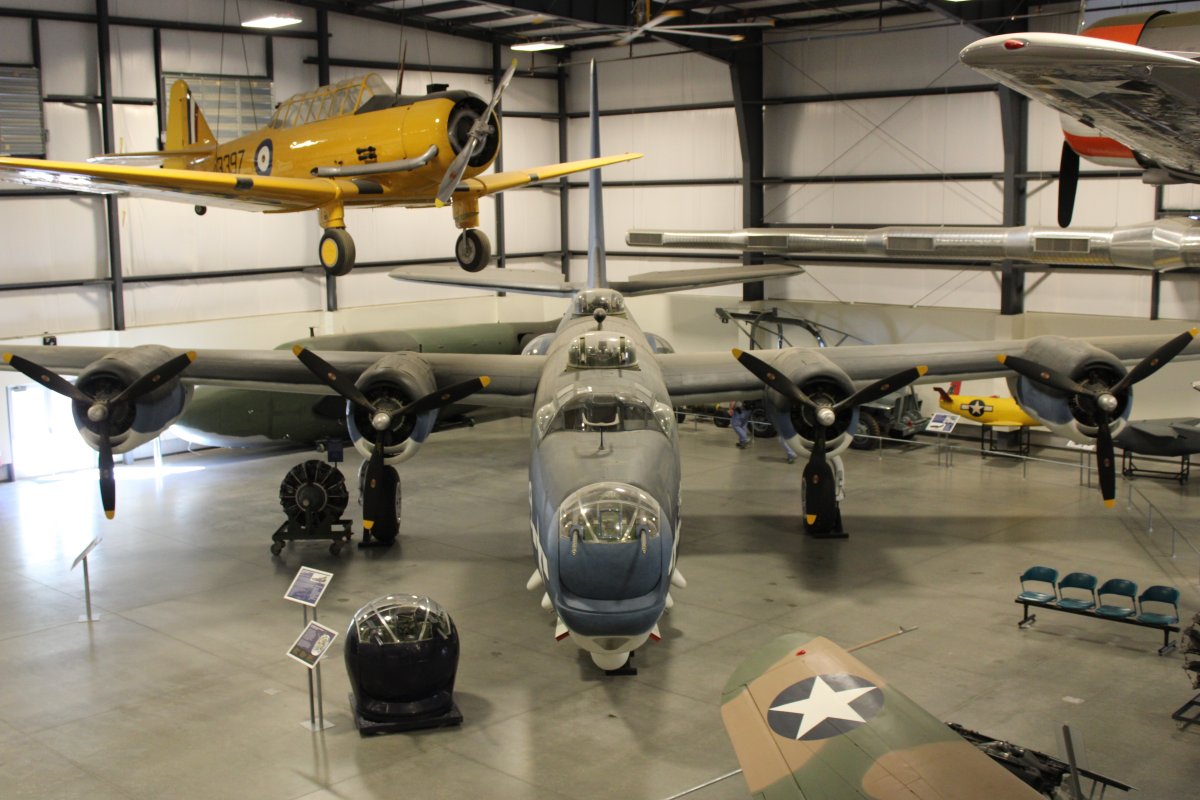 |
|
| A very rare Bristol Blenheim, which was extensively by the British in the first two years of World War II as a light bomber, night fighter, trainer and for reconnaisance. However, it was slow and nearly obsolete and many were lost. Over 4,000 were built. |
| |
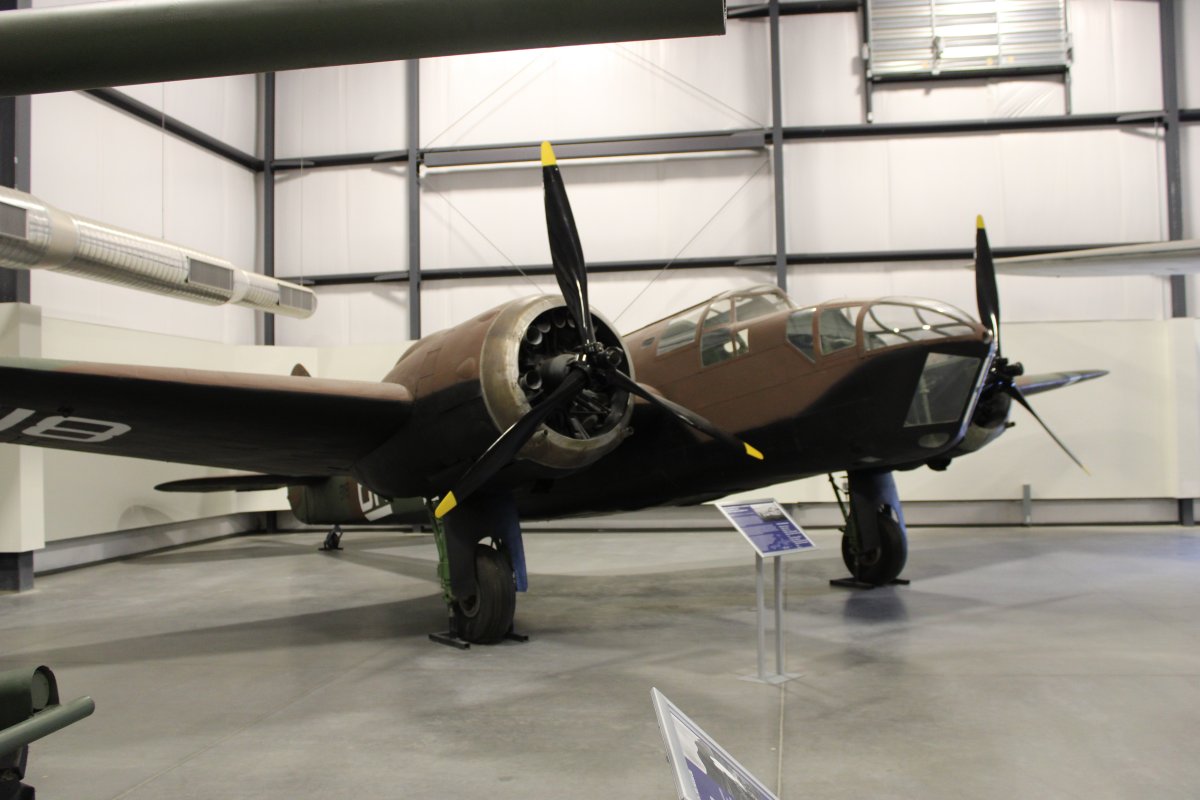 |
|
|
A nice look at the Blenheim from above; it almost looks like a model airplane.
|
| |
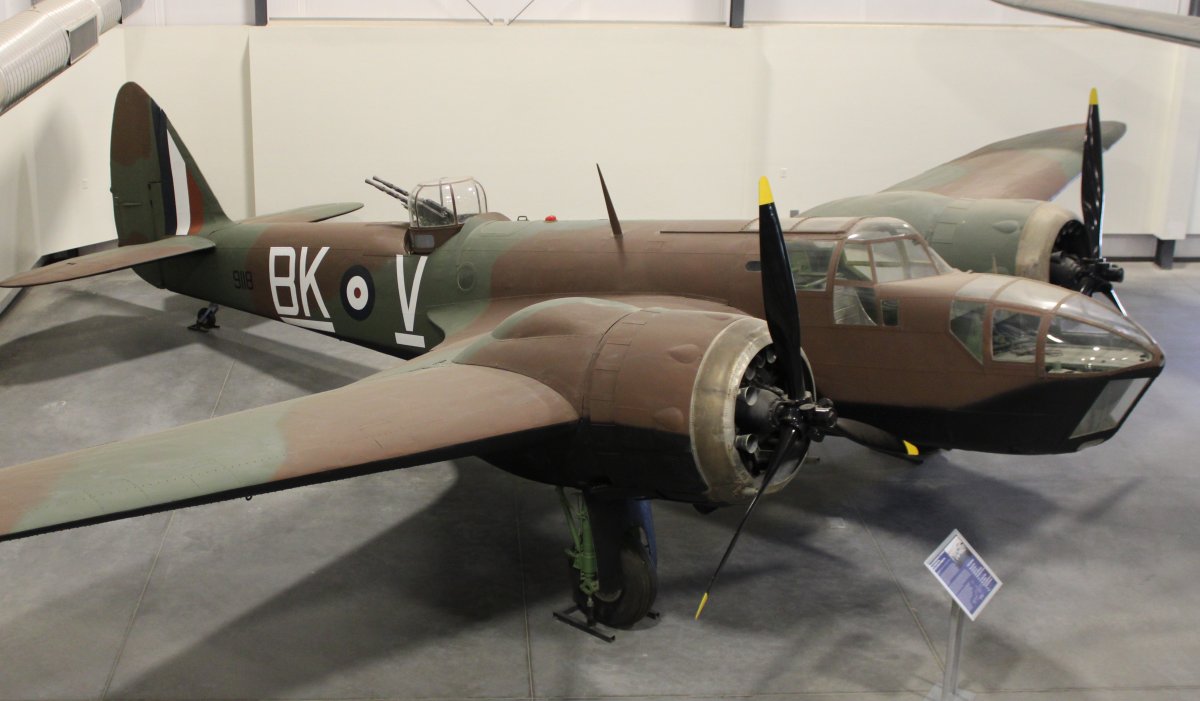 |
|
| Beautiful Bell P-39N Airacobra. The Soviet Union ended up receiving about half of the Airacobras produced: 5,000 out of 10,000. |
| |
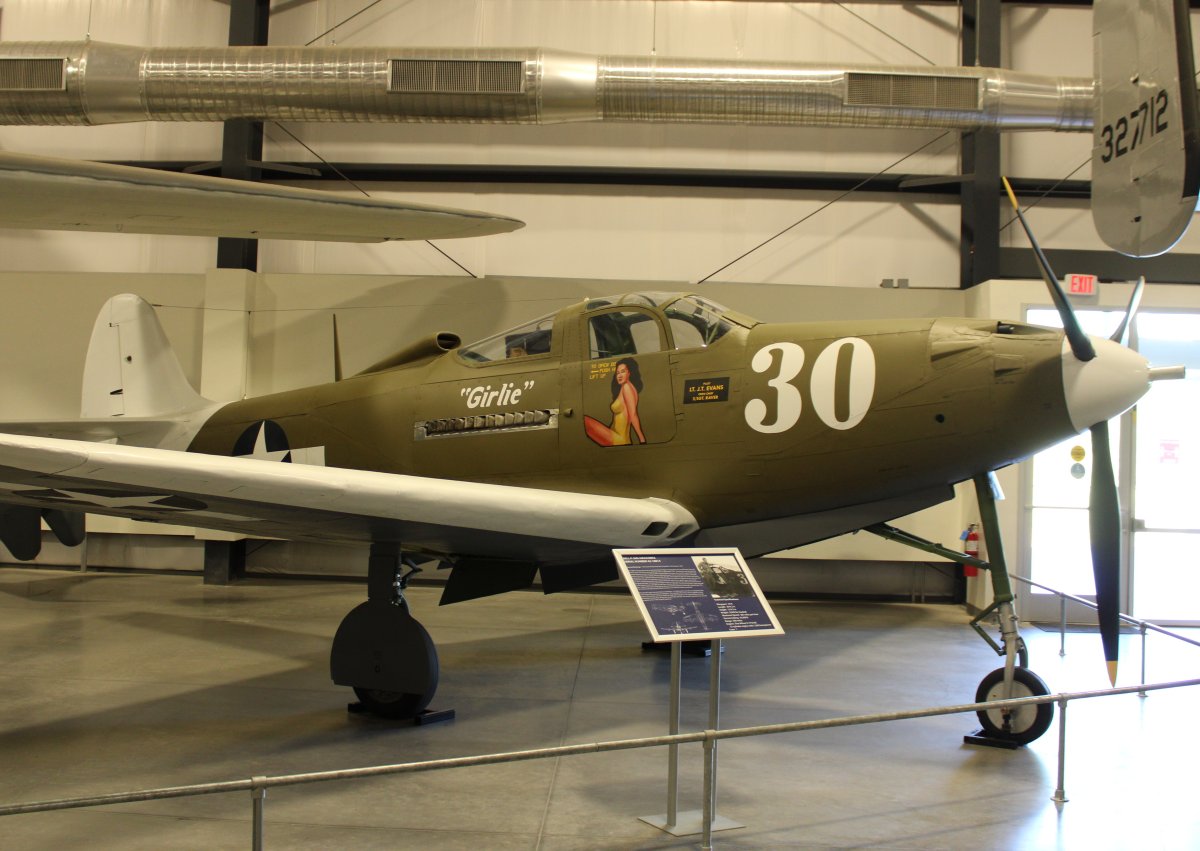 |
|
| Arizona-themed nose art on this P-40 Warhawk. |
| |
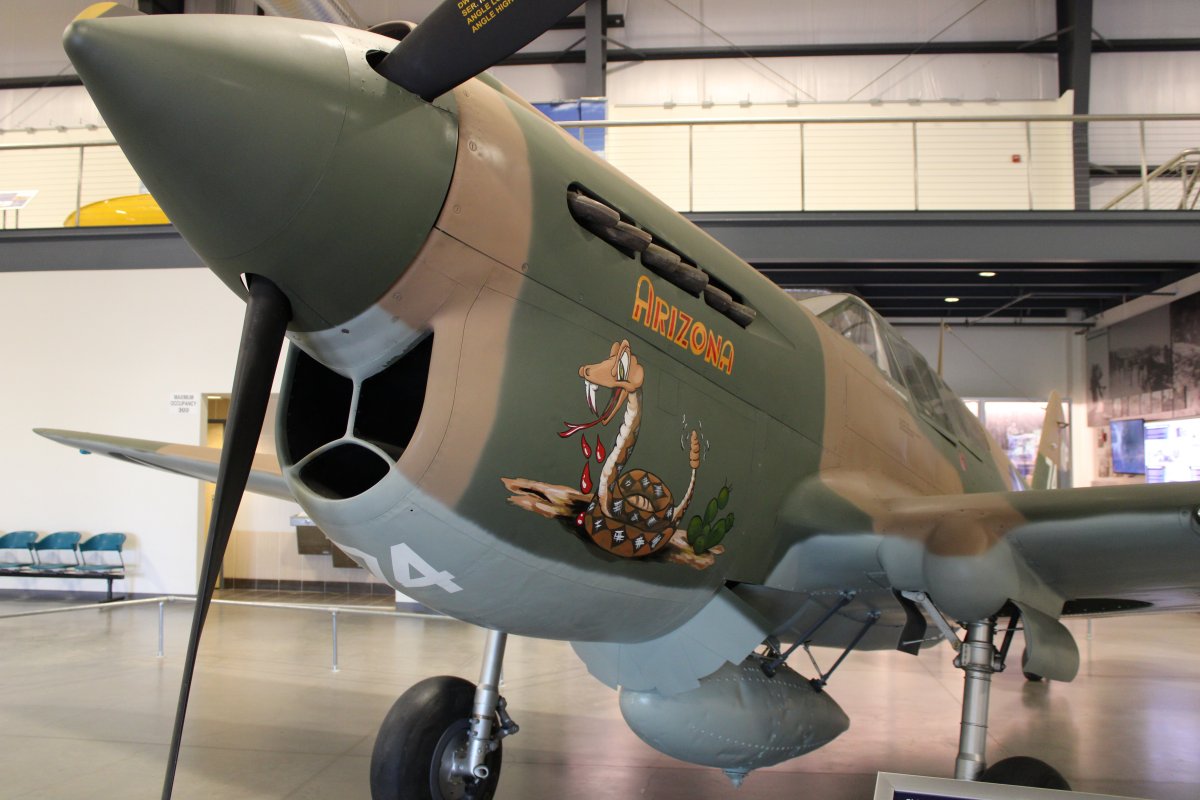 |
|
|
|
| |
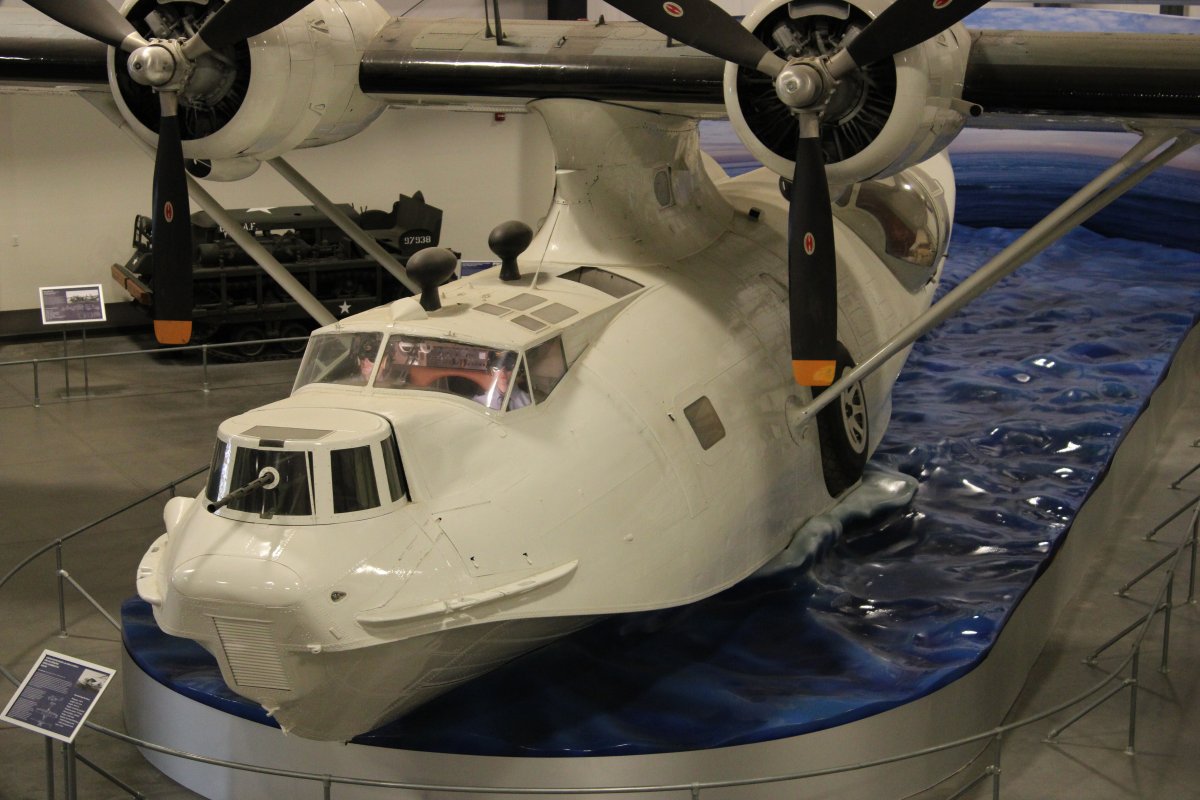 |
|
| A rare Nakajima Ki-43 Oscar, a fighter used by the Imperial Japanese Army Air Force. It was often called the "Army Zero" by American pilots because it bore a certain resemblance to the Navy's Mitsubishi A6M Zero. |
| |
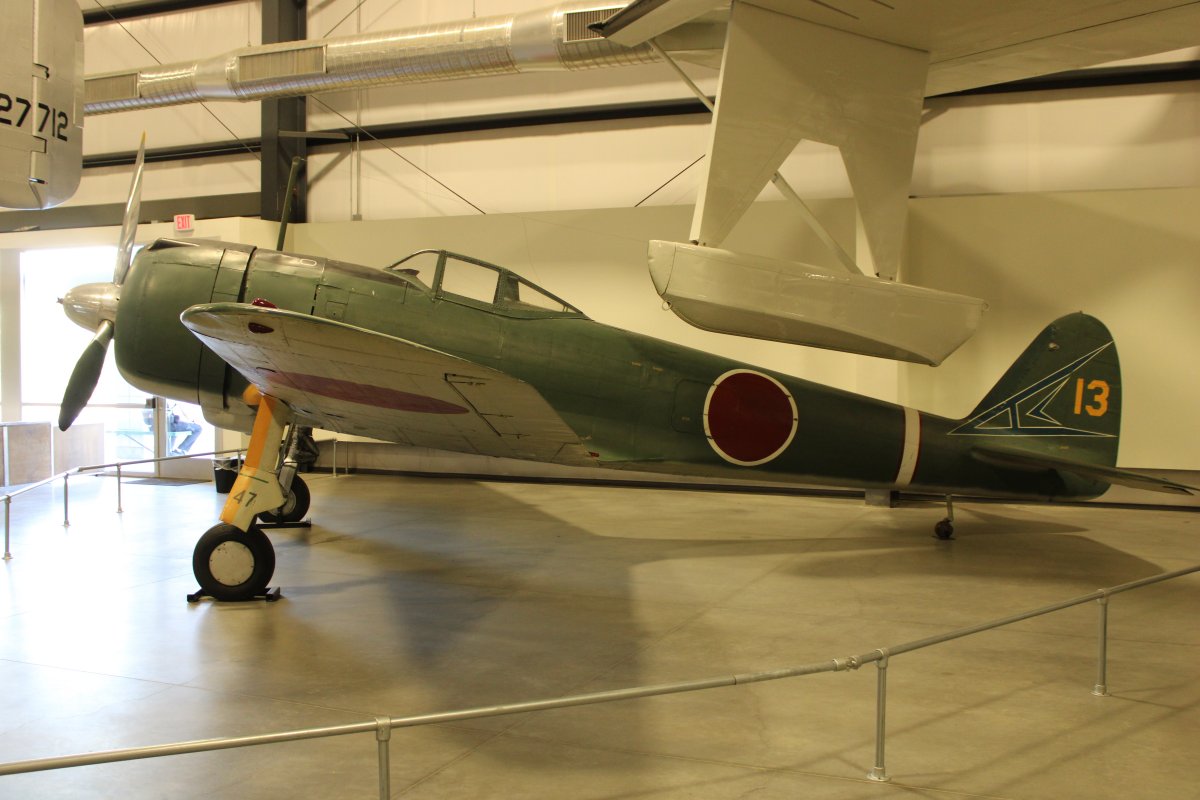 |
|
|
Spitfire Mark 14. Notice the clipped wing tips, five bladed prop and bubble canopy. The Mark 14 used the Rolls Royce Griffon engine which was more powerful than the famous Merlin.
|
| |
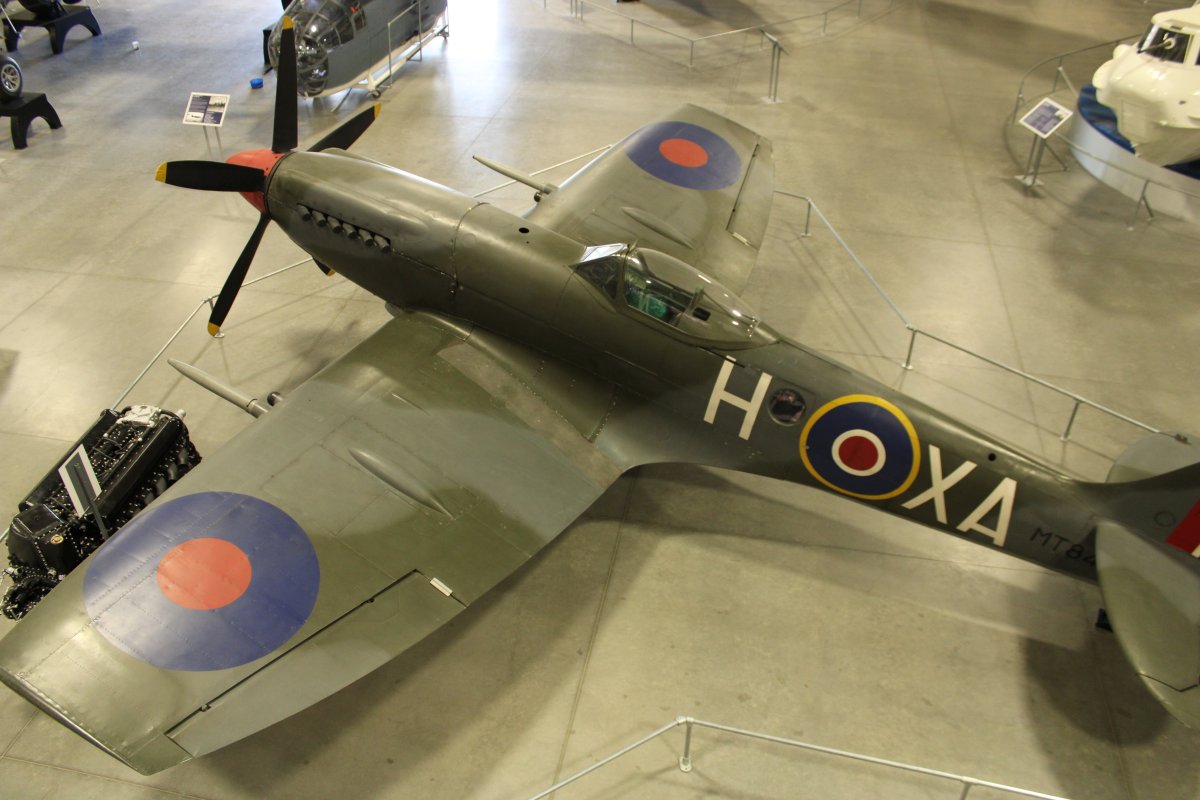 |
|
The year 1994 saw the erection of Hangar Four to house of the museum’s World War II aircraft with the B-29 Super Fortress as the centerpiece.
In 2015, the continued growth of the museum’s collection required the construction of a third building to house World War II era aircraft. Centered around both American and Japanese aircraft recovered from the battlefields of New Guinea this building gives visitors a detailed look at World War II in the Pacific and Asia. By 2020, the Pima Air & Space Museum has grown to be one of the largest aviation museums in the country (the largest non-government funded) with over 250,000 square feet of indoor display space and a collection of around 400 aircraft.
|
| |
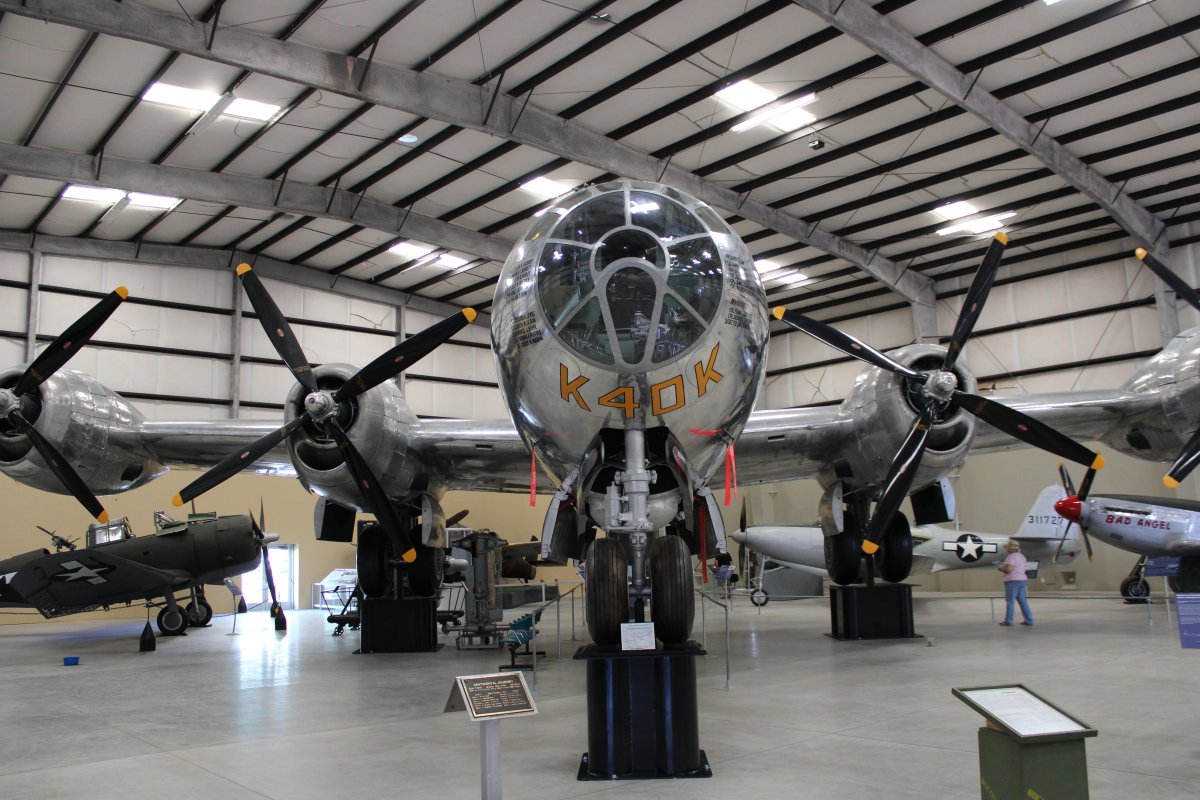 |
|
| A closer look at Sentimental Journey. |
| |
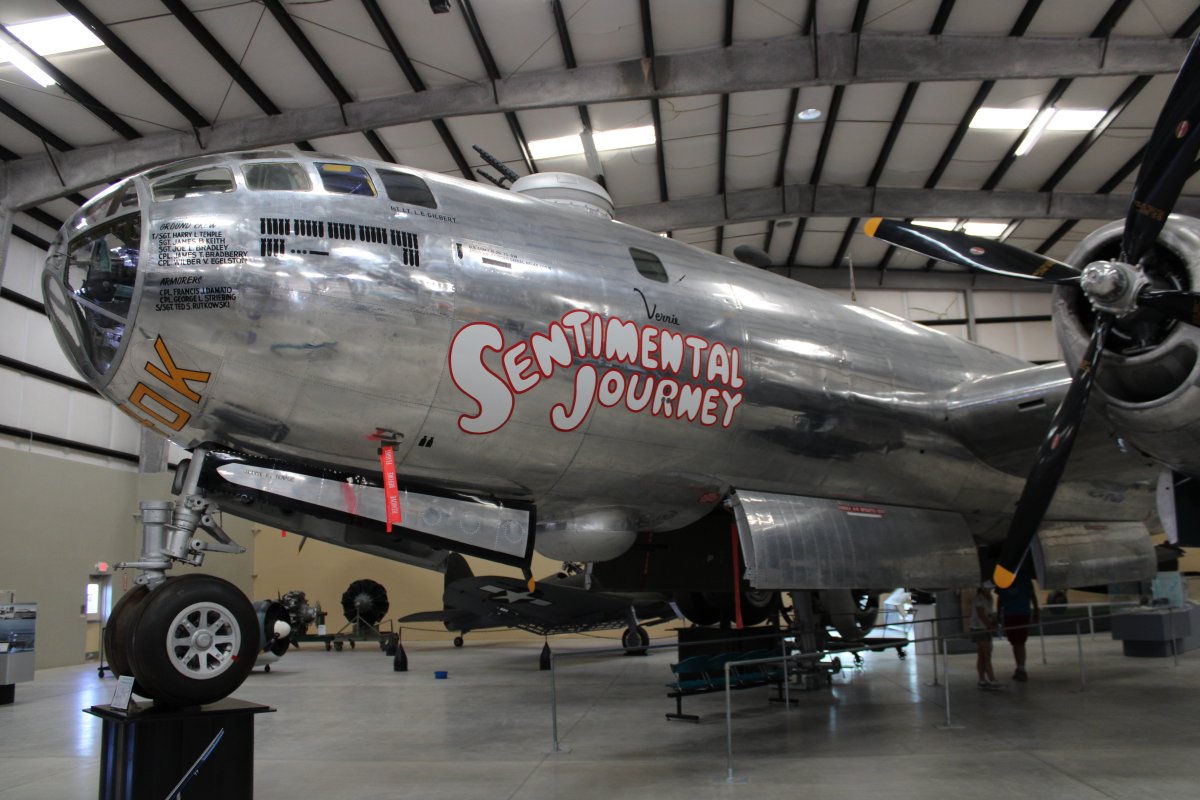 |
|
| A General Motors FM-2 (F4F) Wildcat in the process of being restored. The Wildcat was pulled from Lake Michigan. These late-war Wildcats served on American and British Escort Carriers and as trainers. |
| |
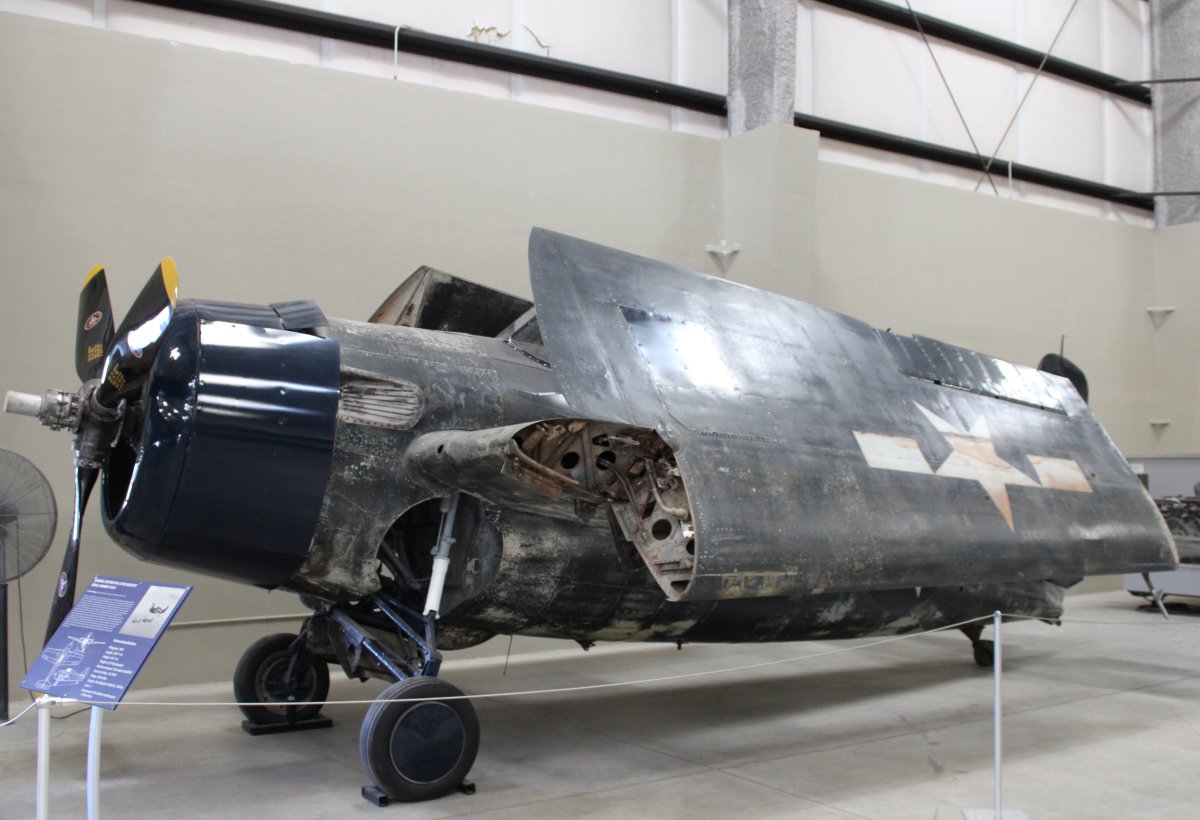 |
|
|
A model of the USS Wolverine, the training aircraft carrier converted from the paddlewheel steamliner Seeandbee. The above Wildcat was lost into Lake Michigan while practicing landings on the Wolverine.
|
| |
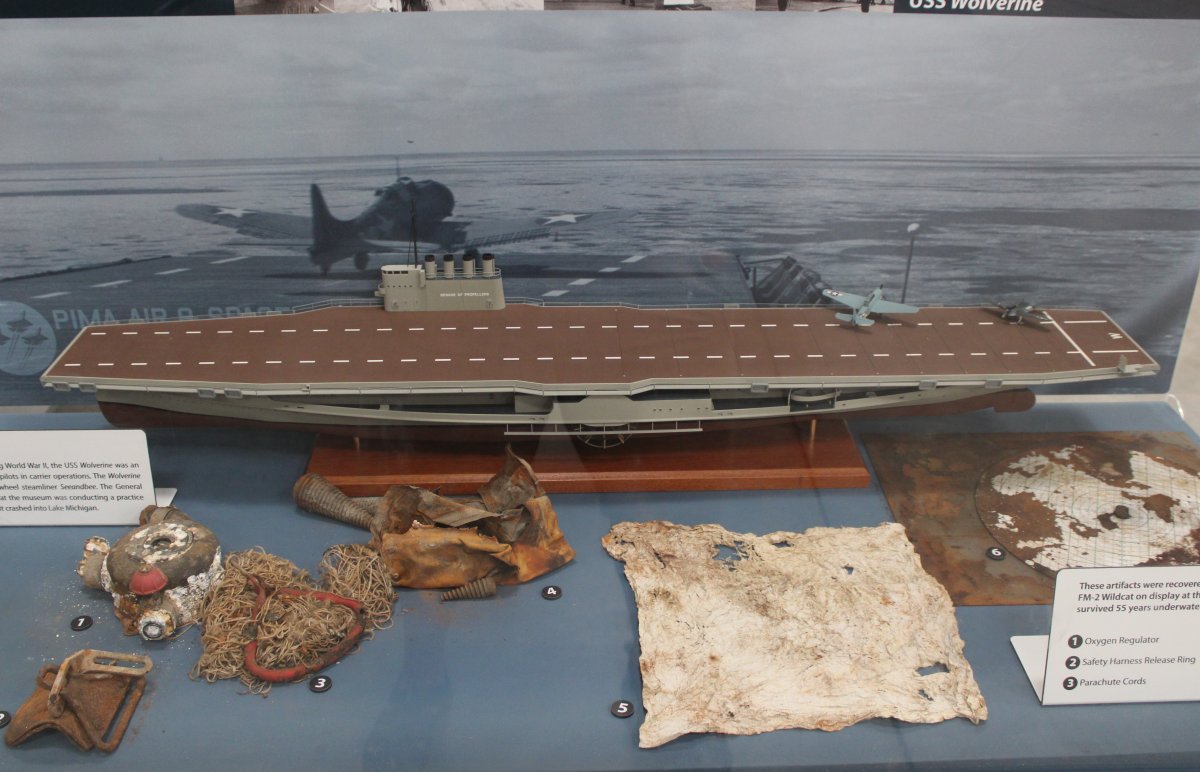 |
|
|
Douglas A-24 Banshee. It's the Navy's SBD Dauntless dive bomber used by the Army Air Corps. The Army didn't care for it much so it was used mainly as a trainer or in low-risk combat areas. This particular airplane was immediately put into storage after it was received and later sold for scrap.
|
| |
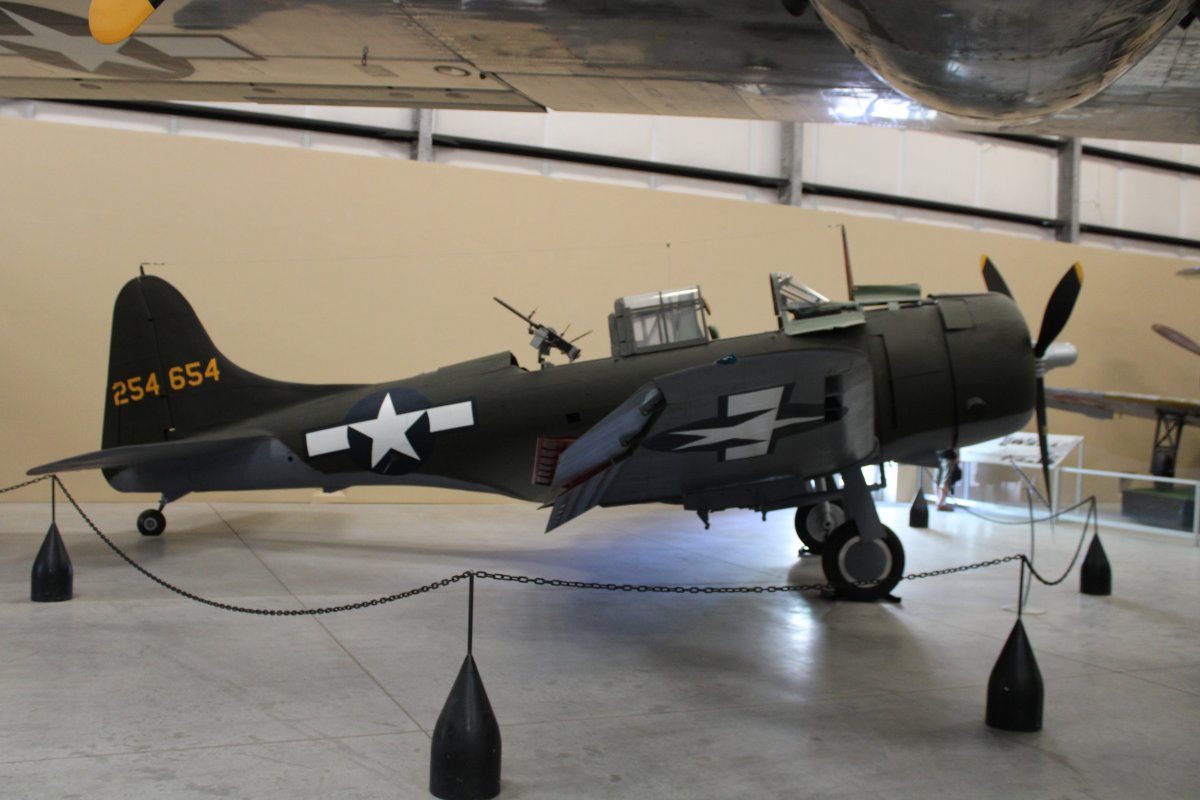 |
|
| I headed outsideto see all the airplanes on static display. Here is a nicely restored Mig-15. |
| |
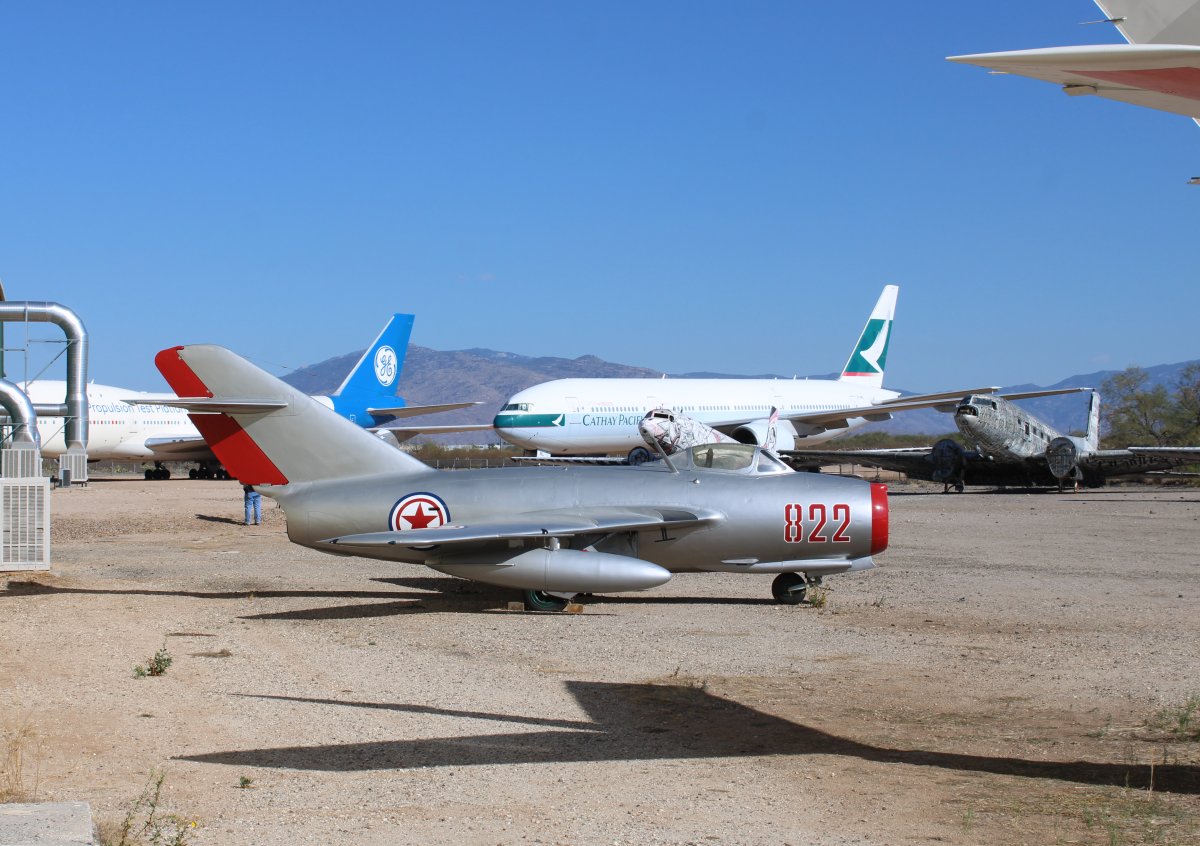 |
|
| A prototype that never made it to production. |
| |
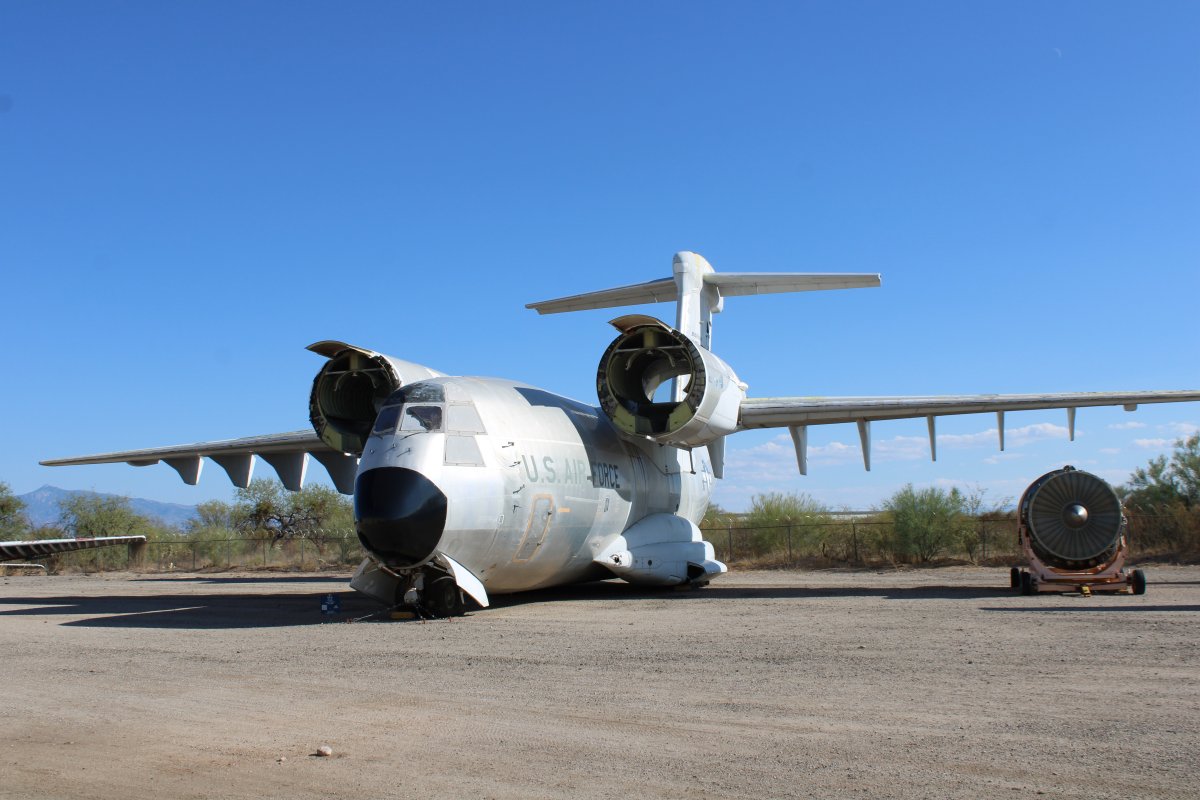 |
|
|
A Grumman AF Guardian. It was the first purpose-built anti-submarine warfare (ASW) carrier-based aircraft to enter service with the United States Navy. The Guardian saw service in the maritime patrol role during the Korean War, however it proved unpopular with pilots, being underpowered and heavy on the controls; the aircraft suffered from a severely high accident rate. The Guardian remained in service until August 1955, when it was replaced by the twin-engined Grumman S-2 Tracker. The Guardian was the largest single-engine piston-powered carrier aircraft ever to see service. A total of 389 Guardians of all variants were built. VAdm James B. Stockdale flew this aircraft early in his Navy career.
This particular aircraft was used for firefighting after its Navy service.
|
| |
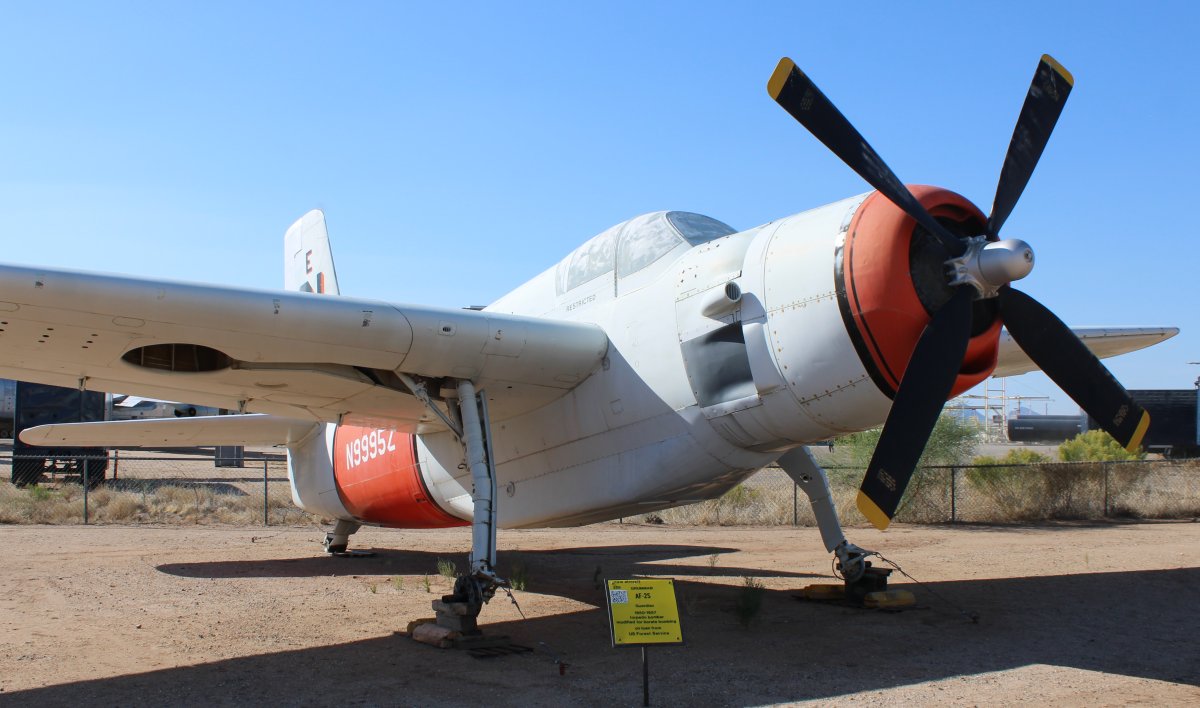 |
|
|
I believe this is the museum's restoration hangar.
|
| |
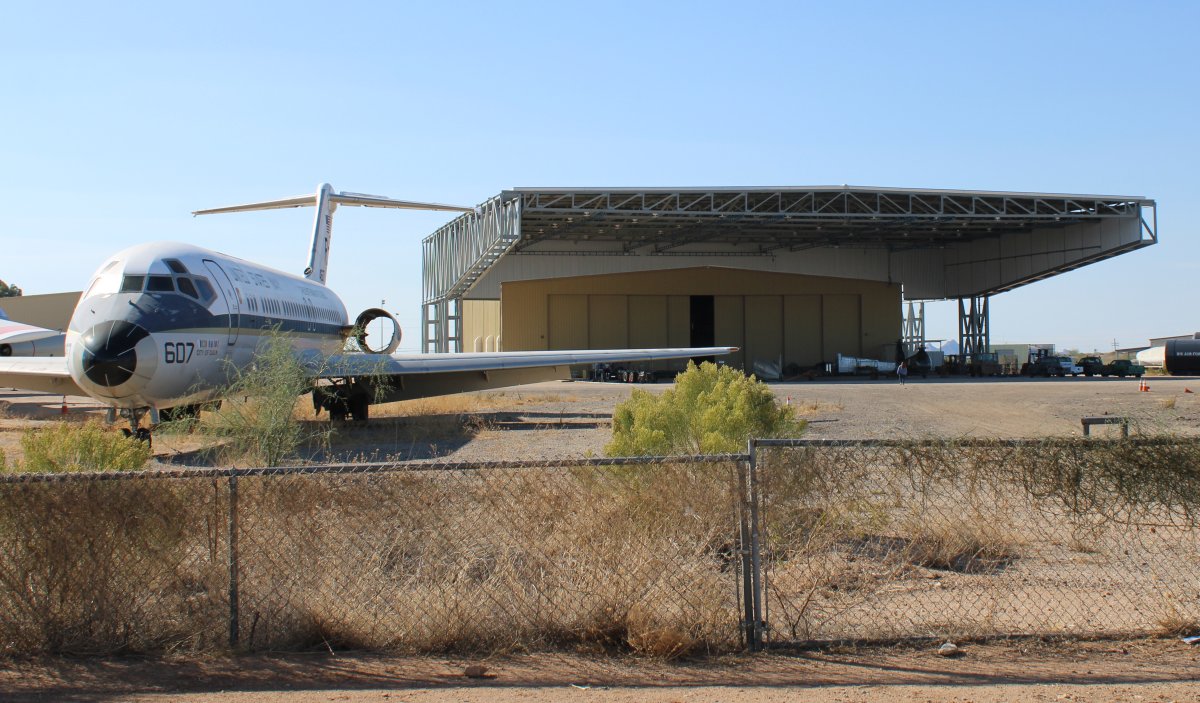 |
|
An old 1991 Beech Starship sits on the hardpacked desert. One of these still flies over my house into Baltimore-Washington International (BWI) Airport every once in awhile. It has a very distinctive sound. |
| |
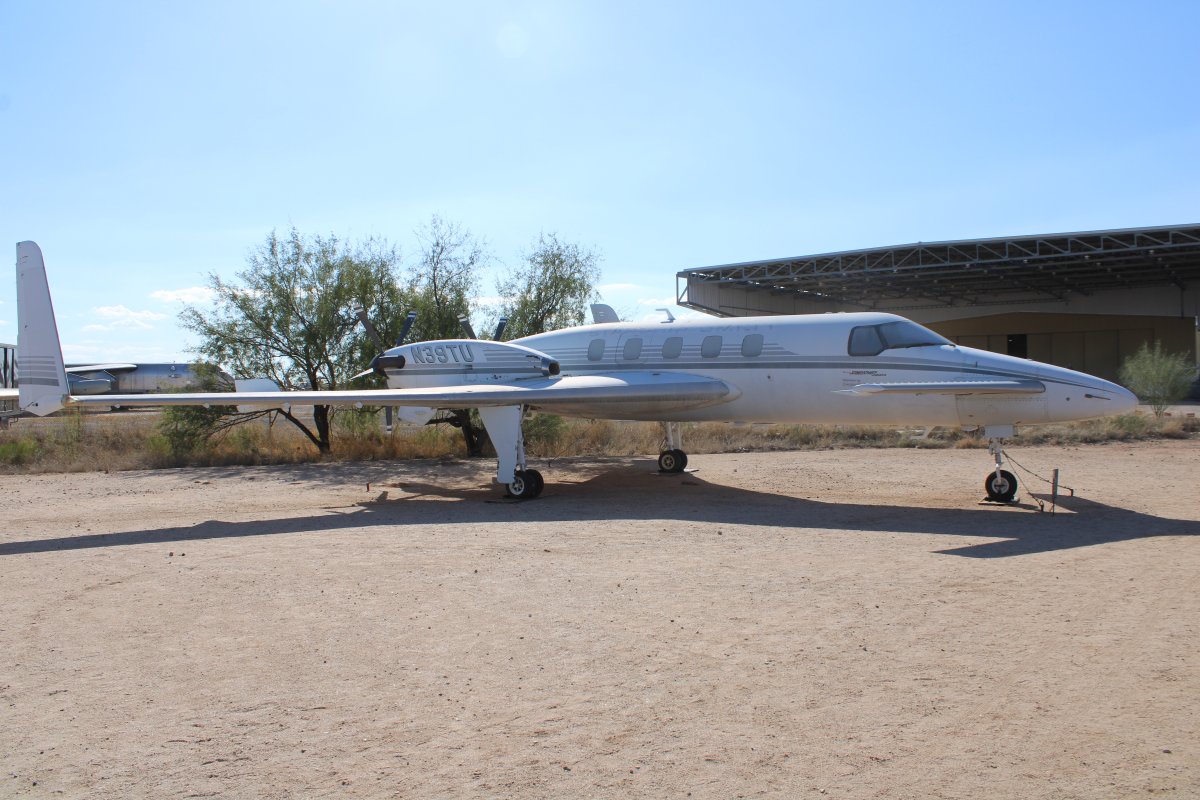 |
|
| An old TWA Lockheed Constellation watches over his little brother Cessna 172. A total of 856 Connies were produced between 1943 and 1958 at Lockheed's plant in Burbank, California, and used as both a civil airliner and as a military and civilian cargo transport. |
| |
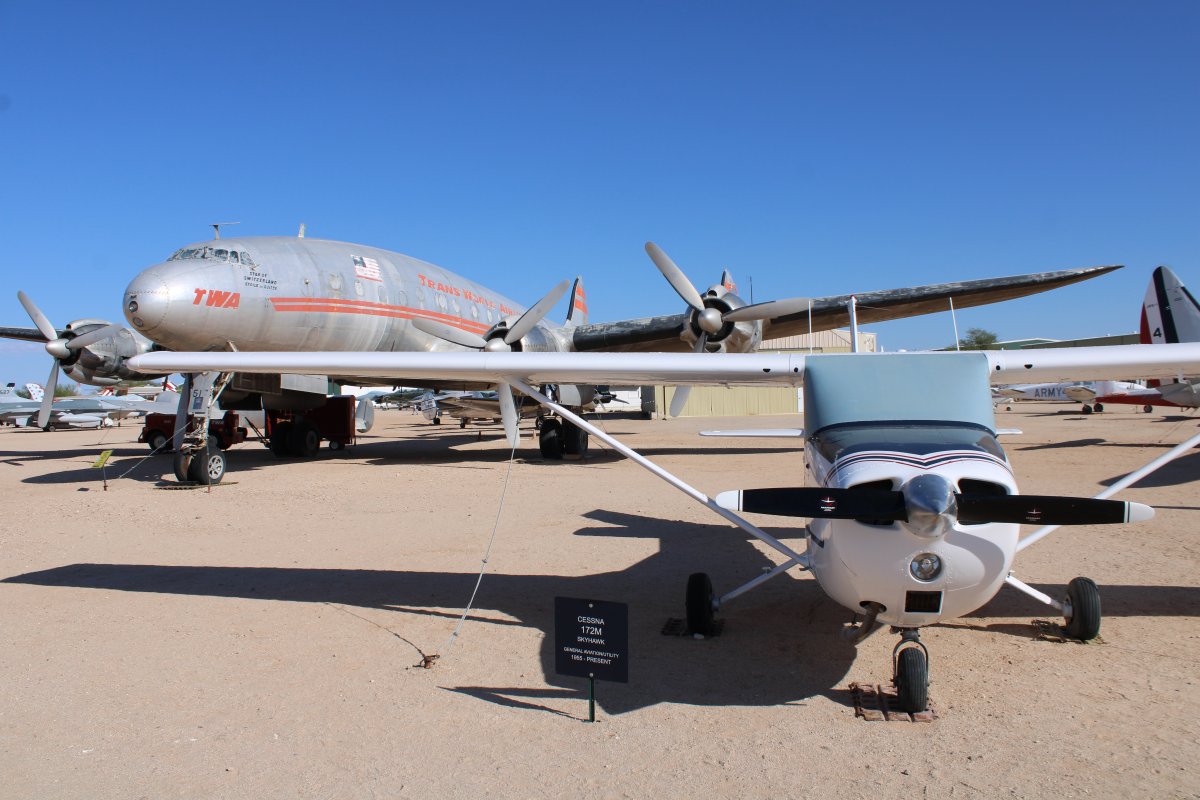 |
|
| This jet is definately not old. It's the second Boeing 787 Dreamliner ever to be built, donated by Boeing in 2015. It is exhibited in the colors of the 787 customer, All Nippon Airways (ANA) - largest airline in Japan. |
| |
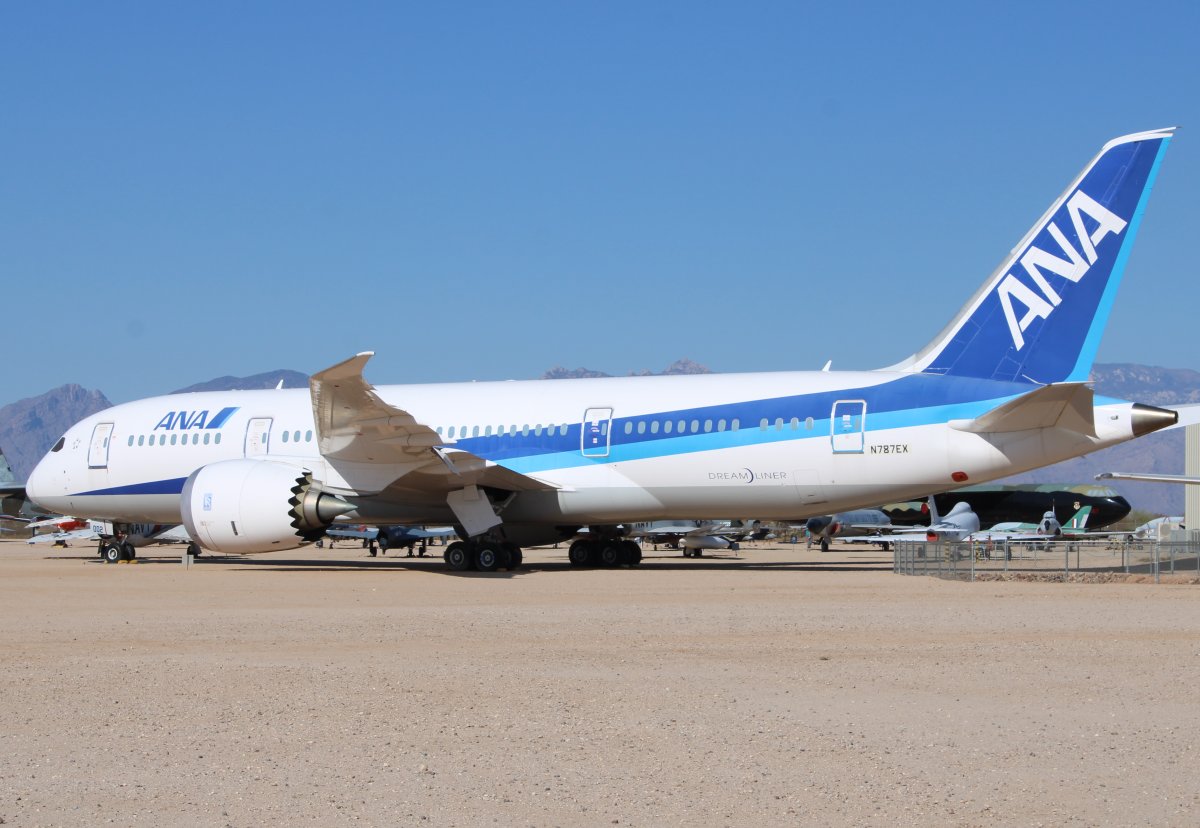 |
|
| Frontal view of the 787. |
| |
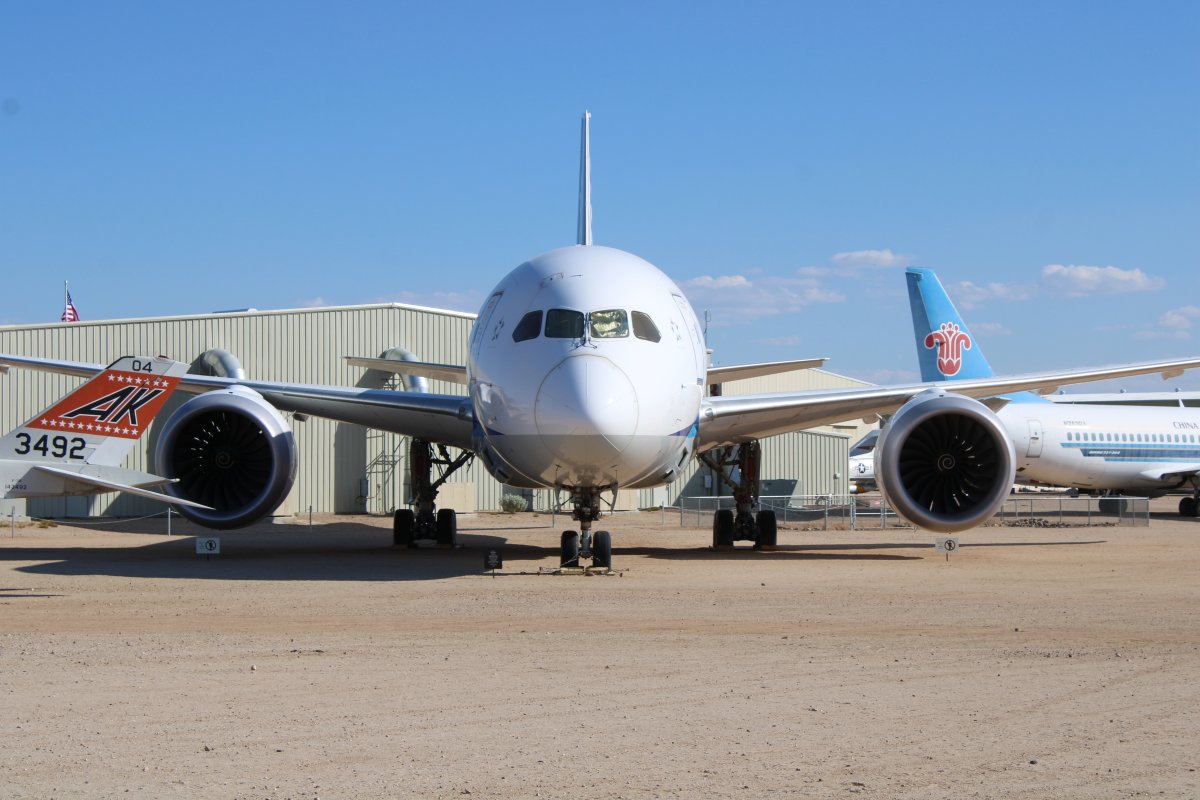 |
|
|
Look at that huge engine.
|
| |
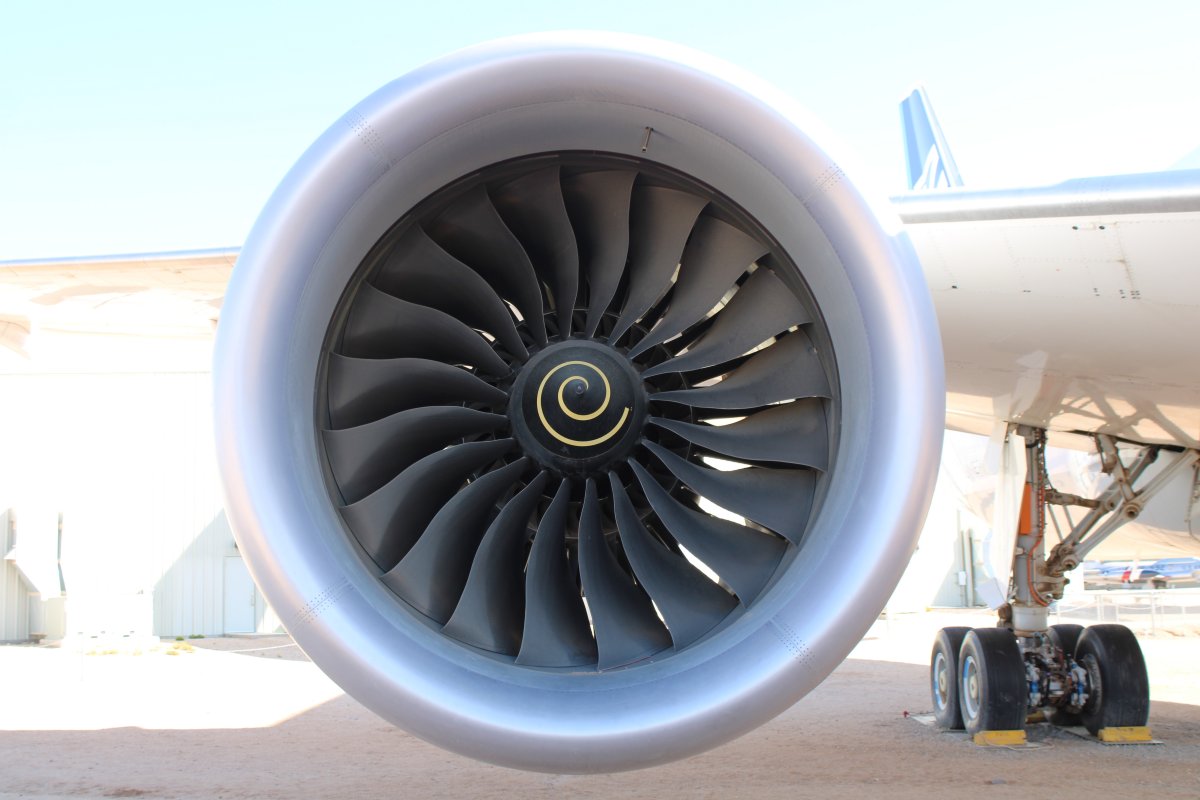 |
|
| In 1982, the museum entered into partnership with the 390th Bomb Group Memorial Museum Foundation to create a museum dedicated to the World War II history of the 390th and the B-17. The 390th Memorial Museum opened in 1984 in its own building in the center of the museum grounds. Run as a separate museum by veterans of the 390th the building houses a B-17G Flying Fortress along with a library and an extensive collection of artifacts from the members of the 390th Bomb Group. |
| |
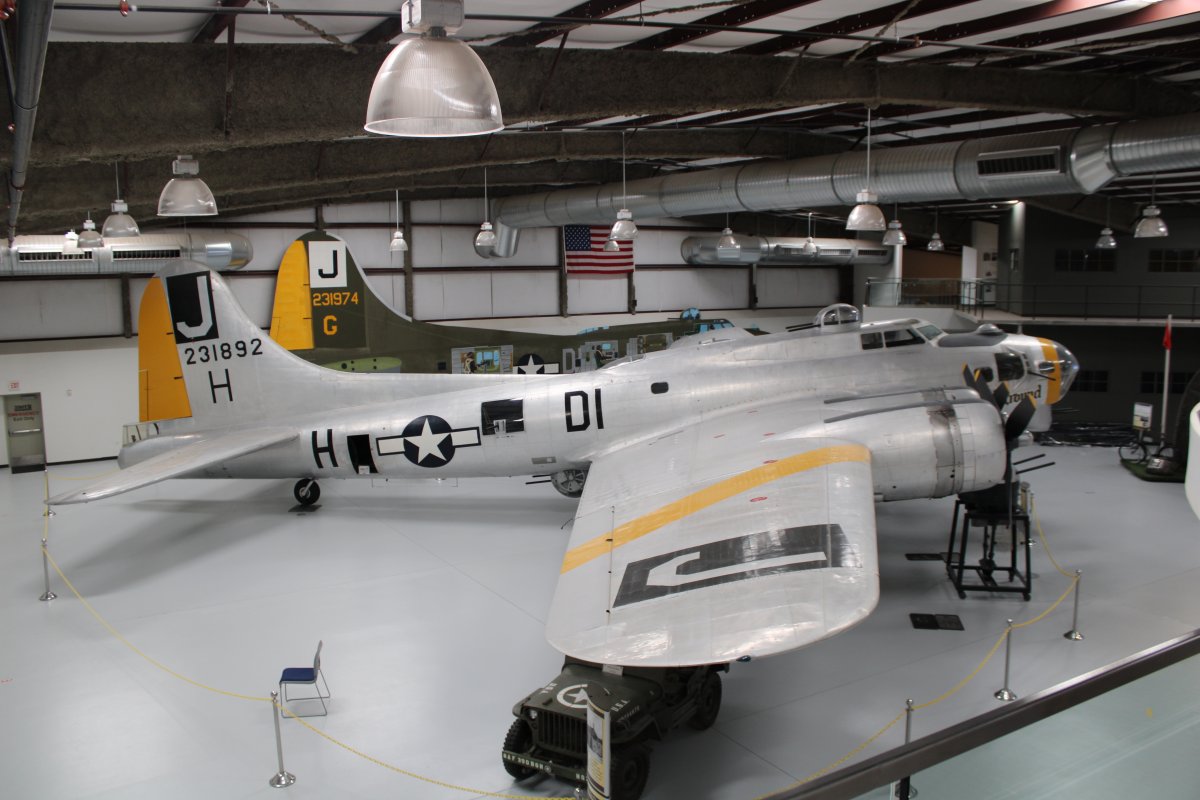 |
|
|
A Browning .50 caliber machine gun. The later-model B-17G had 13 of these guns.
The U.S. developed the bomb-group formation, which evolved into the staggered combat box formation in which all the B-17s could safely cover any others in their formation with their machine guns. This made a formation of bombers a dangerous target to engage by enemy fighters. Luftwaffe fighter pilots likened attacking a B-17 combat box formation to encountering a fliegendes Stachelschwein, "flying porcupine", with dozens of machine guns in a combat box aimed at them from almost every direction.
|
| |
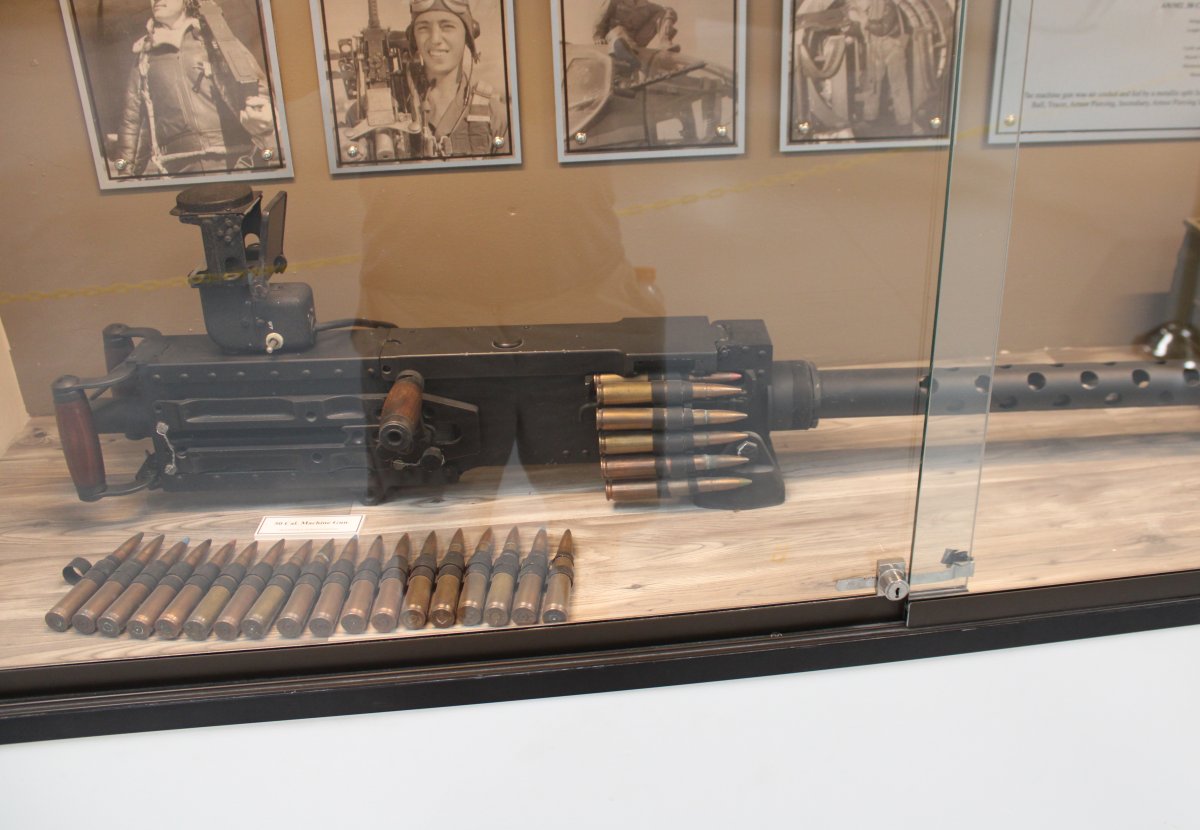 |
|
| |
| |
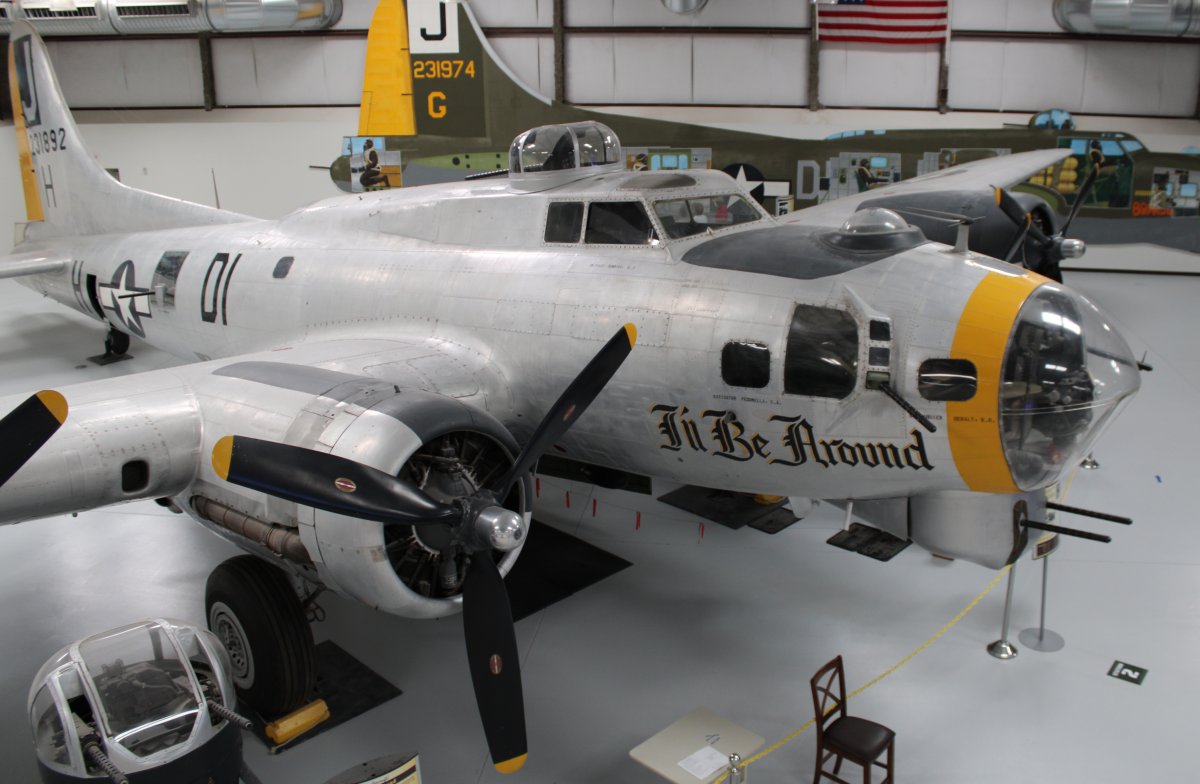 |
|
| A model of a typical Eighth Air Force bomber base in southeast England. |
| |
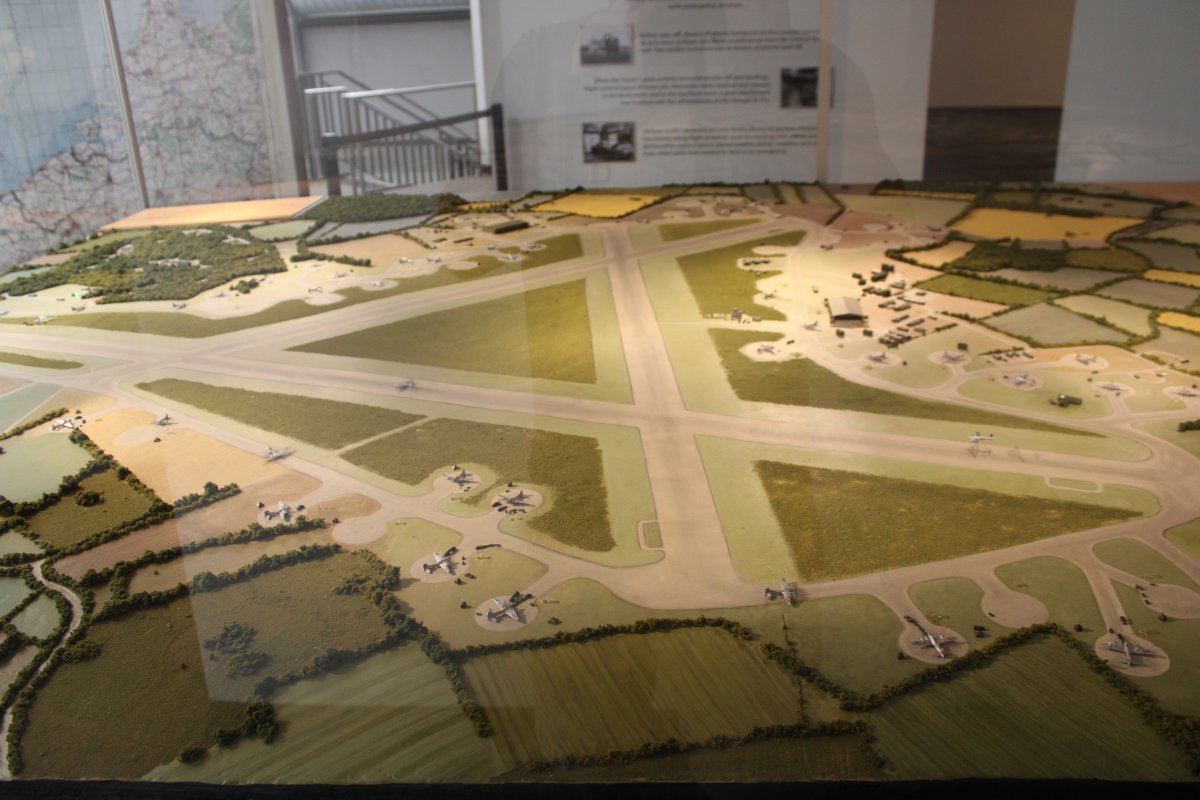 |
|
| An old favorite of mine: the North American T-2 Buckeye. I got five rides in the backseat of this bird during my Naval Flight Officer training in Pensacola, VT-10, way back in 1982. |
| |
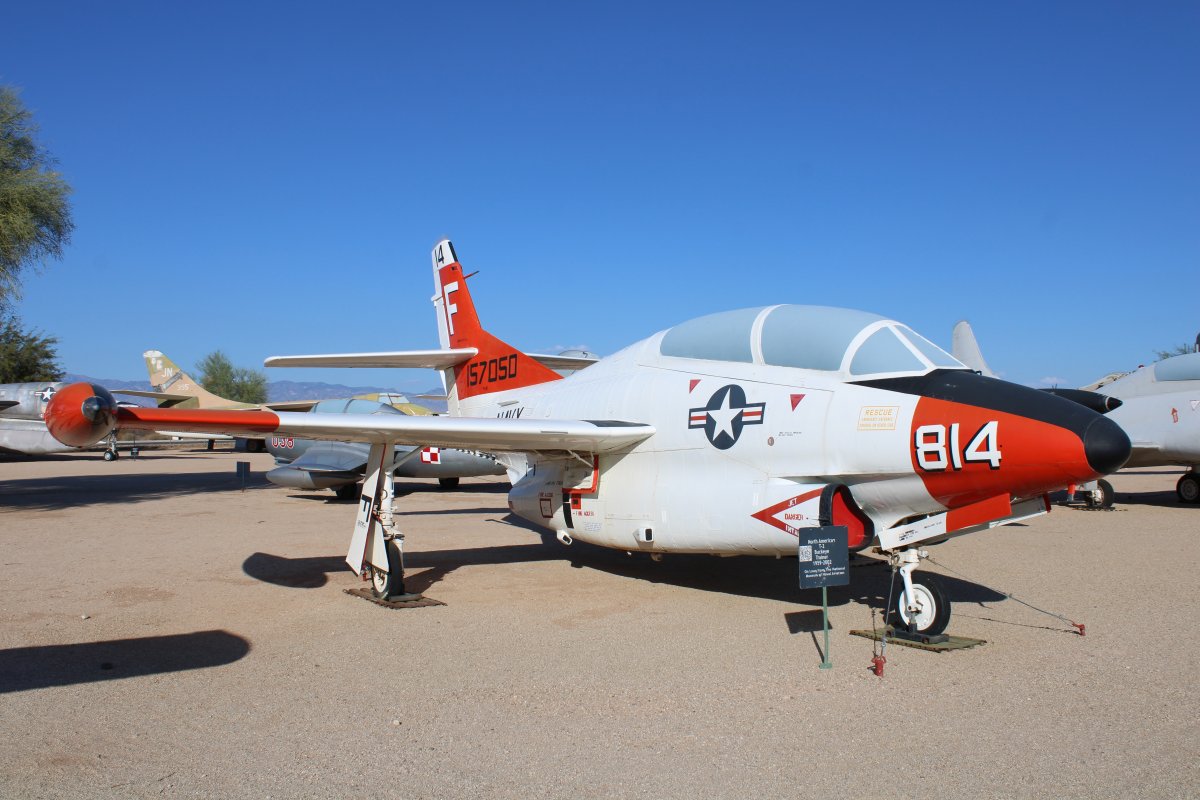 |
|
A big Lockheed C-141 Starlifter jet cargo plane. I flew in this plane a couple of times as a kid for space available travel. I have such bad memories of traveling by space available travel that I have never done it as an adult!
Production deliveries of an eventual 285 planes began in 1965. The aircraft remained in service for over 40 years until the USAF withdrew the last C-141s from service in 2006, after replacing the airlifter with the C-17 Globemaster III.
|
| |
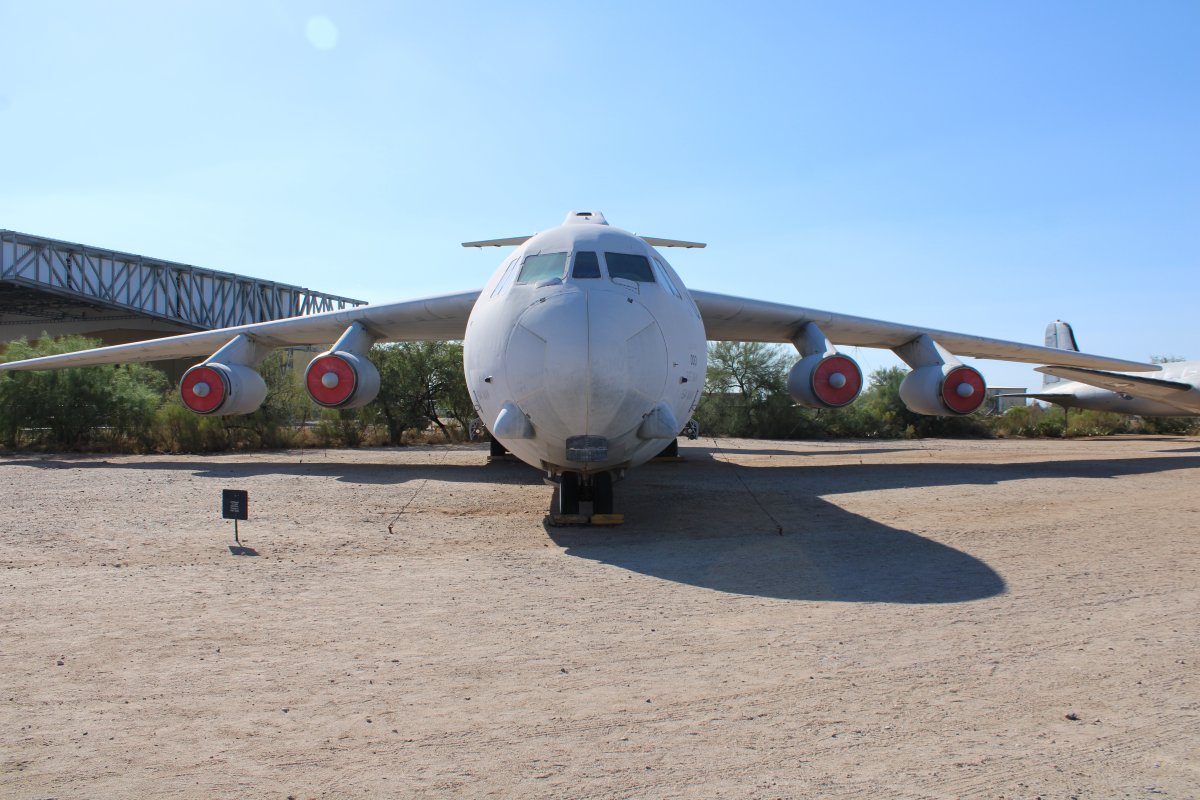 |
|
| Lots and lots of planes sitting on the hard desert floor. |
| |
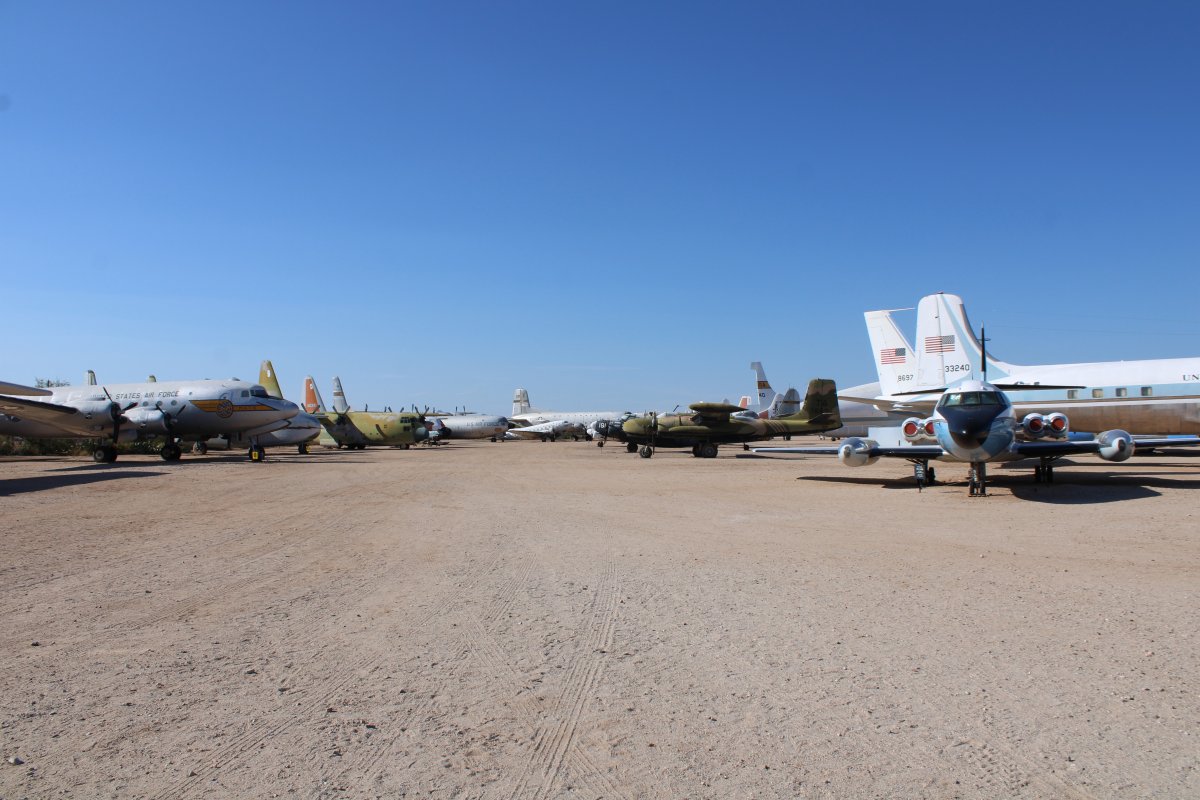 |
|
A Douglas A-26 Invader with a lot of firepower in the nose. It was a fast aircraft capable of carrying a large bomb load. A range of guns could be fitted to produce a formidable ground-attack aircraft. |
| |
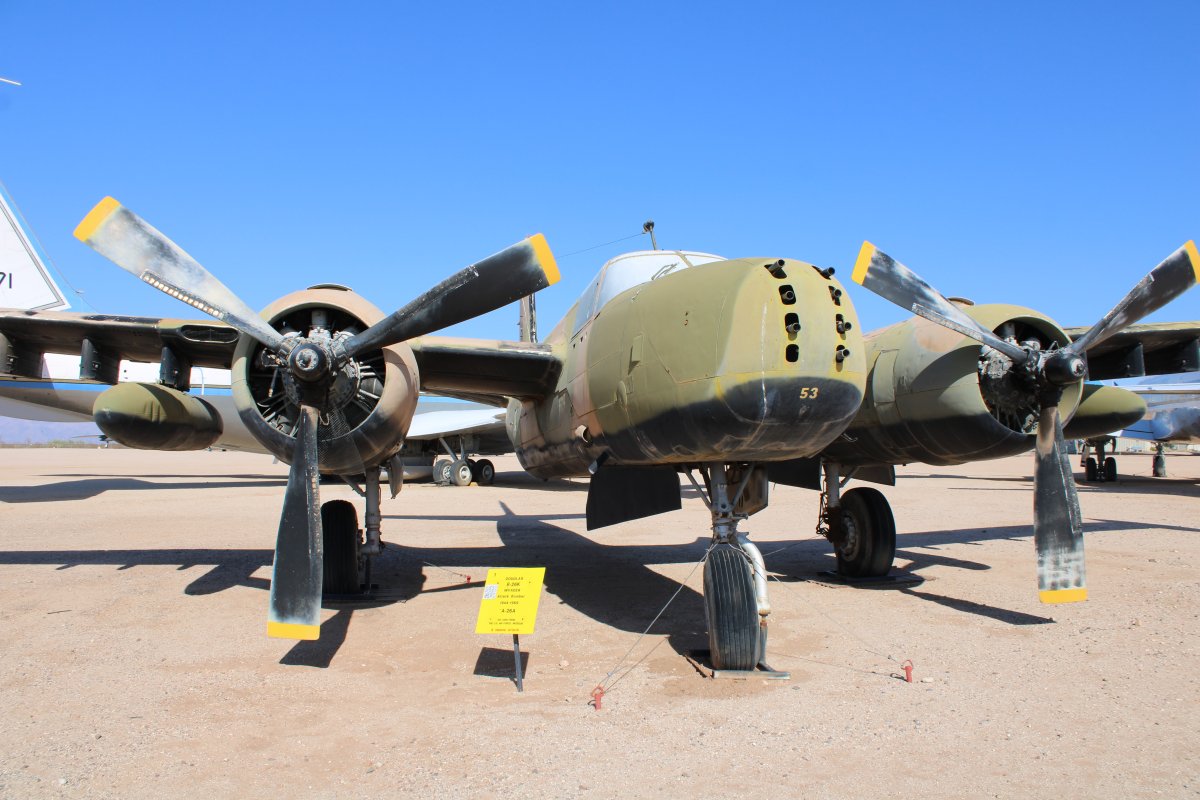 |
|
| A Douglas C-117D Skytrain. Operated by the U.S. Navy and Marine Corps, it was a later-model DC-3. My Dad flew one of these at Naval Air Facility Kadena in Okinawa. |
| |
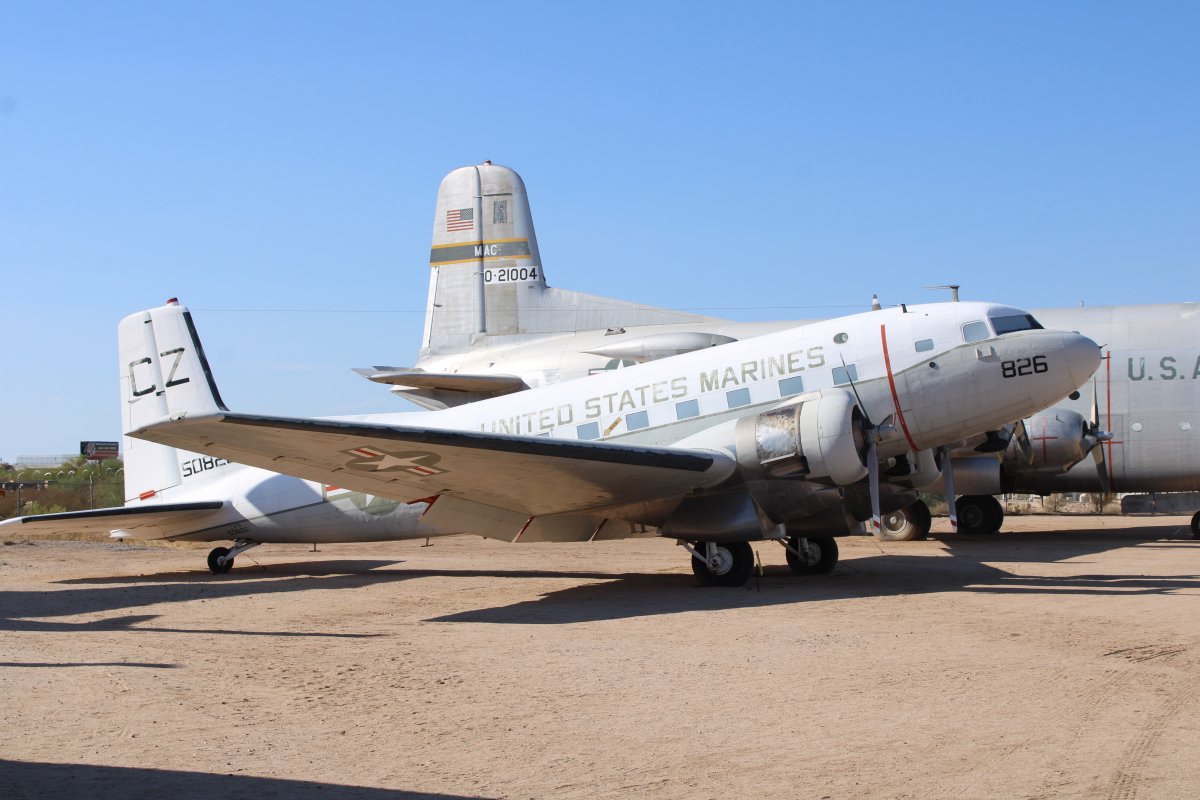 |
|
| A Douglas C-124 Globemaster II, nicknamed "Old Shaky". The C-124 was the primary heavy-lift transport for United States Air Force Military Air Transport Service (MATS) during the 1950s and early 1960s, until the Lockheed C-141 Starlifter entered service. 448 were built. |
| |
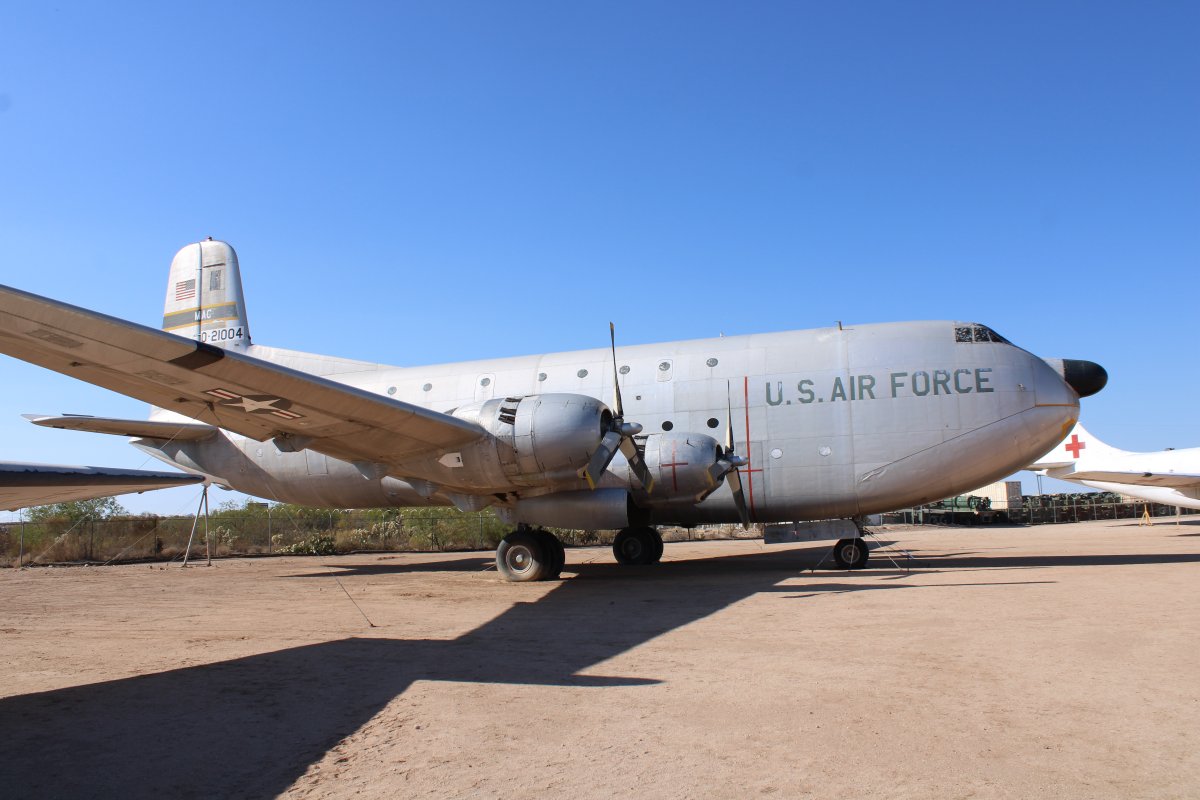 |
|
| A Boeing KB-50J Superfortress used as an air-to-air refueling tanker. A refined B-29, though not as well known as its direct predecessor, the B-50 was in USAF service for nearly 20 years. |
| |
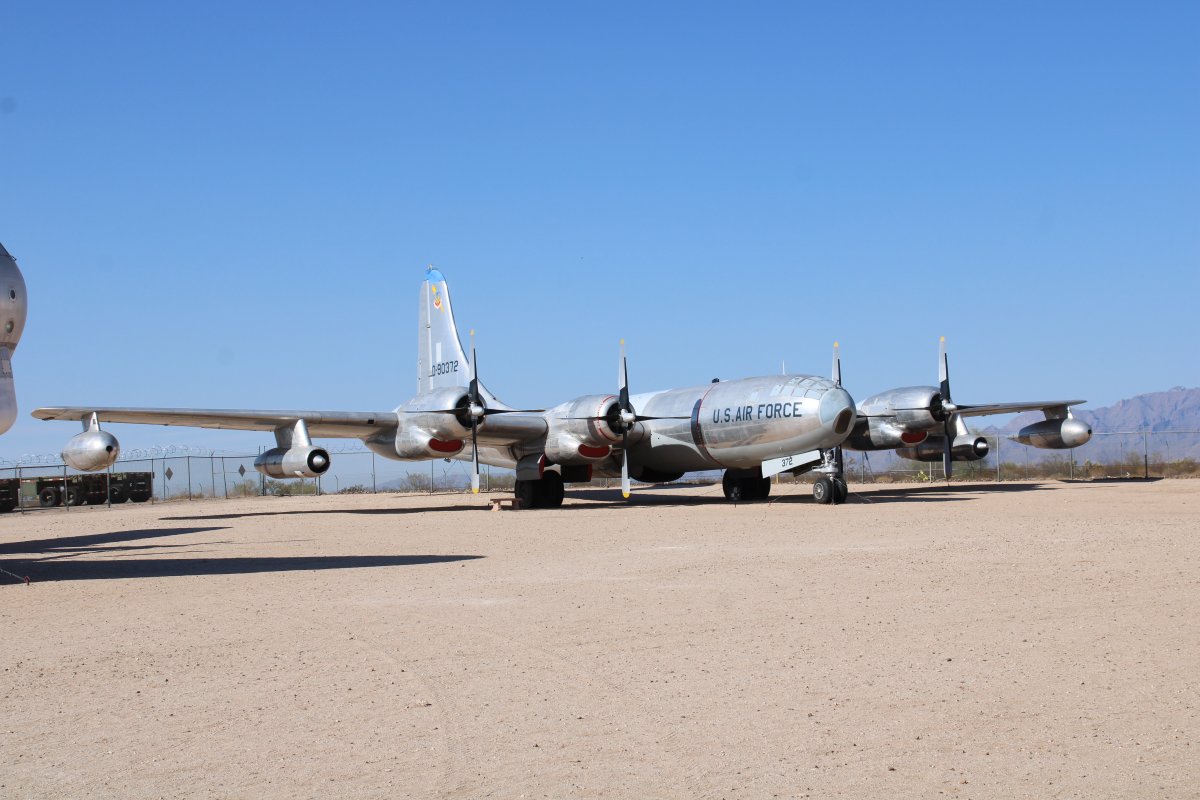 |
|
|
What's with the British and their funky looking planes? This is a Fairey Gannet -- AEW.3 variant. It is a variant of the Fairey Gannet anti-submarine warfare aircraft intended to be used in the airborne early warning (AEW) role on aircraft carriers of the Royal Navy. It was introduced to service in 1959 and remained in service until the last aircraft carrier that could operate it was retired in 1978.
|
| |
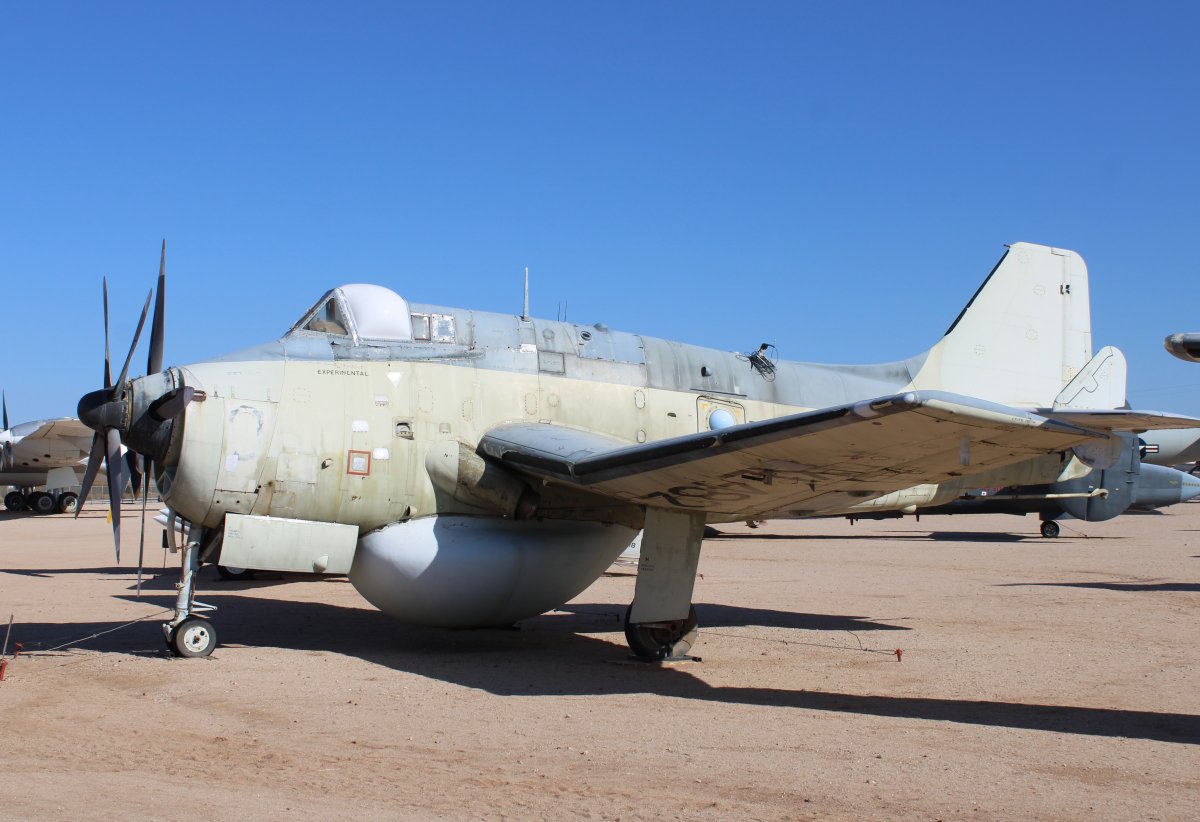 |
|
|
Boeing B-47 Stratojet bomber. This plane, bought in vast quantity -- 2,032 were built --, would become the backbone of the Strategic Air Command, and a direct descendant, the Boeing 707, would become the first U.S. commercial jet airliner. The B-47 was in service as a strategic bomber from the late 1950s until 1965.
|
| |
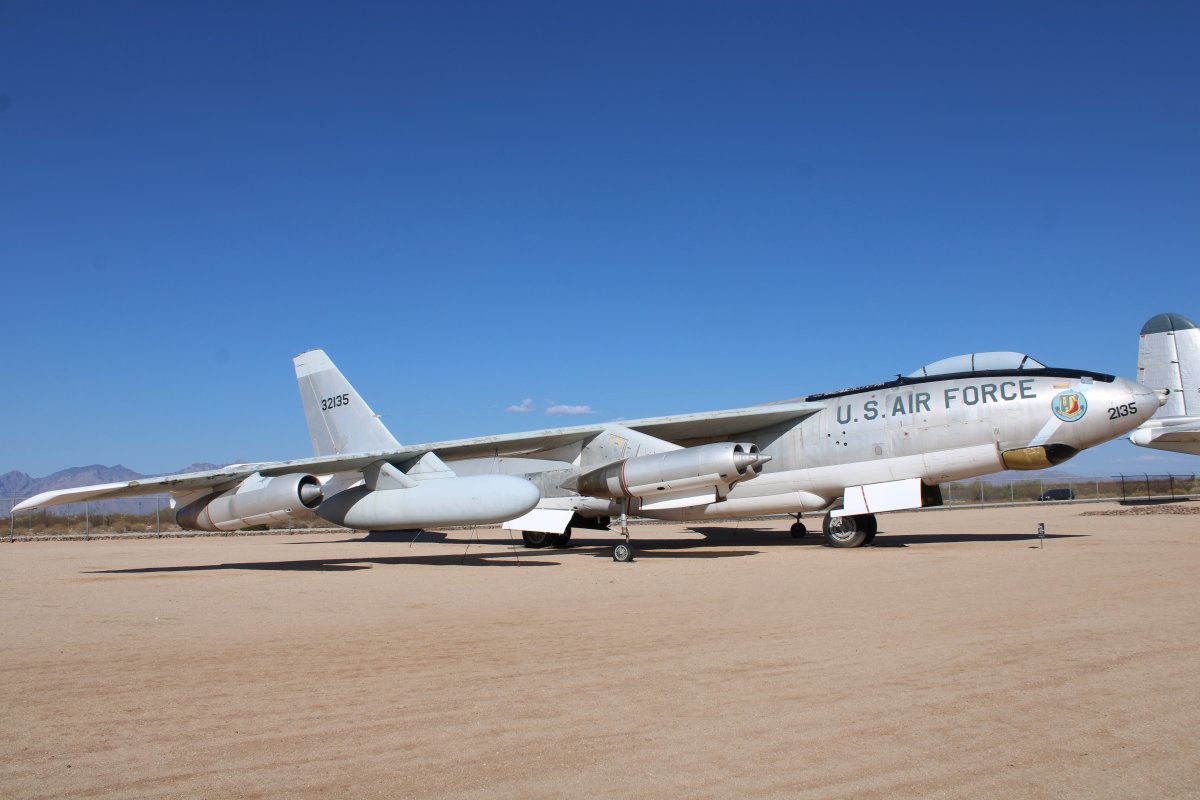 |
|
The big one. Convair B-36 Peacemaker. The first flight was in 1946, only a year after World War II ended! It was operated by the United States Air Force from 1949 to 1959. |
| |
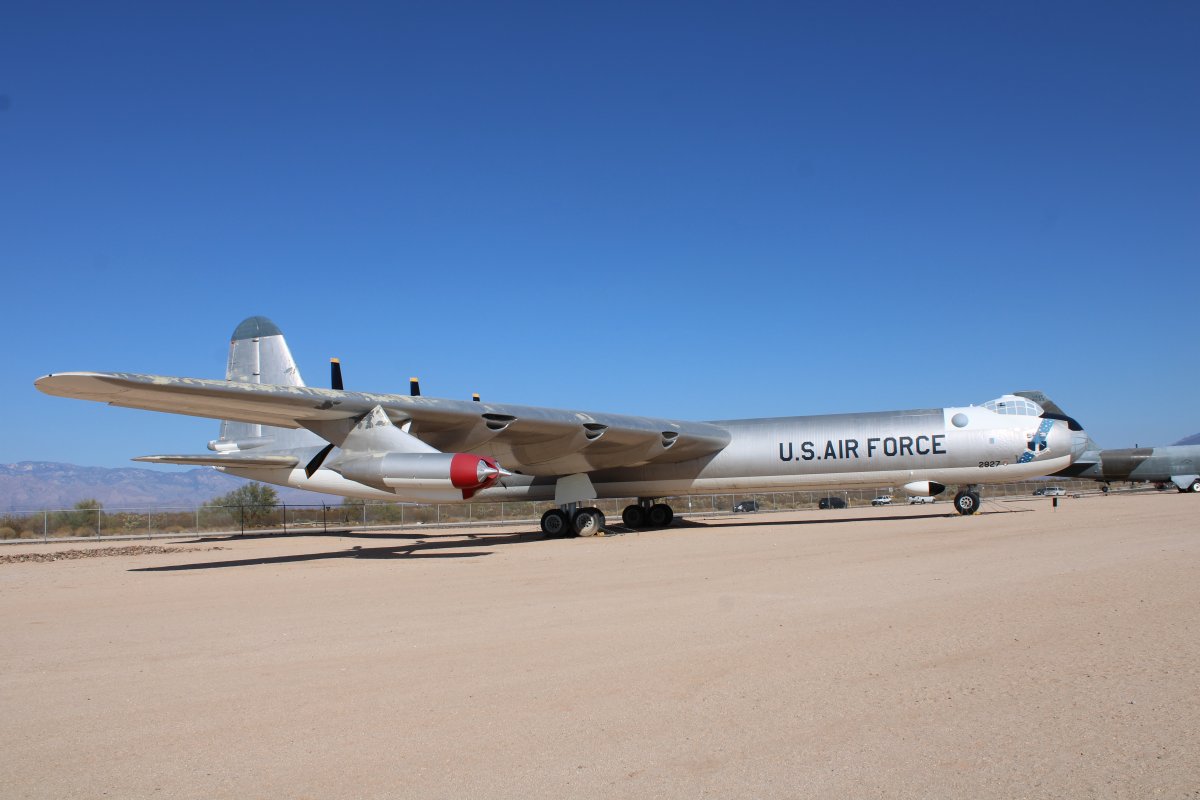 |
|
| And, of course, the Boeing B-52 Stratofortress. The B-52 has been in service with the USAF since 1955. 744 were built; as of June 2019, 58 are in service, 18 in reserve, and about 12 in long-term storage. Yes, the jet has been in operation for over 65 years! |
| |
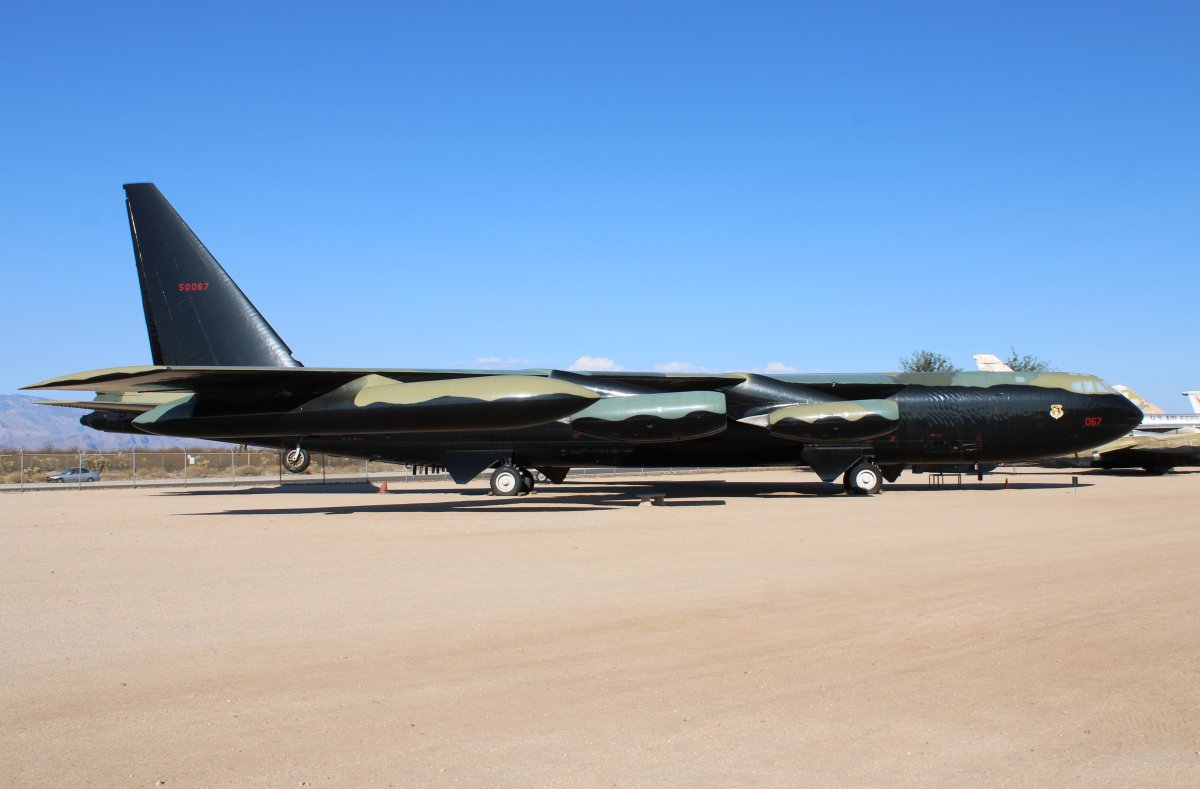 |
|
|
I have to have a picture of the mighty P-3 Orion which my Dad flew and I flew in. I wished they had a regular maritime patrol P-3; this one is just a VIP transport.
|
| |
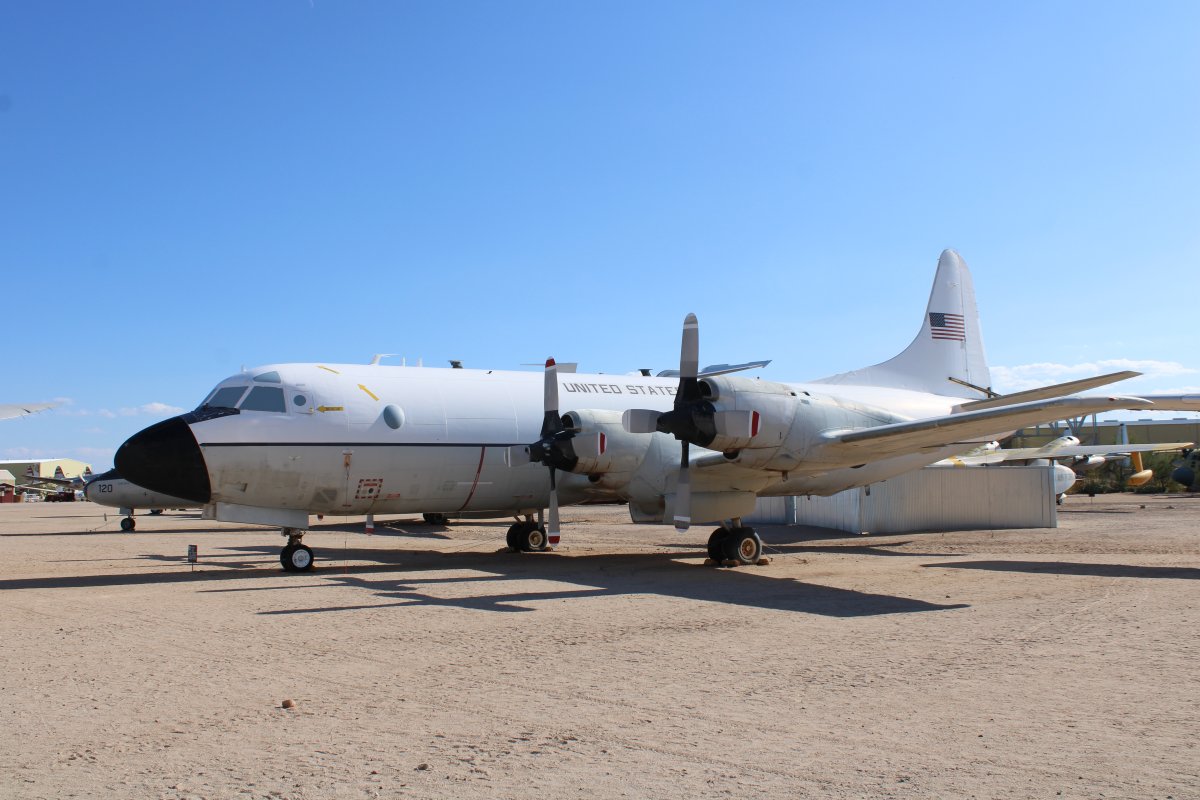 |
|
| A big Royal Air Force Avro Shackleton, used for maritime patrol/anti-submarine warfare from 1951 to 1991. A small number received extensive modifications in order to adapt them to perform the airborne early warning (AEW) role. This is an AEW Shackleton. Named after the polar explorer Sir Ernest Shackleton, it was developed by Avro from the Avro Lincoln bomber, which itself had been a development of the famous wartime Avro Lancaster bomber. Yes, I can see the resemblance. |
| |
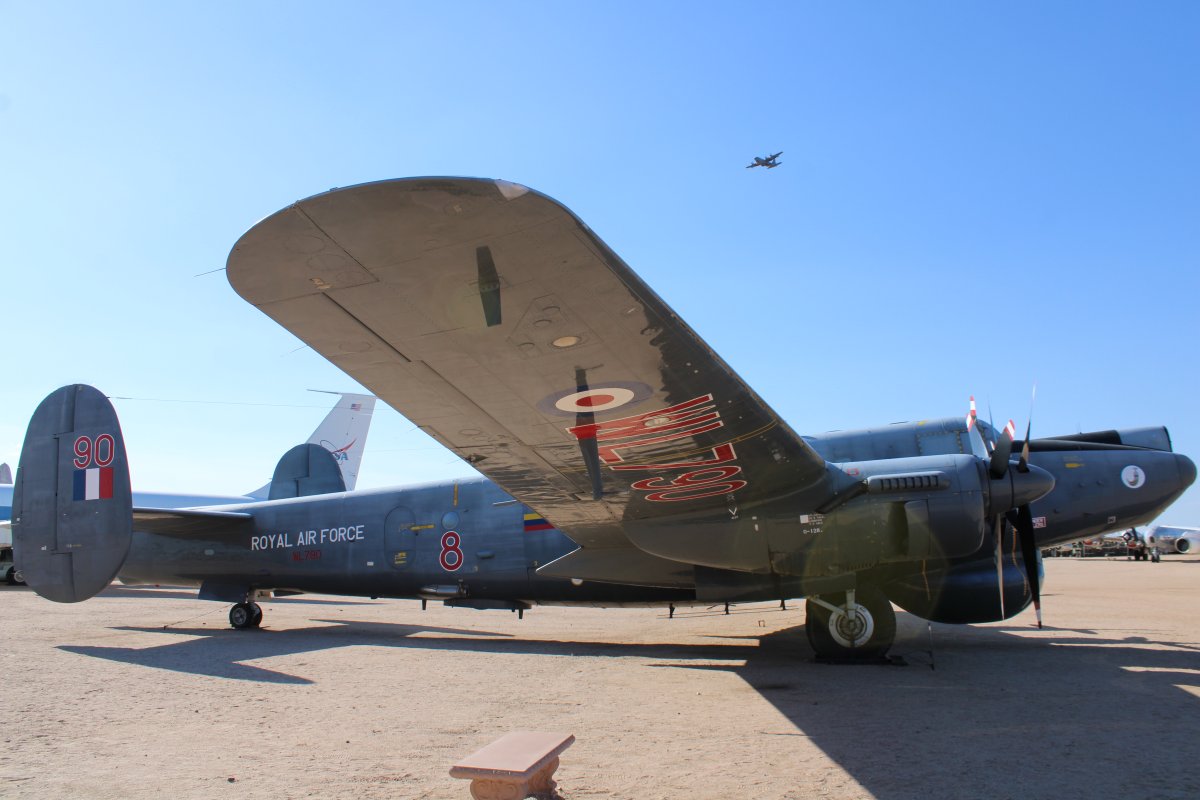 |
|
Dassault Etendard IVM. It was the French Navy's strike fighter from 1958 to 1991. 69 were built. The type operated on both of the French Navy's Clemenceau-class aircraft carriers, the Clemenceau and Foch. The type was gradually relegated to secondary missions in favour of the Super Étendard.
|
| |
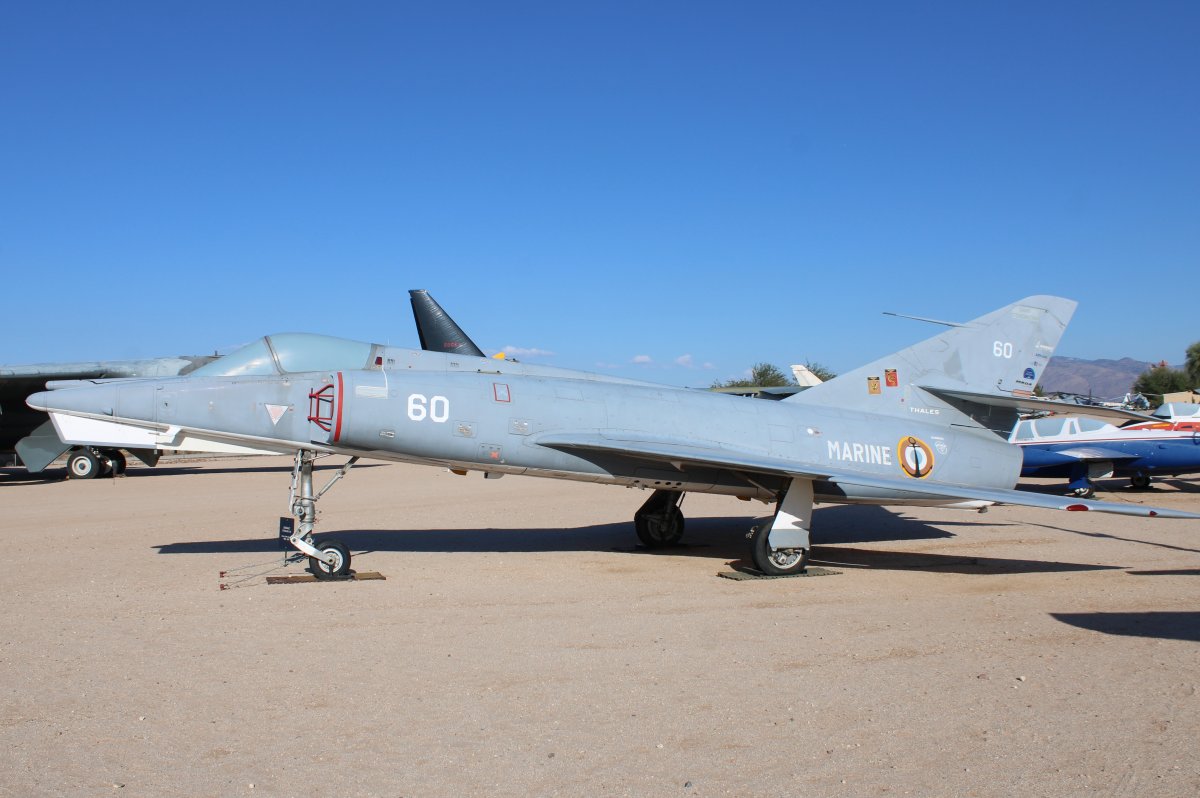 |
|
|
The B-58 entered service in March 1960, and flew for a decade with two SAC bomb wings. It was considered difficult to fly, imposing a high workload upon its three-man crews. Designed to replace the Boeing B-47 Stratojet strategic bomber, the B-58 became notorious for its sonic boom heard on the ground by the public as it passed overhead in supersonic flight.
The B-58 was designed to fly at high altitudes and supersonic speeds to avoid Soviet interceptors. But with the Soviet introduction of high-altitude surface-to-air missiles, the B-58 was forced to adopt a low-level-penetration role that severely limited its range and strategic value. It was never used to deliver conventional bombs. The B-58 was substantially more expensive to operate than other bombers, such as the Boeing B-52 Stratofortress, and required more frequent aerial refueling. The B-58 also suffered from a high rate of accidental losses. These factors resulted in a relatively brief operational career of ten years. The B-58 was succeeded in its role by the smaller, swing-wing FB-111A.
|
| |
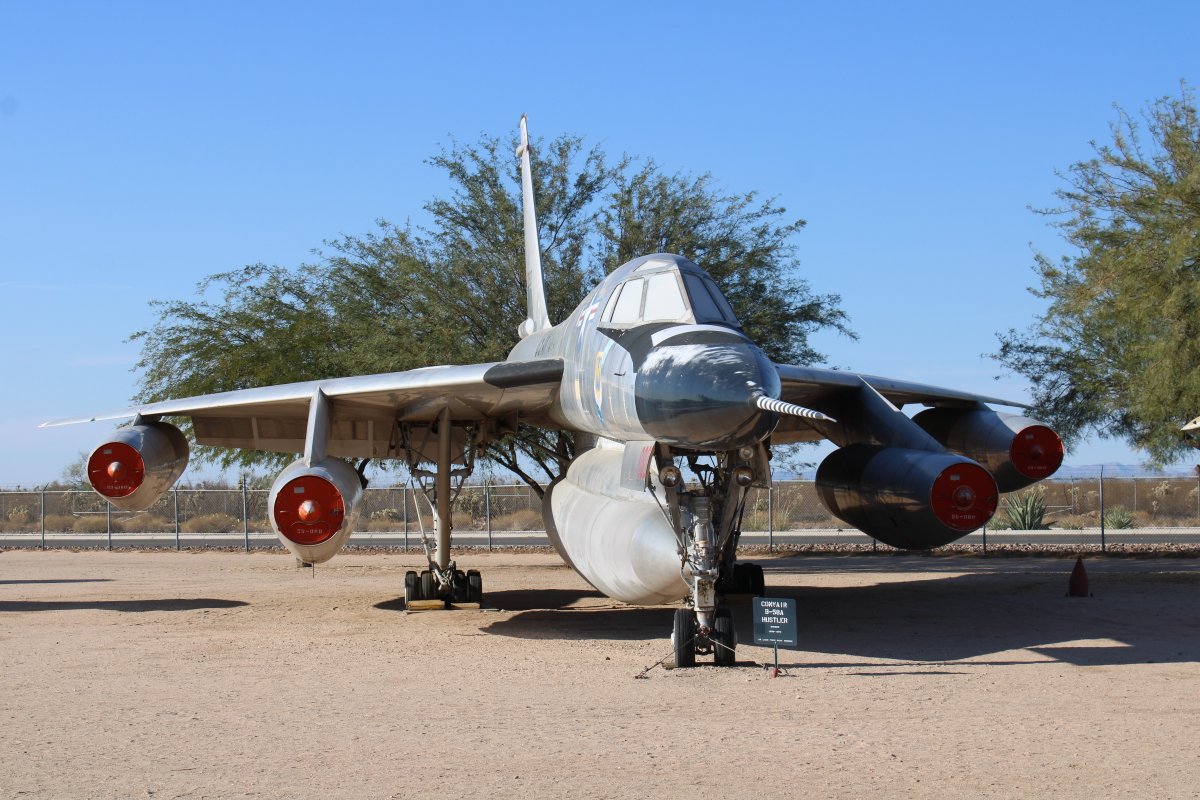 |
|
|
Soviet Union/Russian MiG-29 Fulcrum.
The MiG-29, along with the larger Sukhoi Su-27, was developed to counter new U.S. fighters such as the F-15 Eagle and the F-16 Fighting Falcon. The MiG-29 entered service with the Soviet Air Forces in 1982. Over 1,700 have been built. The MiG-29 has been a popular export aircraft; more than 30 nations either operate or have operated the aircraft to date.
|
| |
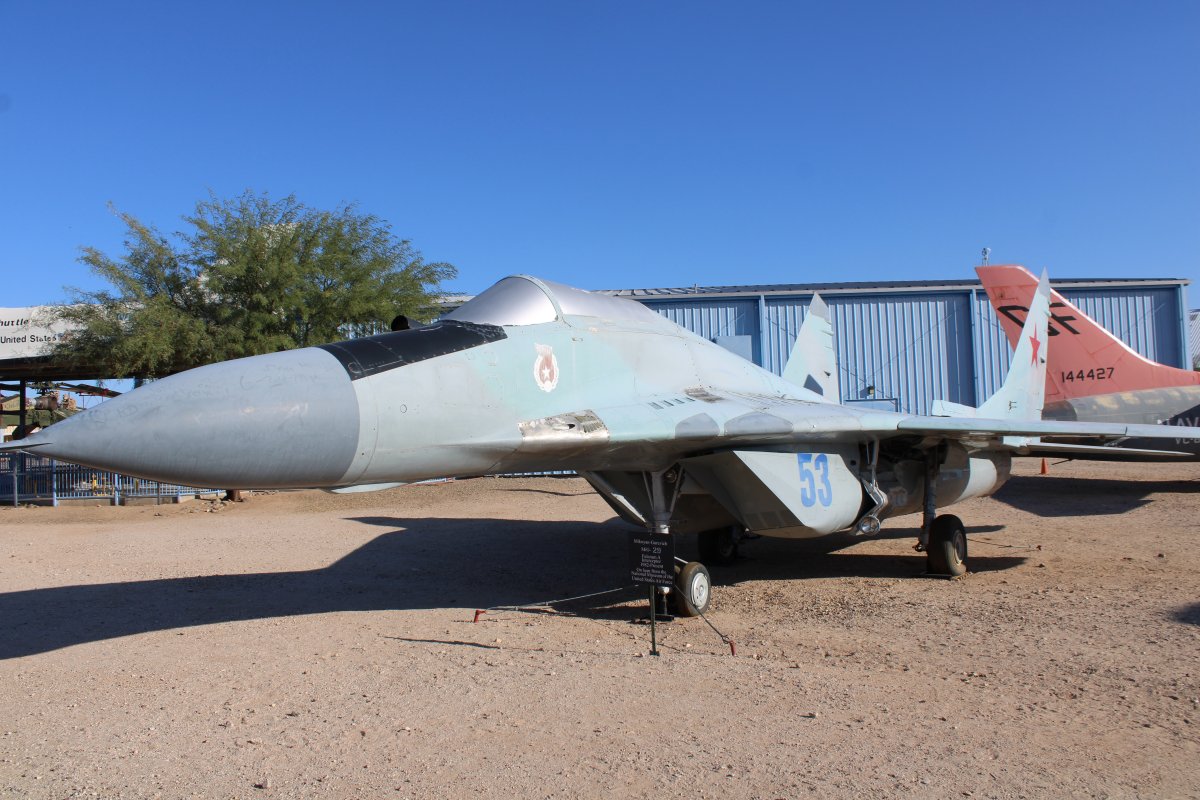 |
|
| The Sikorsky CH-54 Tarhe is an American twin-engine heavy-lift helicopter designed by Sikorsky Aircraft for the United States Army. It is named after Tarhe, an 18th-century chief of the Wyandot Indian tribe whose nickname was "The Crane". The civil version is the S-64 Skycrane. The CH-54 has been in operation from 1966 until the present. 105 were built. It has a 20,000 pound (10 tons) payload. |
| |
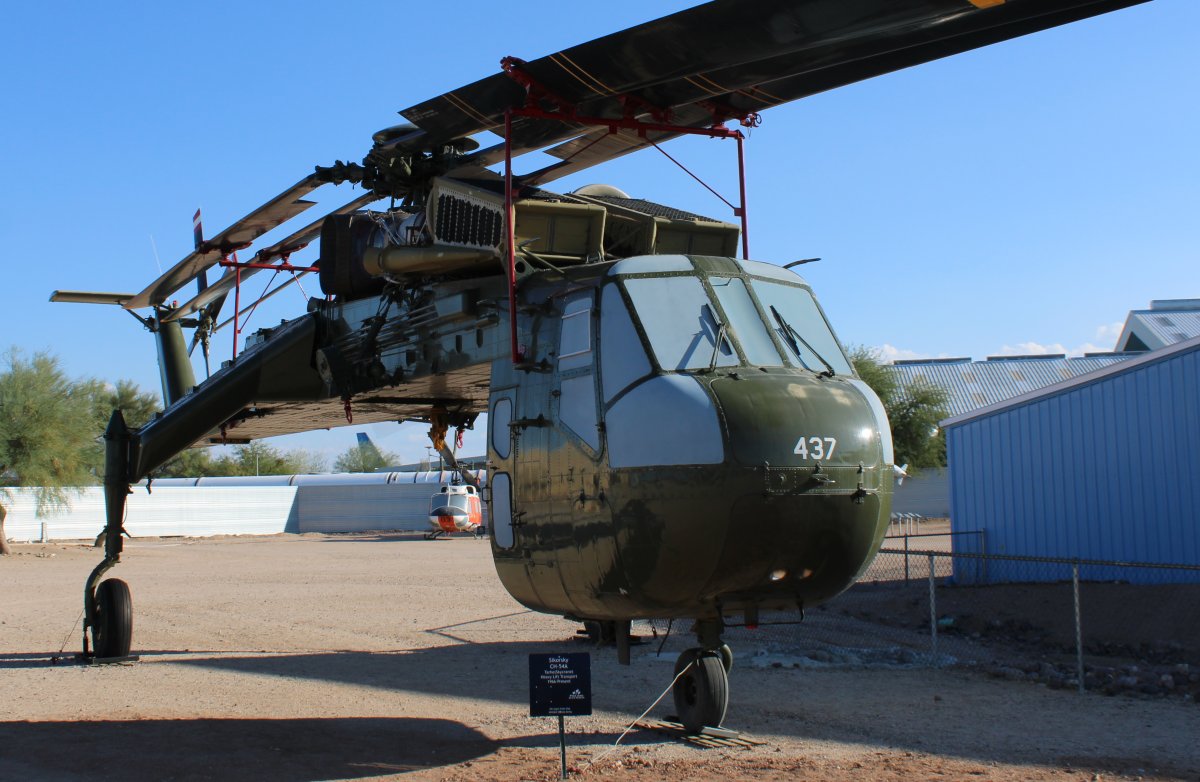 |
|
| Ah, one of my favorites: the CH-46E Sea Knight. Also known as the "Phrog", 524 of this medium lift transport helicopter were built. The CH-46 was the US Navy's standard medium-lift utility helicopter -- that's where I encountered it when I was on the Destroyer Squadron staff -- prior to the type being phased out of service in favor of the MH-60S Knighthawk during the early 2000s. It was also operated by the Marines to provide all-weather, day-or-night assault transport of combat troops, supplies and equipment until it was replaced by the MV-22 Osprey during the 2010s. |
| |
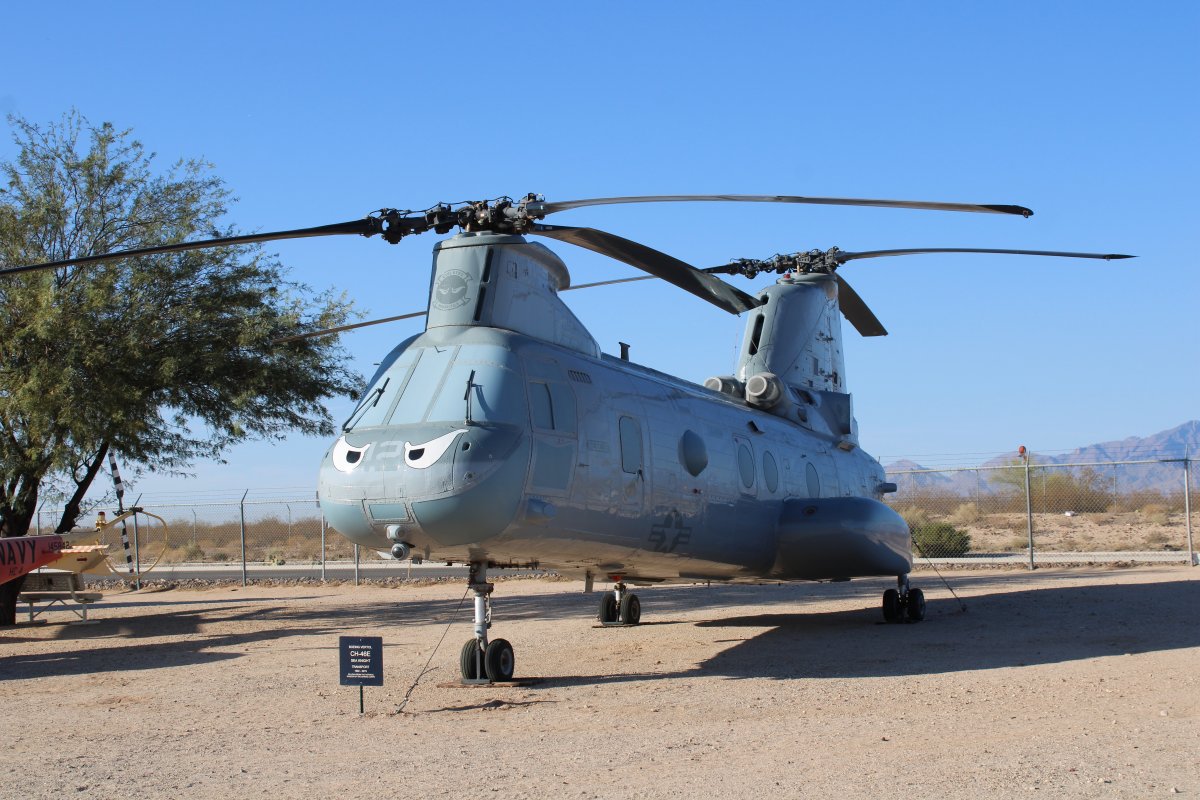 |
|
| The Soviet/Russian Mi-24 Hind, liked during the Cold War to a huge, vicious insect. A large helicopter gunship, attack helicopter and low-capacity troop transport with room for eight passengers, it has been operated since 1972 by the Soviet Air Force and its successors, along with 48 other nations. 2,648 have been built and involved in numerous wars and conflicts. |
| |
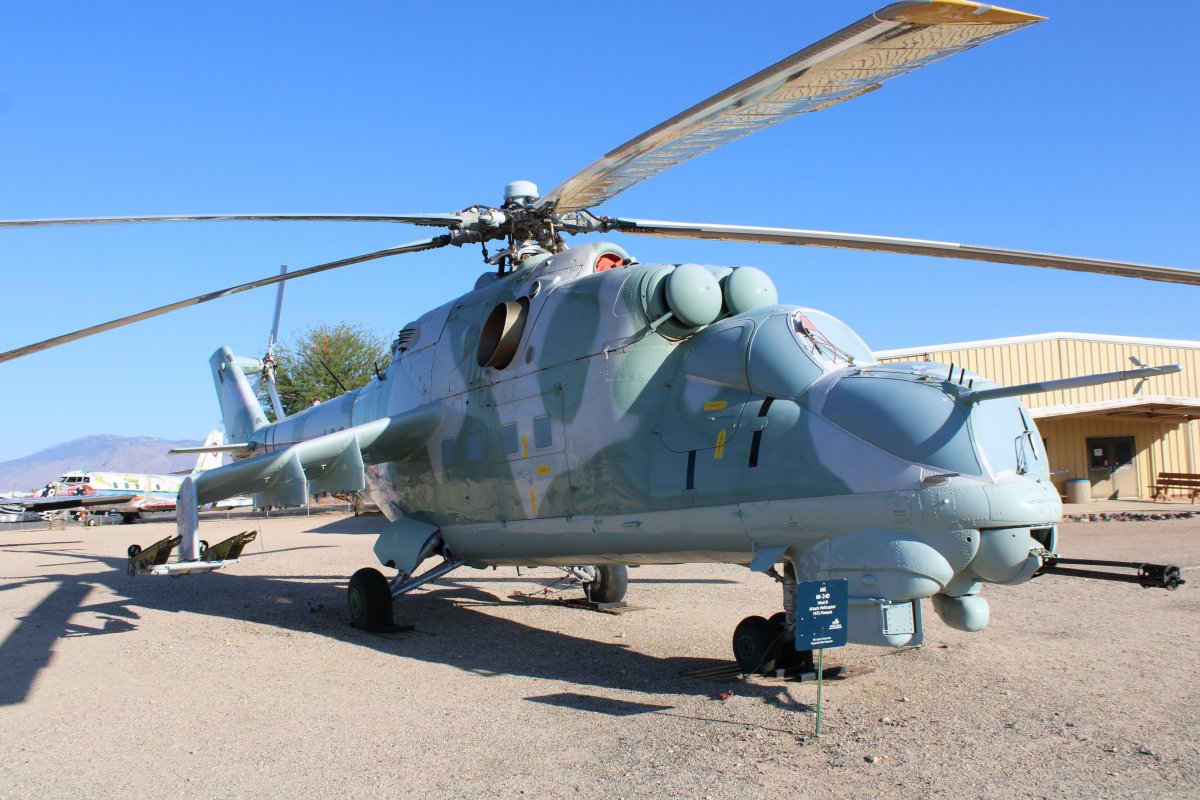 |
|
|
Soviet pilots called the Mi-24 the "flying tank", a term used historically with the famous World War II Soviet Il-2 Shturmovik armored ground attack aircraft.
|
| |
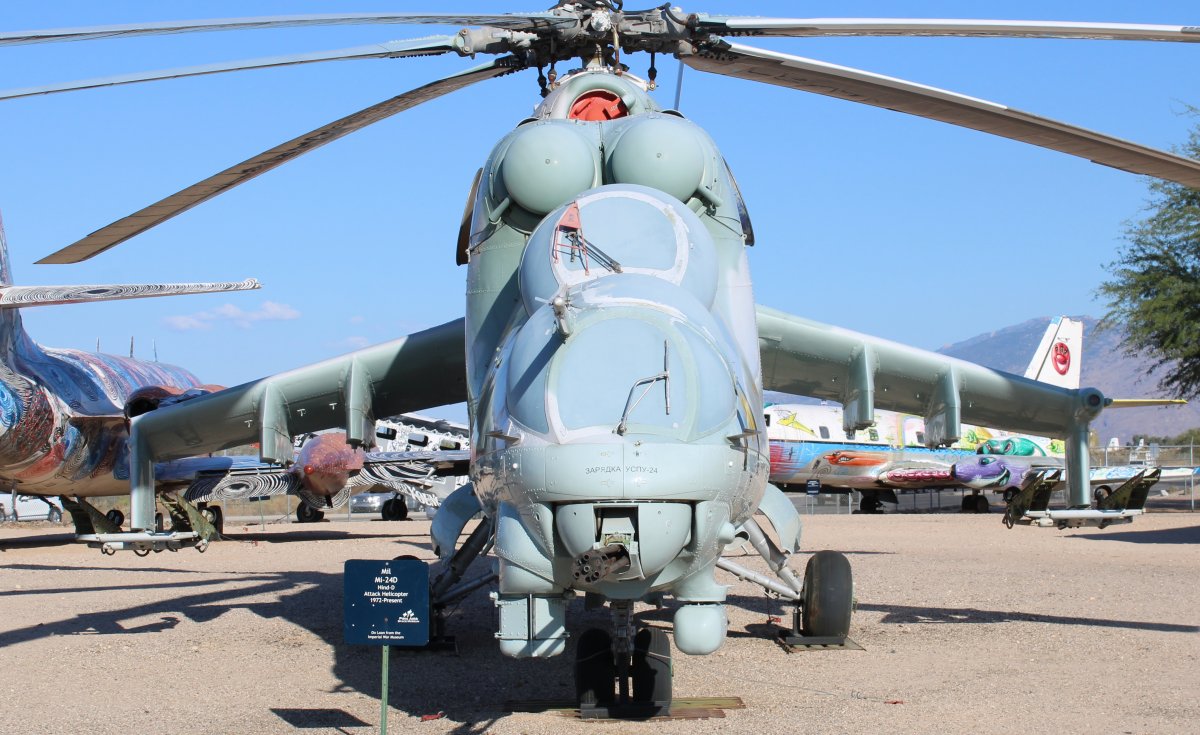 |
|
| Back in Hangar One, a photo of PASM's immaculate F-14 Tomcat is required. |
| |
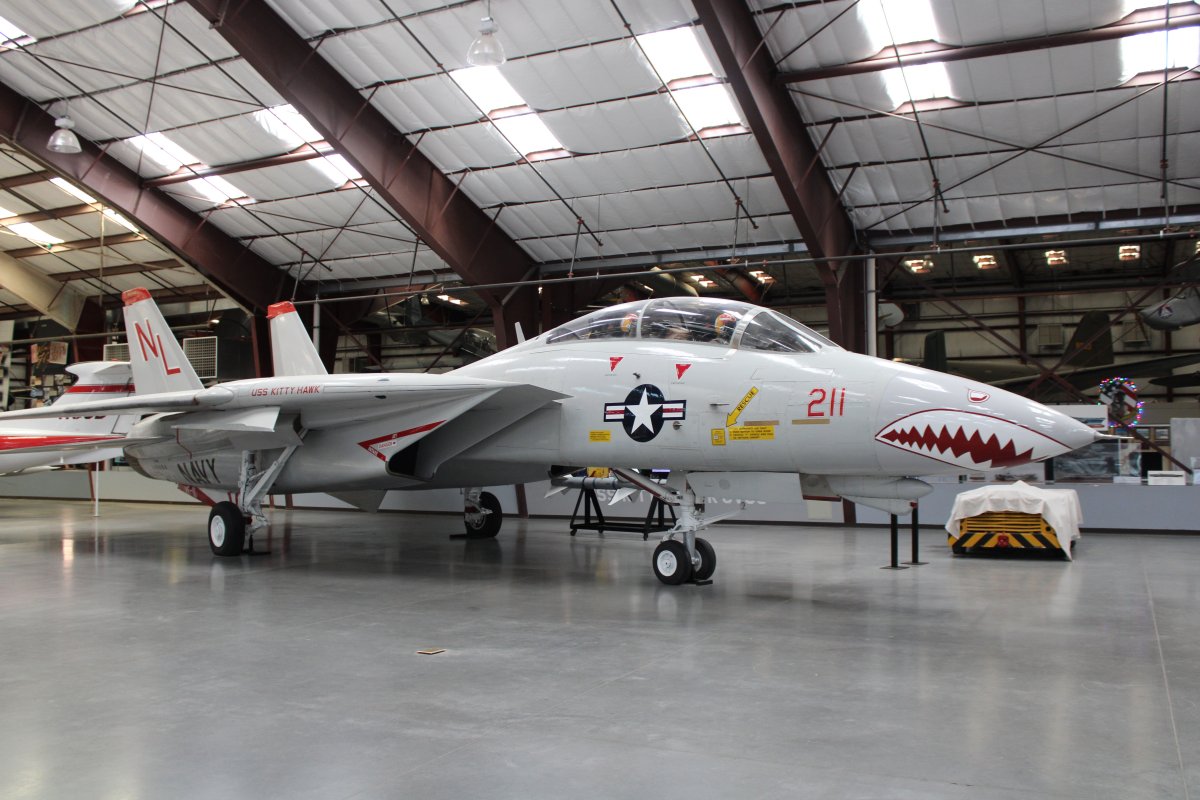 |
|
|
An excellent model of USS Enterprise (CVN-65), the first nuclear-powered aircraft carrier.
|
| |
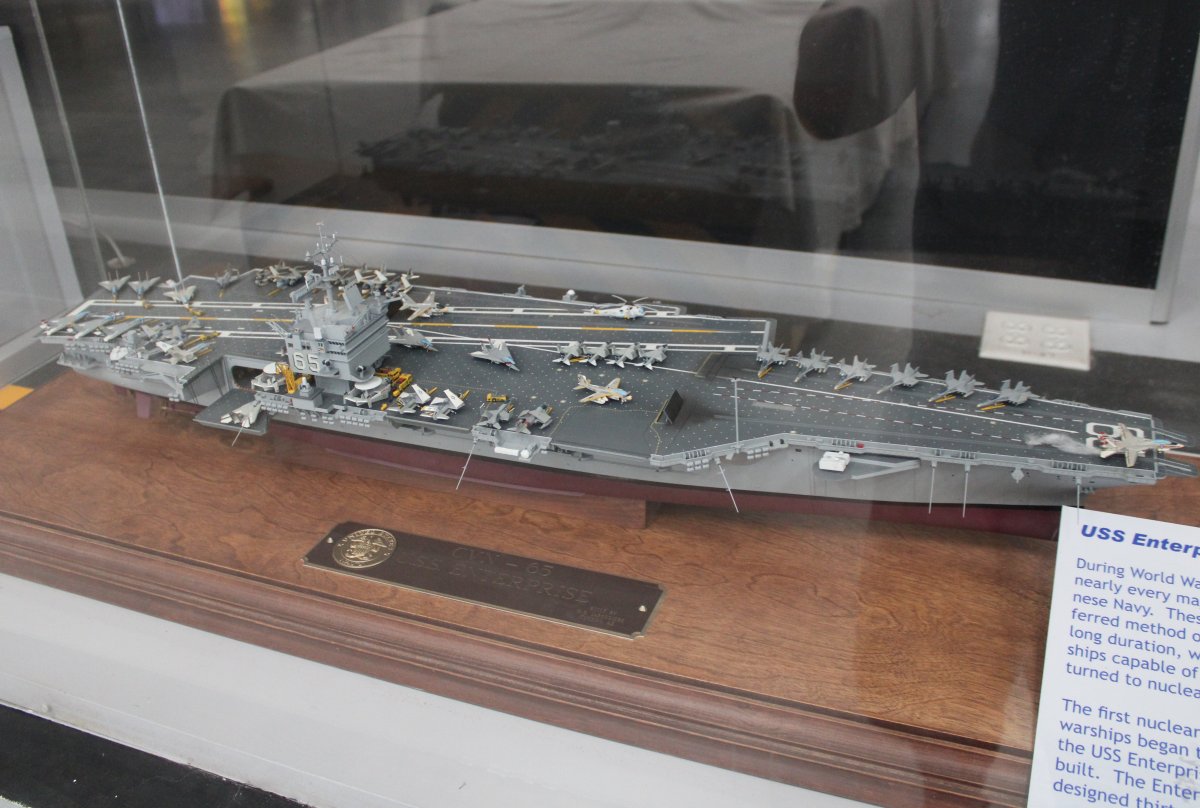 |
|
| A model of the USS Langley, the U.S. Navy's first aircraft carrier. |
| |
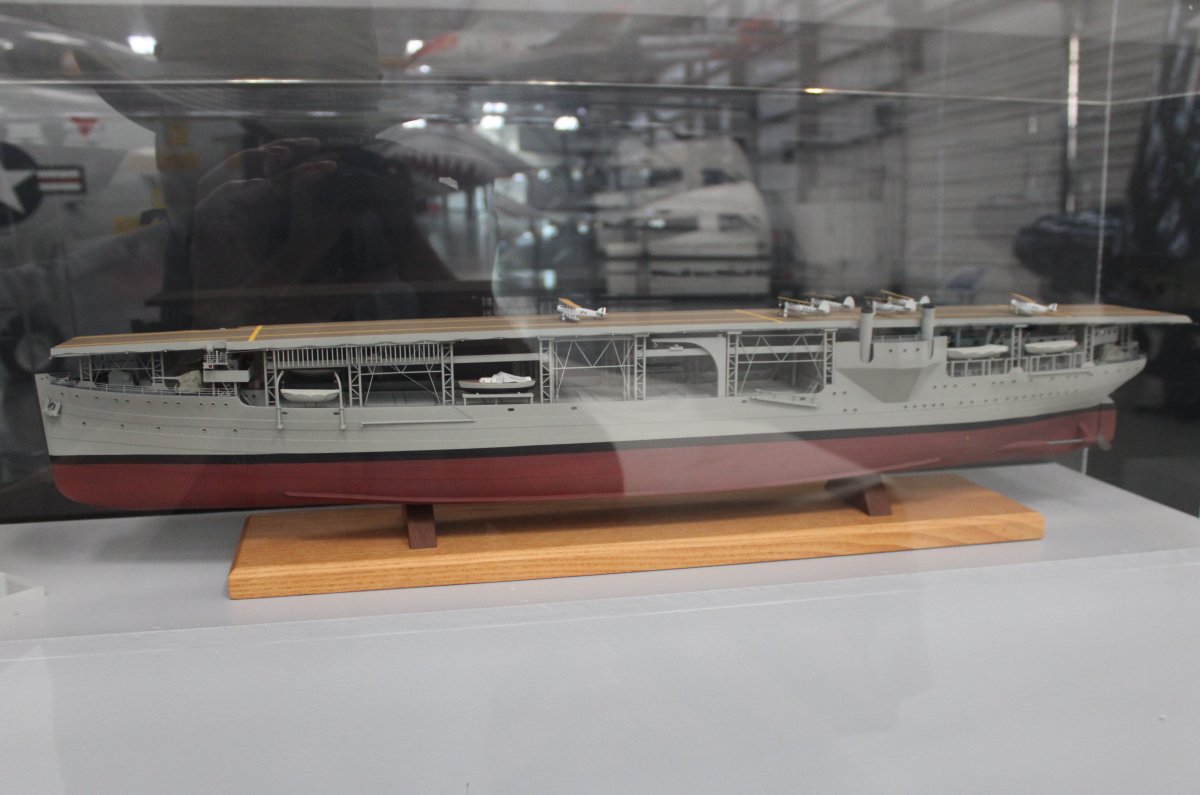 |
|
| The museum had a nice area on anti-submarine warfare which I enjoyed since that was my specialty during my Navy career. These are sonobuoys, which we would drop out of the P-3. The one on the left is the SSQ-53 Difar buoy which is the one we used the most by far. It would give a line of bearing on a contact and radio it back up to the plane. The one on the right is the SSQ-36 BT buoy. We'd drop one at the beginning of the on-station period to measure the ocean temperature and salinity at various depths. |
| |
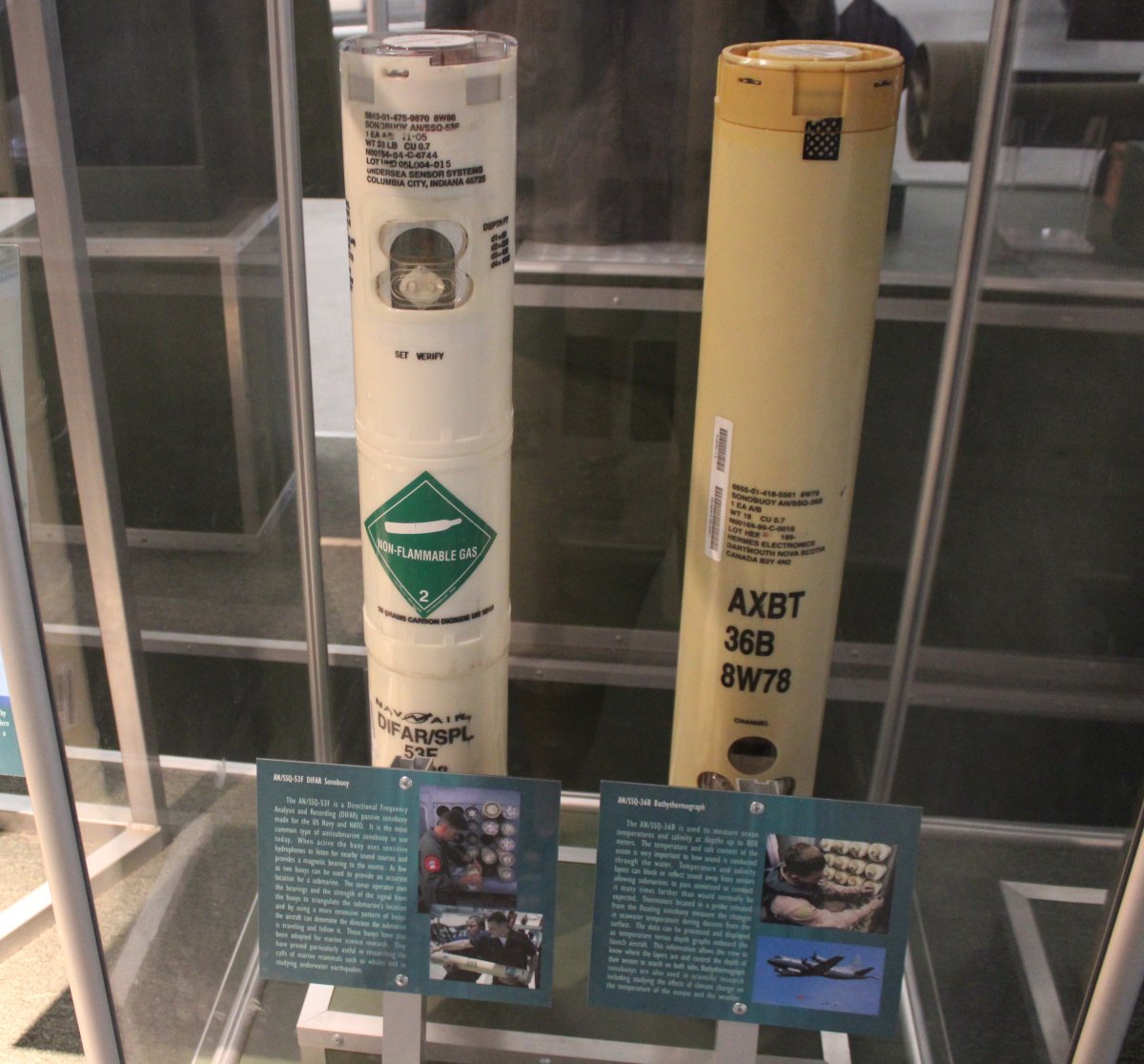 |
|
Ah, the MK-46 lightweight anti-submarine torpedo. Find the sub, then drop one of these on the sub. No more sub. The P-3 crewmembers would have to load their own weapons -- torpedoes and Harpoons -- so I have quite a bit of experience with loading one of these into a P-3 bomb bay. |
| |
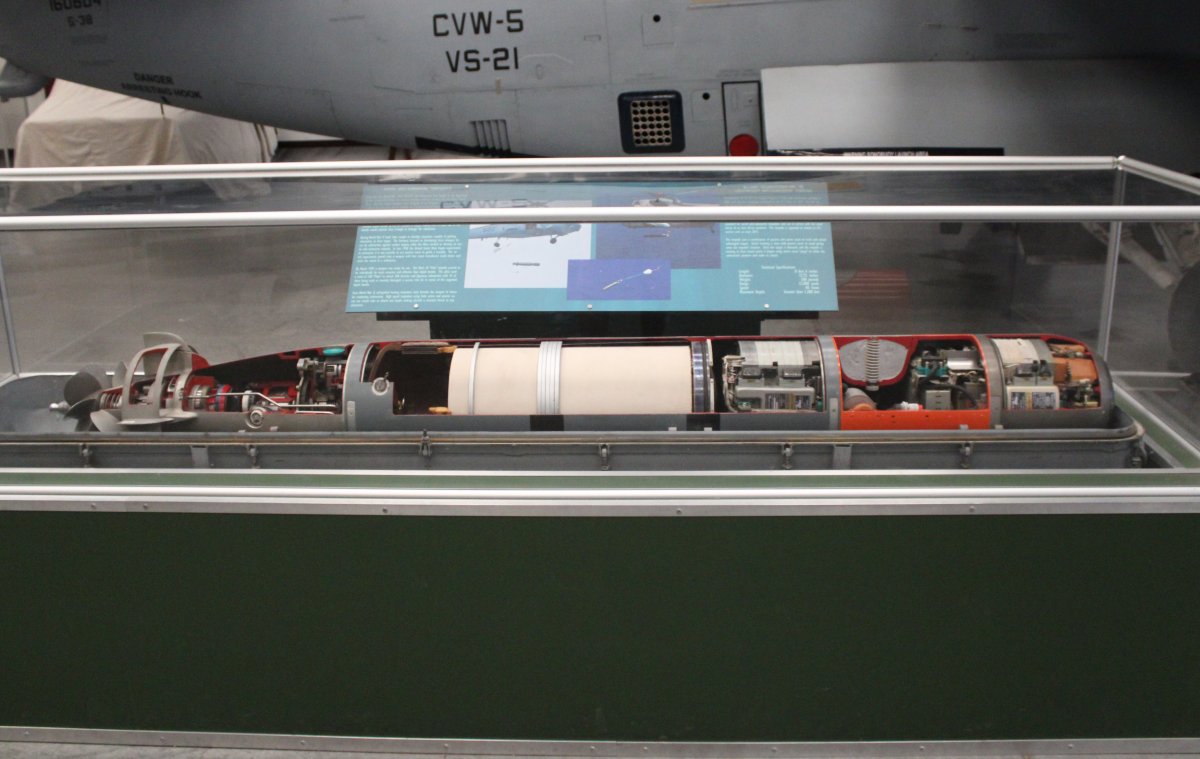 |
|
A B-57 nuclear bomb which a P-3 could carry for use against a submarine. These were phased out of the P-3's weapons inventory during my first tour, thankfully. |
| |
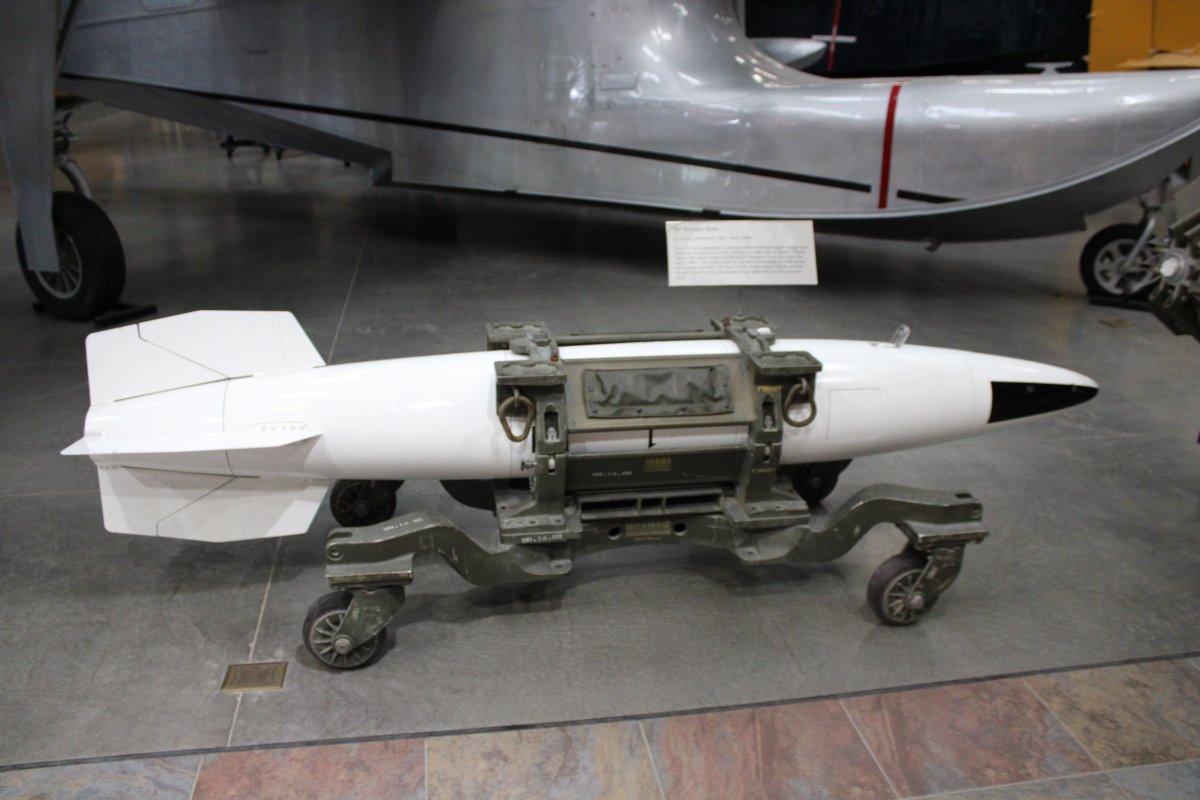 |
|
| Soviet Typhoon ballistic missile submarine. Yeah, the Hunt for Red October. With a submerged displacement of 48,000 tonnes, the Typhoons are the largest submarines ever built. Only six were built, and only one remains in service. |
| |
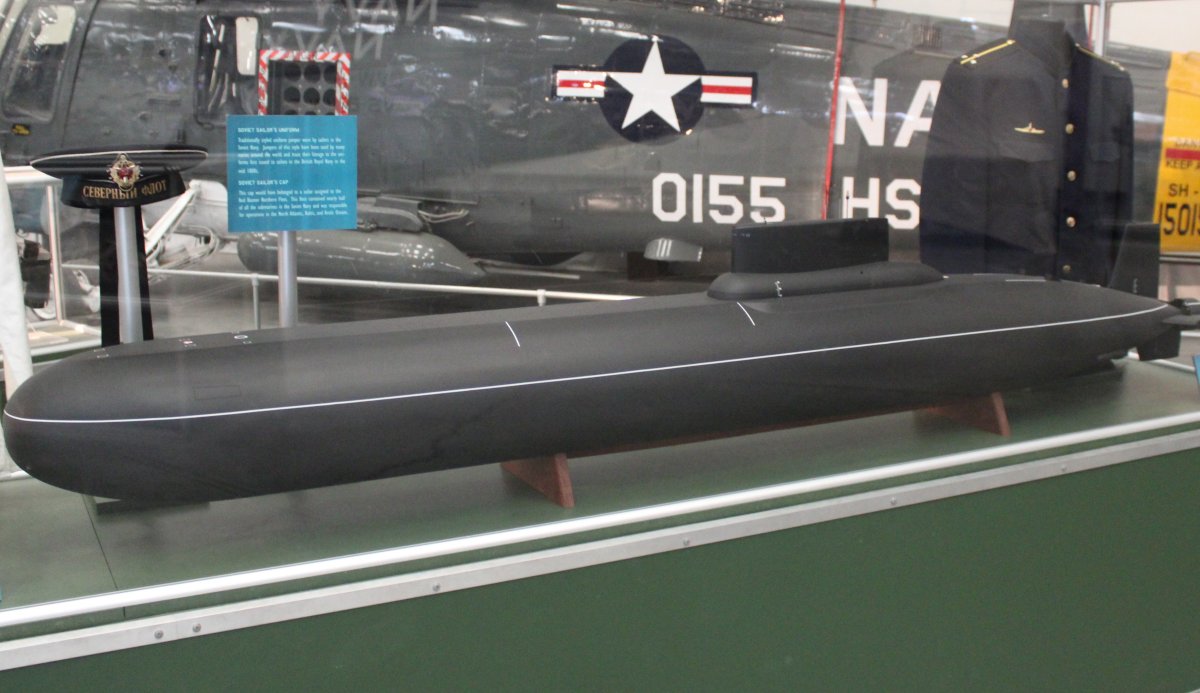 |
|
|
The OH-58D (developed from the Bell Model 406) was the result of the Army Helicopter Improvement Program (AHIP). An upgraded transmission and engine gave the aircraft the power it needed for nap-of-the-earth flight profiles, and a four-bladed main rotor made it much quieter than the two-bladed OH-58C. The OH-58D introduced the distinctive Mast-Mounted Sight (MMS) above the rotor system, and a mixed glass cockpit, with traditional instruments identified as "standby" for emergency use.
This is a Kiowa Warrior, the armed version of the OH-58D Kiowa. The main difference that distinguishes the Kiowa Warrior from the original AHIP aircraft is a universal weapons pylon found mounted on both sides of the aircraft. These pylons are capable of carrying combinations of AGM-114 Hellfire missiles, air-to-air Stinger (ATAS) missiles, 7-shot 2.75 inches (70 mm) Hydra-70 rocket pods, and an M296 .50 caliber machine gun. That's a lot of firepower in a little helicopter.
I have an interest in the OH-58D because of when I was deployed to the Persian Gulf back in 1988 as a member of Destroyer Squadron 20 during Operation Prime Chance/Earnest Will.
From Wikipedia: In early 1988, it was decided that armed OH-58D (AHIP) helicopters from the 118th Aviation Task Force would be phased in to replace the SEABAT (AH-6/MH-6) teams of Task Force 160th to carry out Operation Prime Chance, the escort of oil tankers during the Iran–Iraq War. On 24 February 1988, two AHIP helicopters reported to the Mobile Sea Base Wimbrown VII, and the helicopter team ("SEABAT" team after their callsign) stationed on the barge returned to the United States. For the next few months, the AHIP helicopters on the Wimbrown VII shared patrol duties with the SEABAT team on the Hercules. Coordination was difficult, but despite frequent requests from TF-160, the SEABAT team on the Hercules was not replaced by an AHIP detachment until June 1988.The OH-58D helicopter crews involved in the operation received deck landing and underwater survival training from the Navy.
In November 1988, the number of OH-58D helicopters that supported Task Force 118 was reduced. However, the aircraft continued to operate from the Navy's Mobile Sea Base Hercules, the frigate Underwood, and the destroyer Conolly. OH-58D operations primarily entailed reconnaissance flights at night, and depending on maintenance requirements and ship scheduling, Army helicopters usually rotated from the mobile sea base and other combatant ships to a land base every seven to fourteen days. On 18 September 1989, an OH-58D crashed during night gunnery practice and sank, but with no loss of personnel. When the Mobile Sea Base Hercules was deactivated in September 1989, all but five OH-58D helicopters redeployed to the continental United States.
The Army retired the OH-48Ds in the mid-2010s.
|
| |
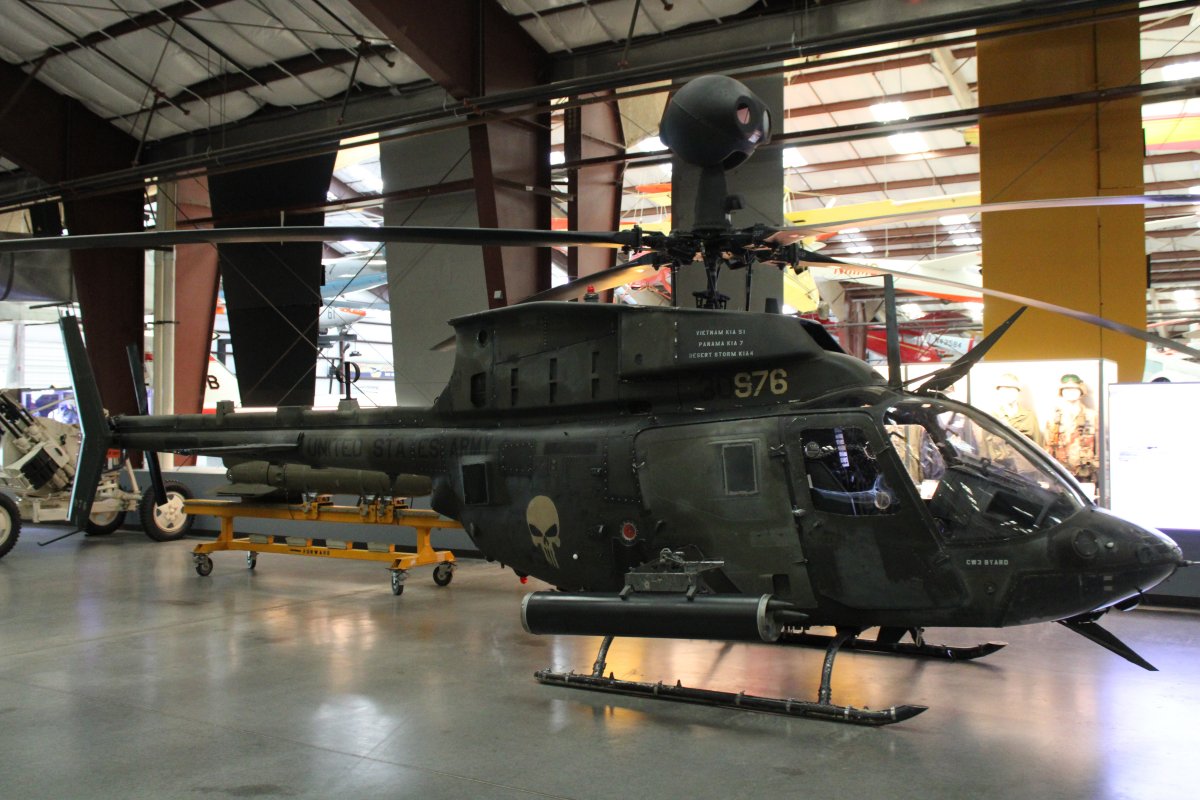 |
|
|
A big, immaculate PBM-5 Mariner. The Mariner was an American patrol bomber flying boat of World War II and the early Cold War era. It was designed to complement the PBY Catalina and PB2Y Coronado in service. A total of 1,366 were built, entering service in September 1940.
PBMs were used on anti-submarine patrols, sinking their first German U-boat, U-158, on 30 June 1942.[6] PBMs were responsible, wholly or in part, for sinking a total of ten U-boats during World War II. PBMs were also heavily used in the Pacific War, operating from bases at Saipan, Okinawa, Iwo Jima, and the South West Pacific.
PBMs continued in service with the U.S. Navy following the end of World War II, flying long patrol missions during the Korean War.[9] It continued in front line use until replaced by its successor, the P5M Marlin. The last Navy squadron equipped with the PBM, Patrol Squadron Fifty (VP-50), retired them in July 1956.
This is the only surviving Mariner and is on loan from the National Air and Space Museum. This particular aircraft served for a while as one of six Mariners assigned to the U.S. Naval Academy, where it was used for Midshipmen pilot/crew training and aviation indoctrination. It last flew in 1971. Notice the tricycle landing gear, unusual for an amphibian.
|
| |
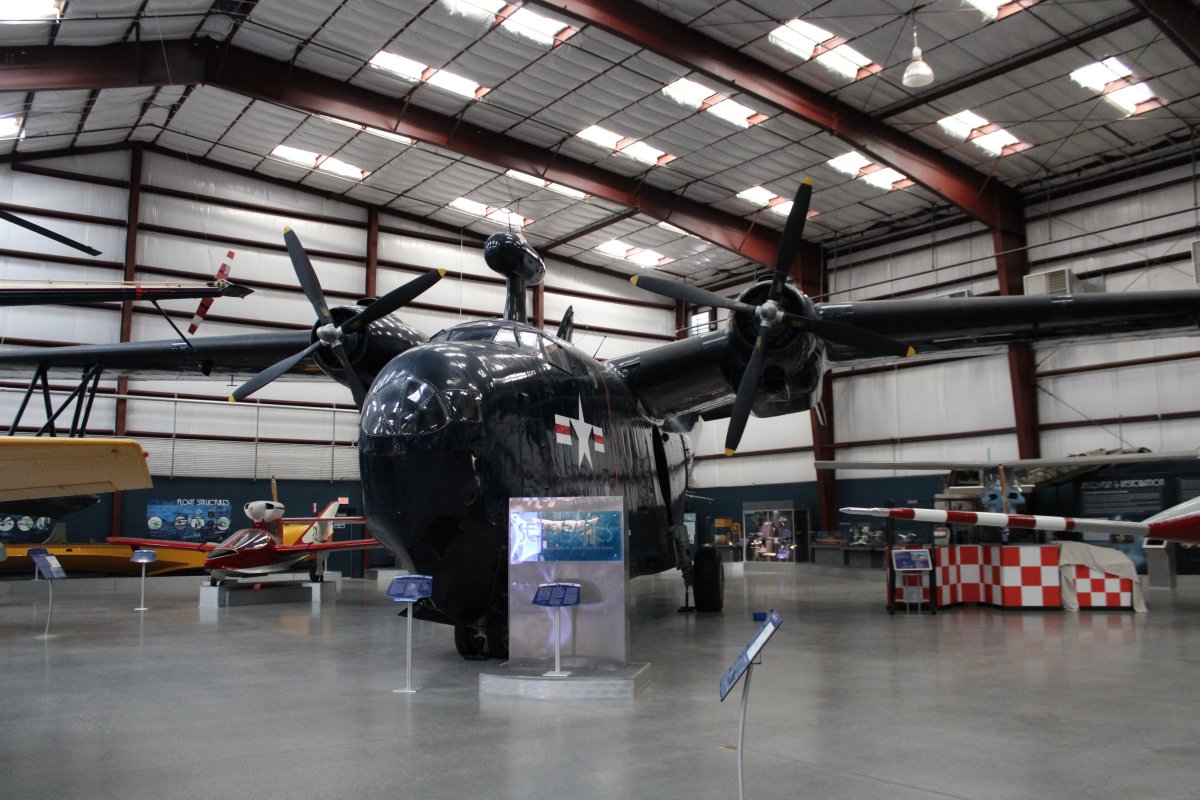 |
|
A model of the Lun-class ekranoplan, a giant sea skimmer built by the Soviet Union in 1987. It flew using the lift generated by the ground effect of its large wings when within about 13 ft above the surface of the water; i.e. ground effect. Although they might look similar to regular aircraft, and have related technical characteristics, ekranoplans like the Lun are not aircraft, seaplanes, hovercraft, nor hydrofoils. Rather, crafts relying on the ground effect form a distinct technological group.
The Lun-class ekranoplan was developed on the basis of the experimental KM ekranoplan, which was nicknamed the "Caspian Sea Monster". Powered by eight engines, the 400-ton Lun was equipped with six nasty SS-N-22 Sunburn anti-ship missiles mounted on top of the fuselage and could carry troops and tanks at speeds over over 500 miles per hour.
The only model of this class ever built, the MD-160, entered service with the Black Sea Fleet in 1987. It was retired in the late 1990s and sat unused at a naval station in Kaspiysk until 2020.
Overall, I enjoyed the air museum very much. Unfortunately, due to the Chinese flu, the restaurant was closed, as well as the bus tour of the Davis Monthan Boneyard.
|
| |
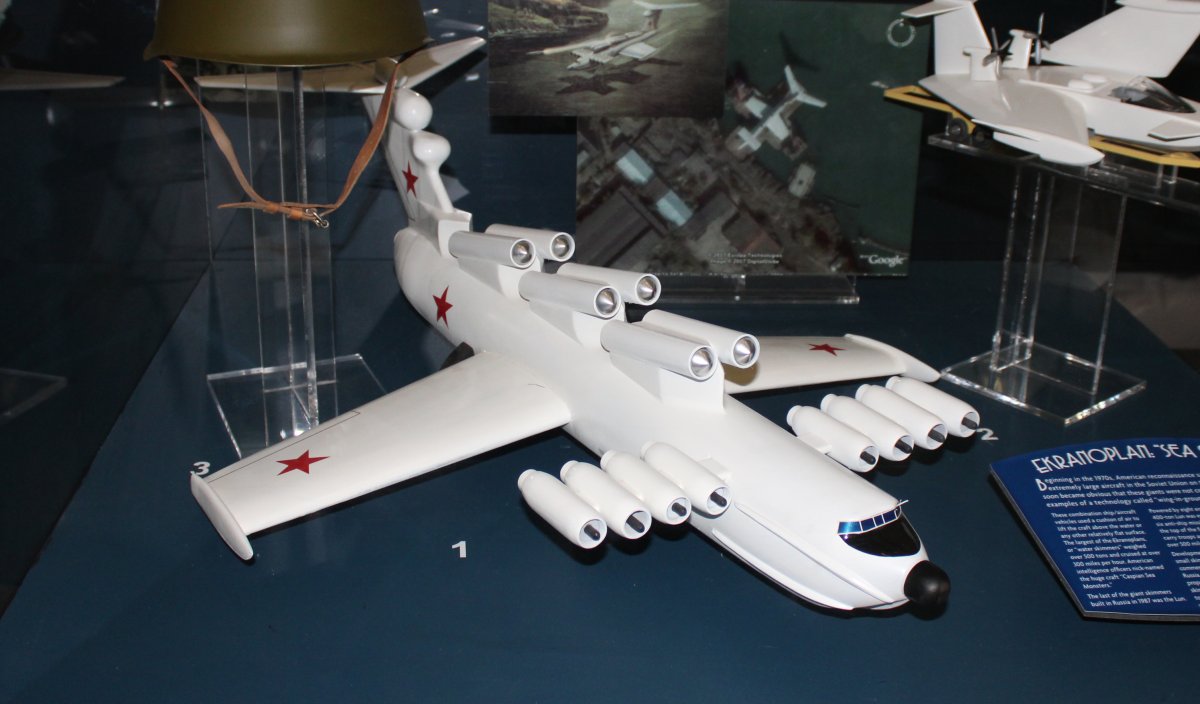 |
|
| |
| |
|
|
|
|
|
|




































































